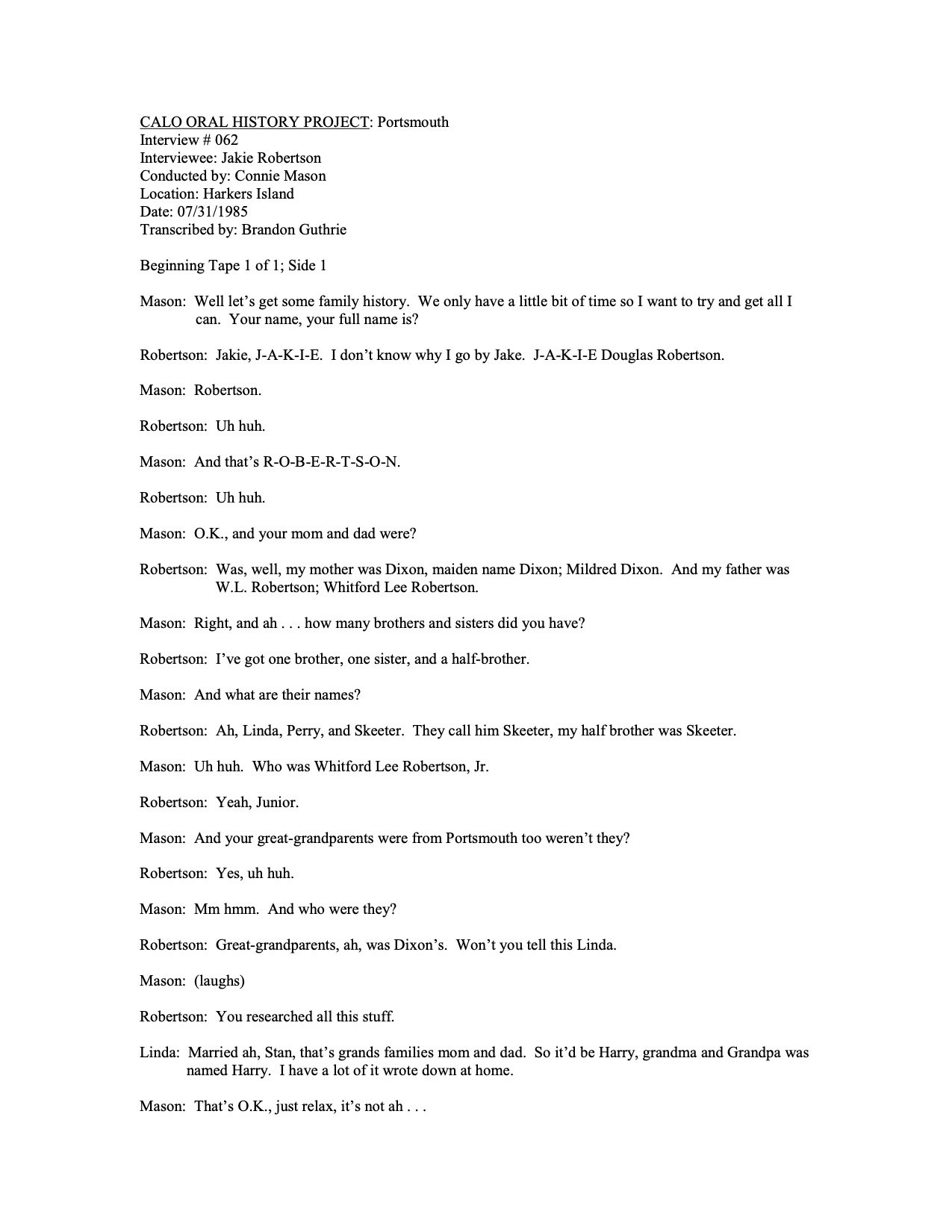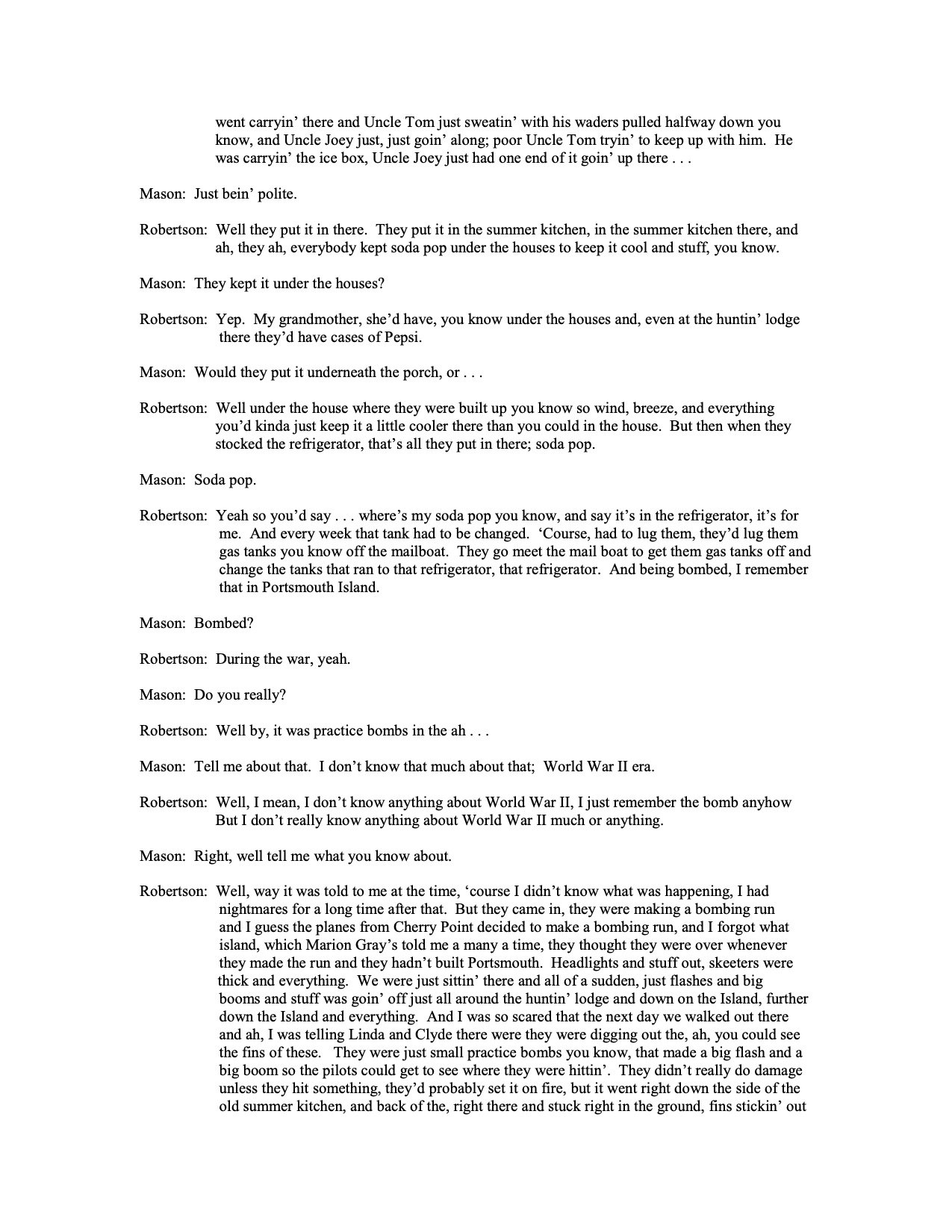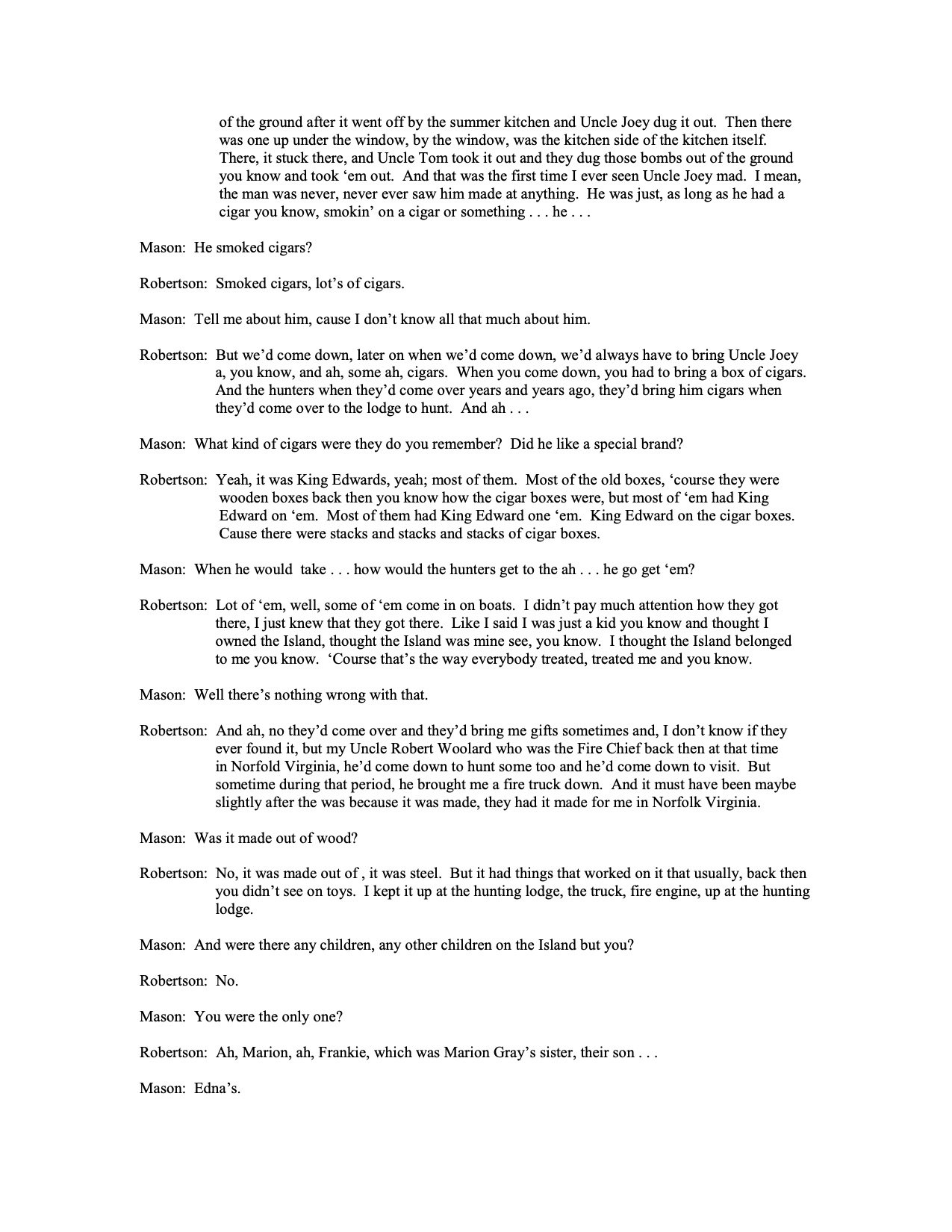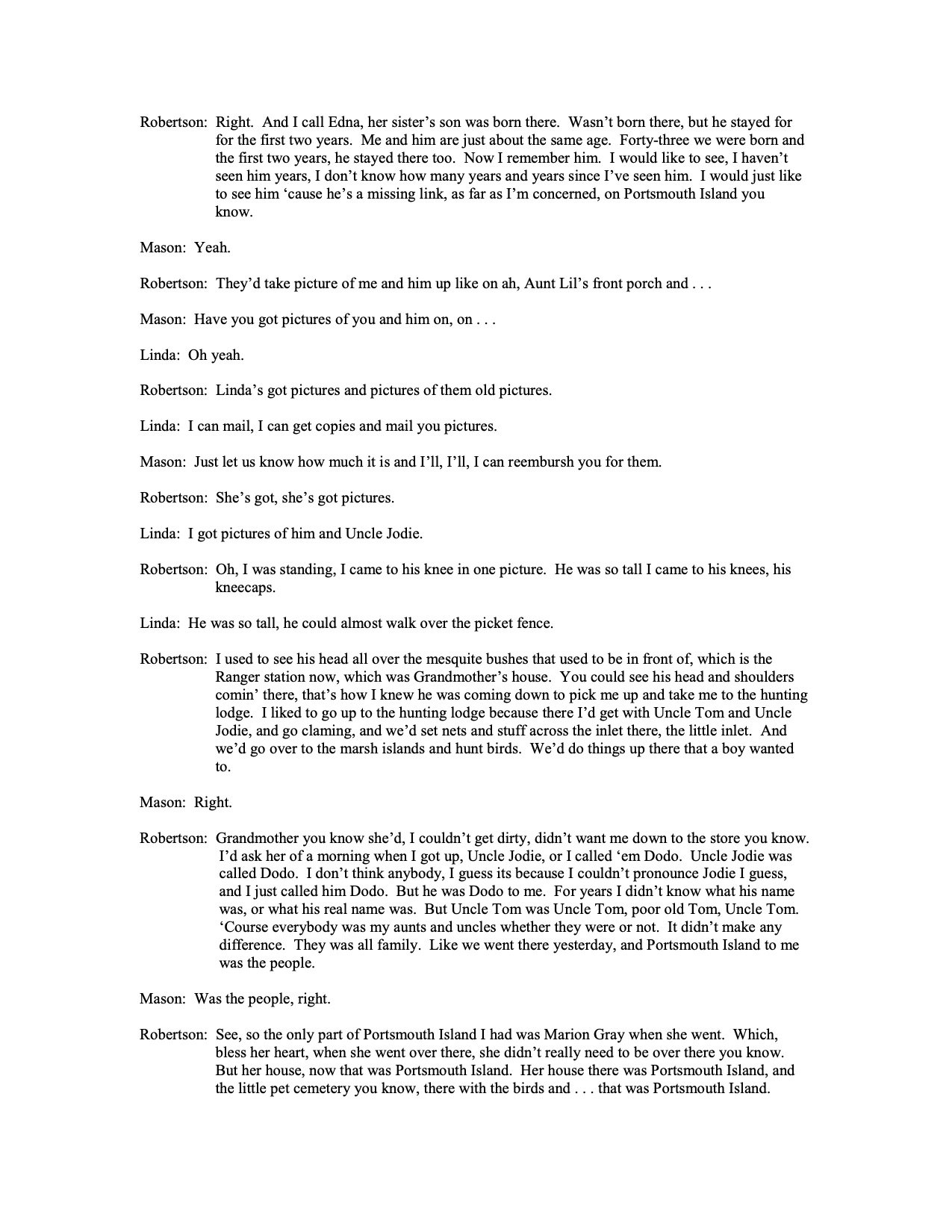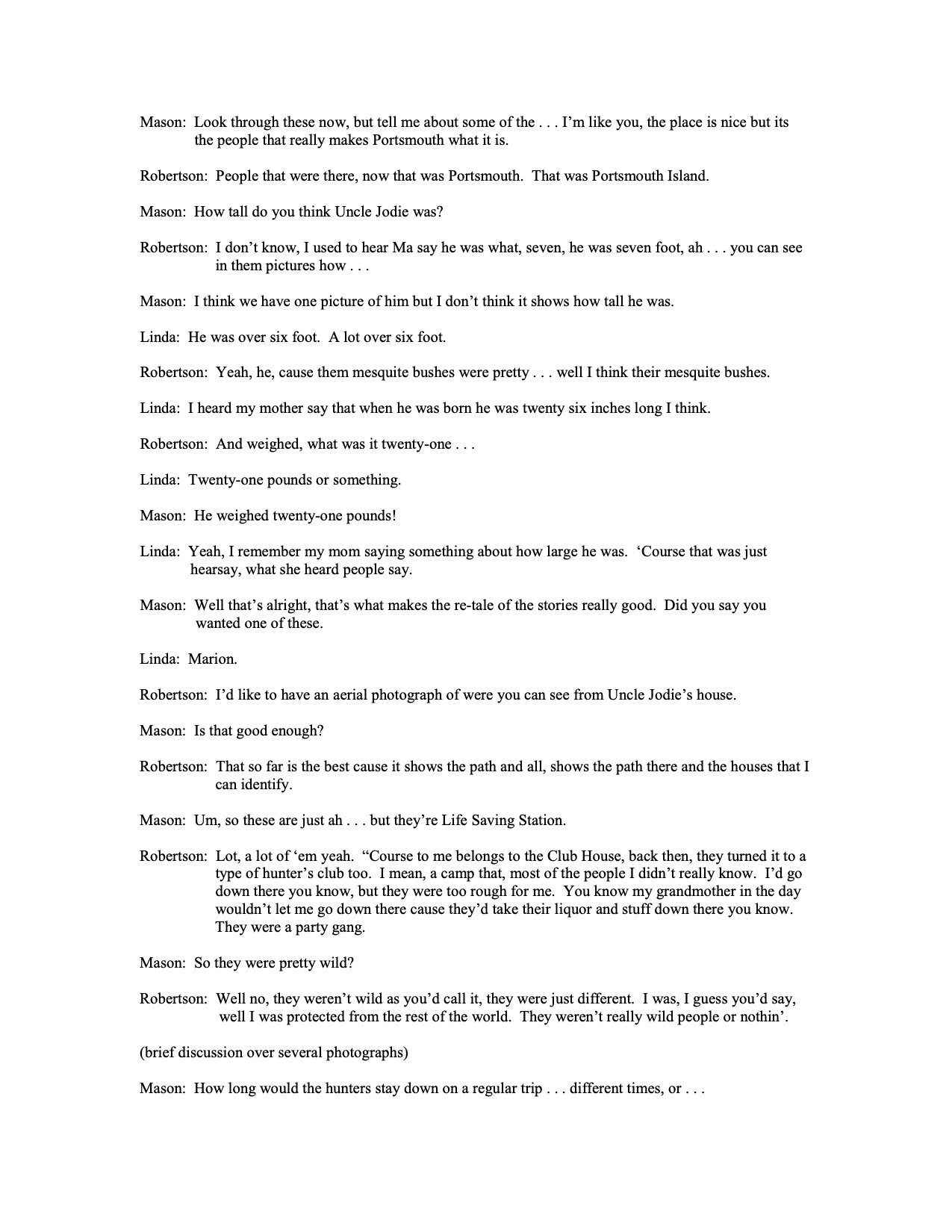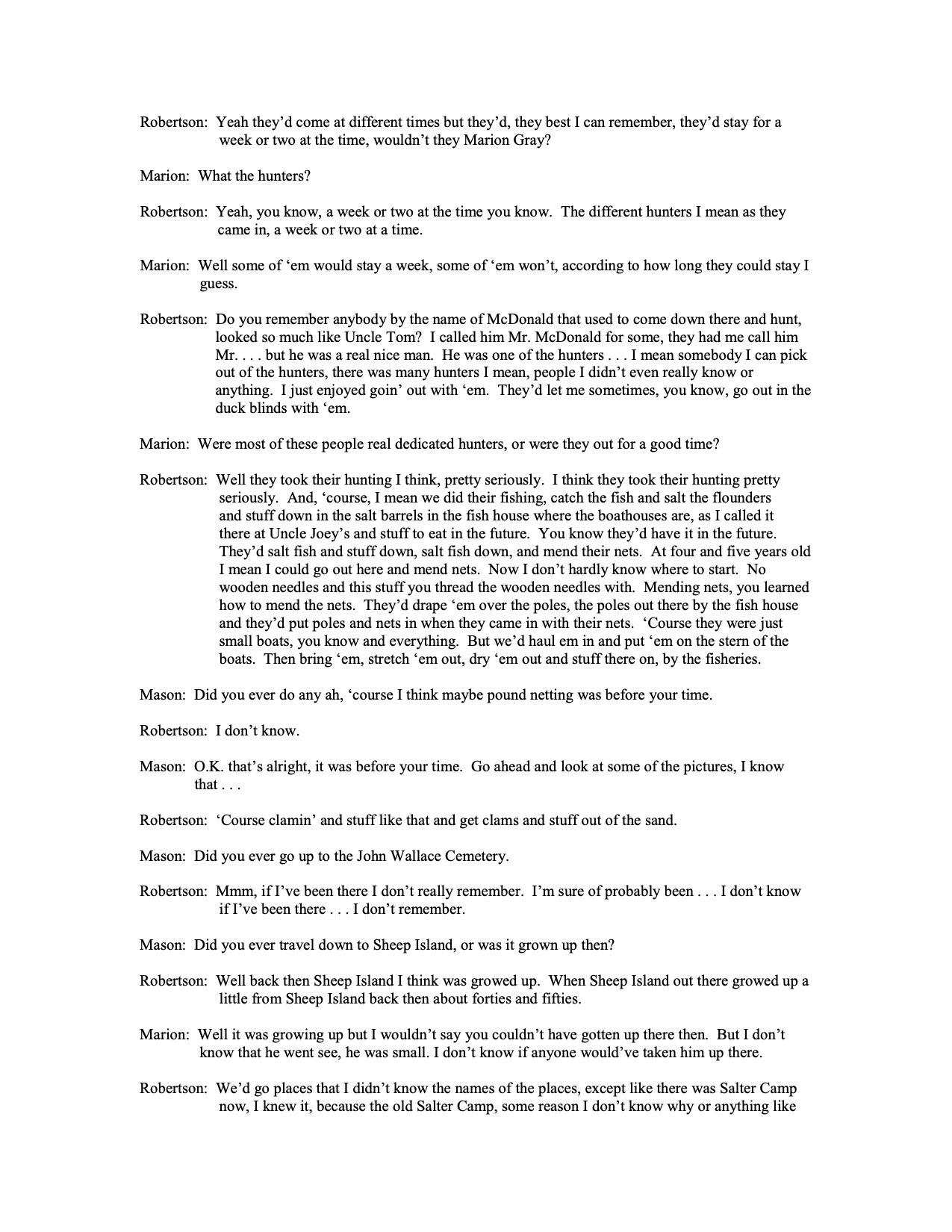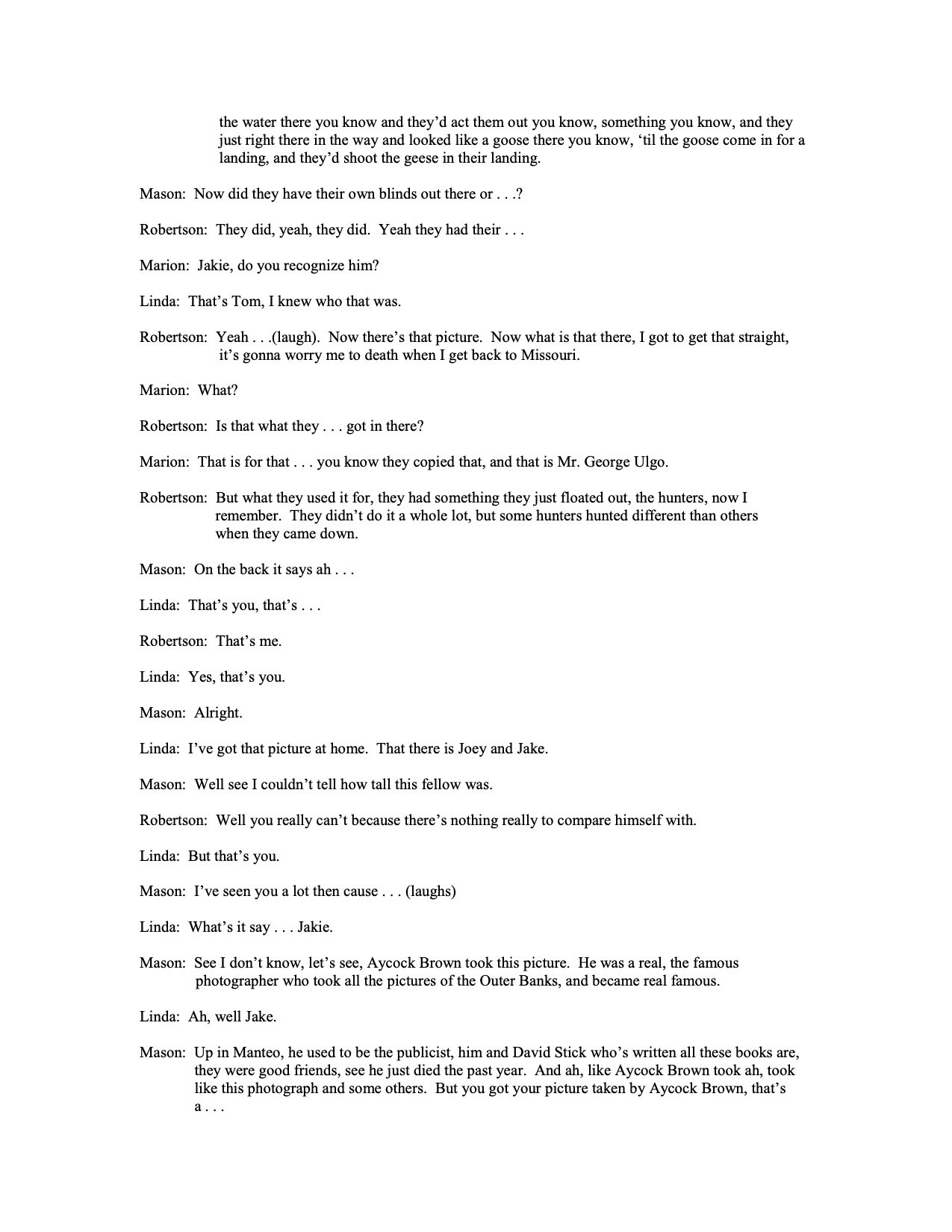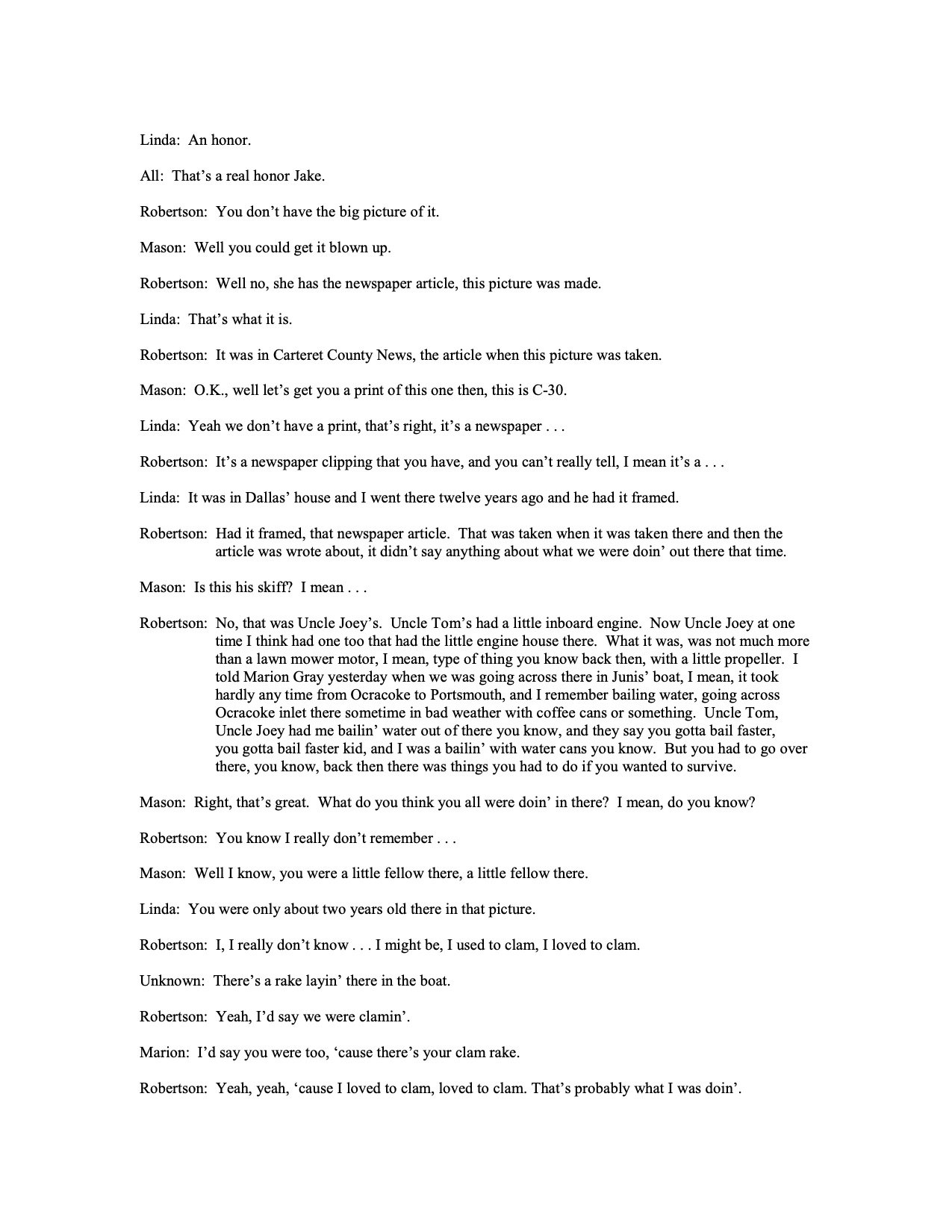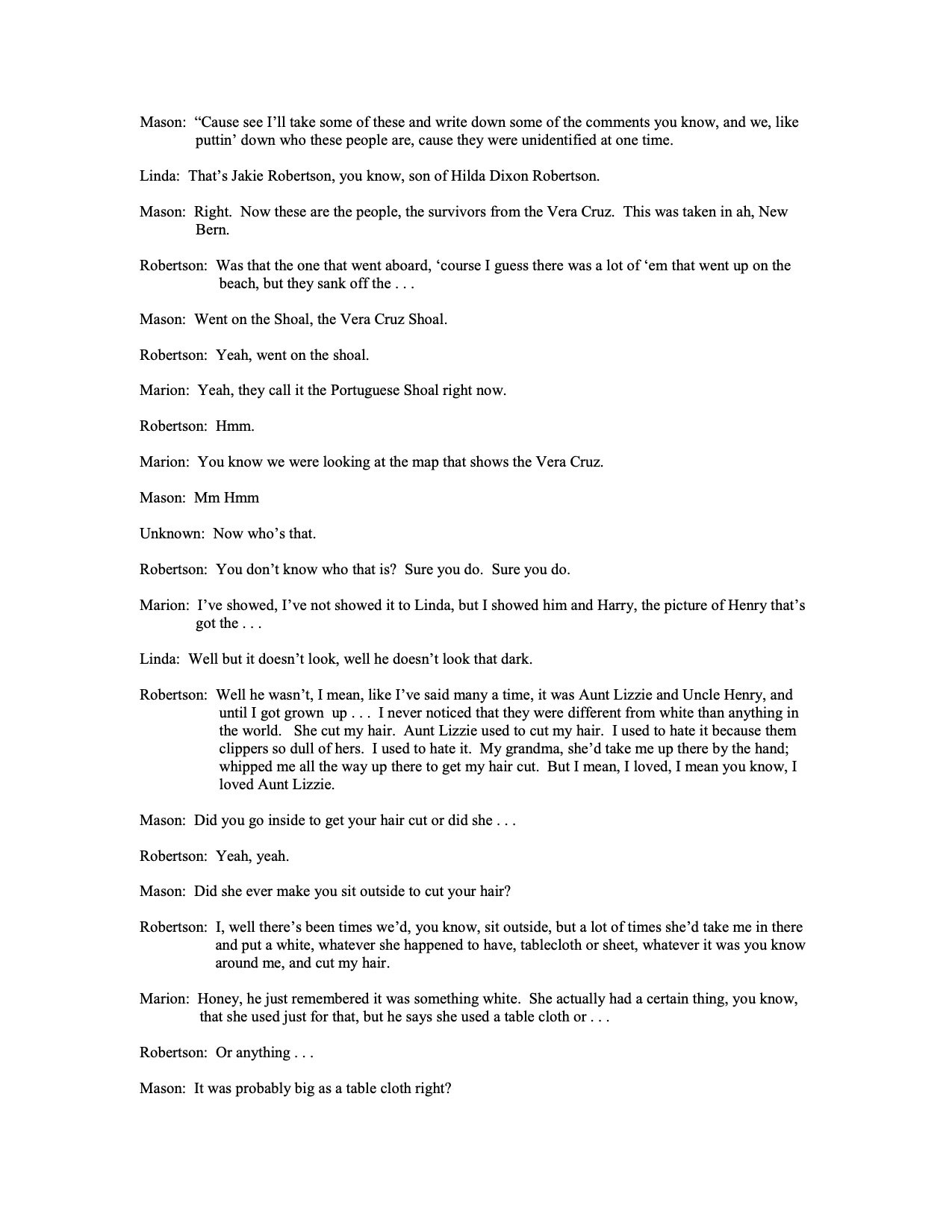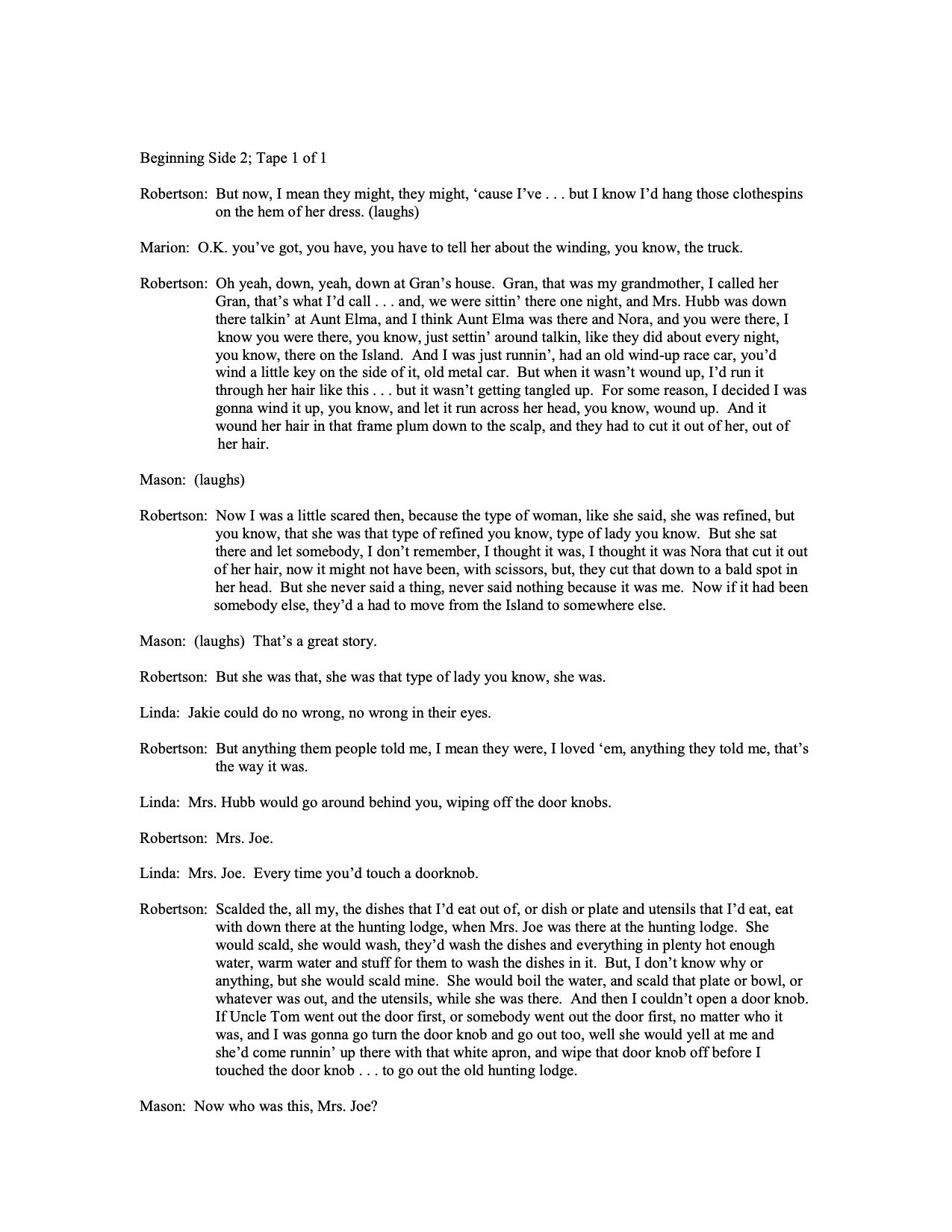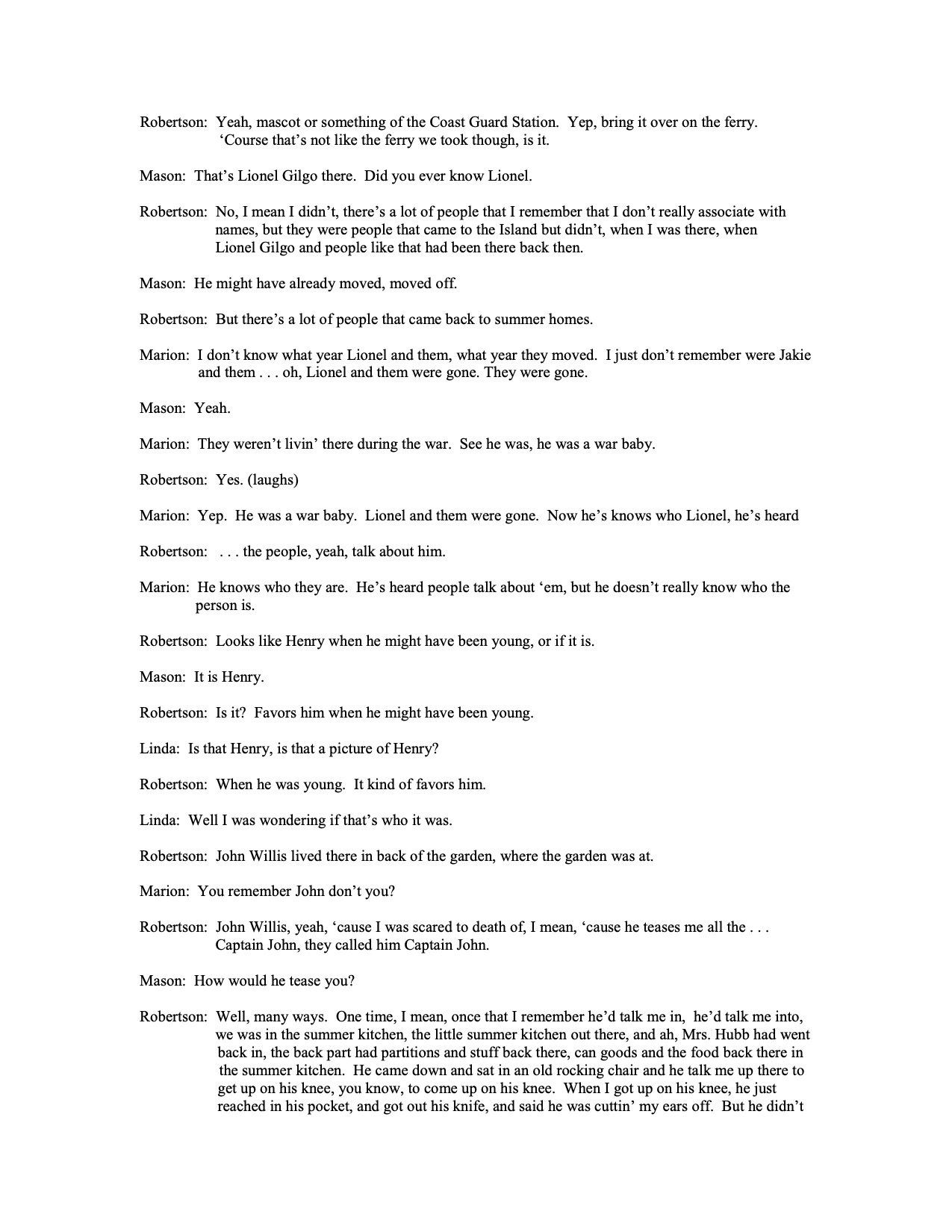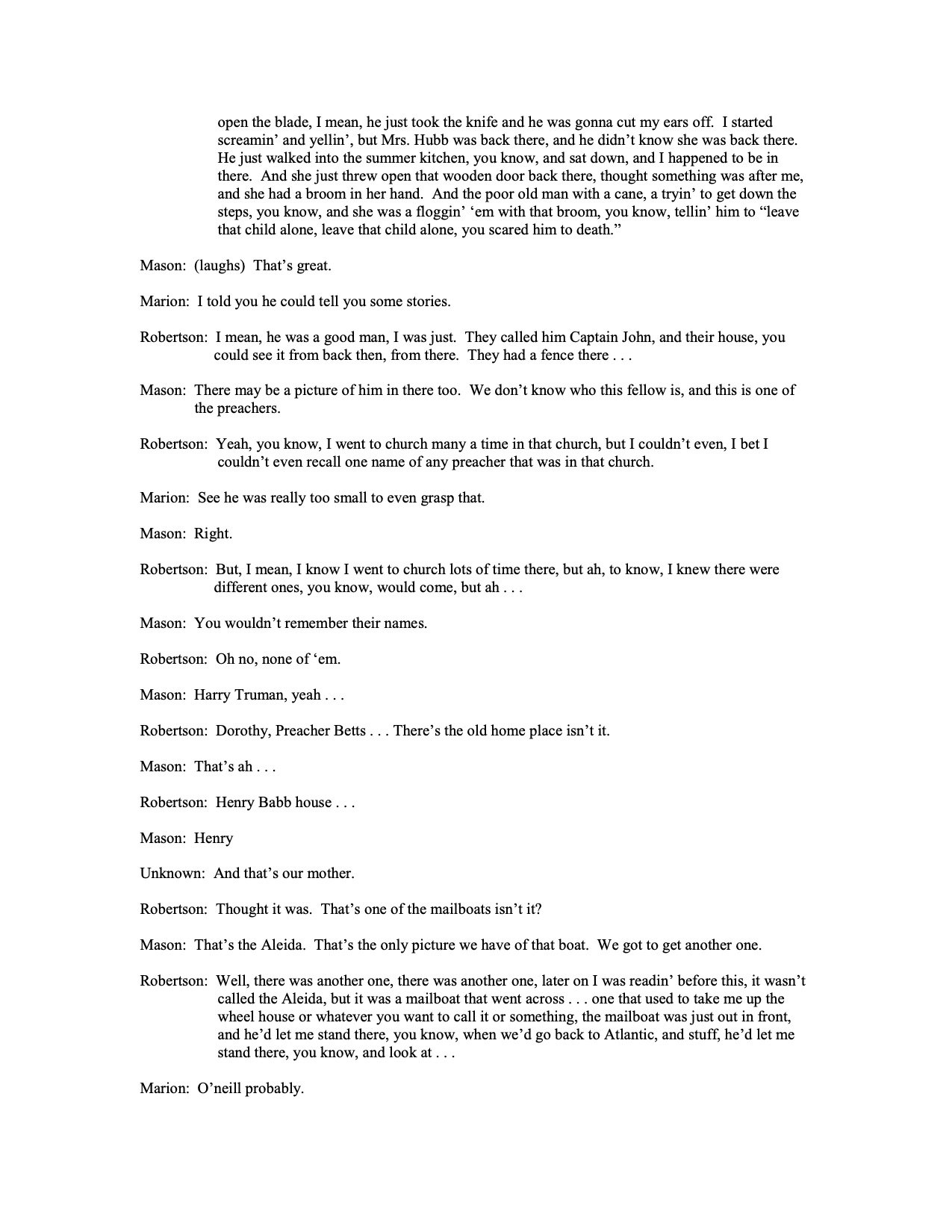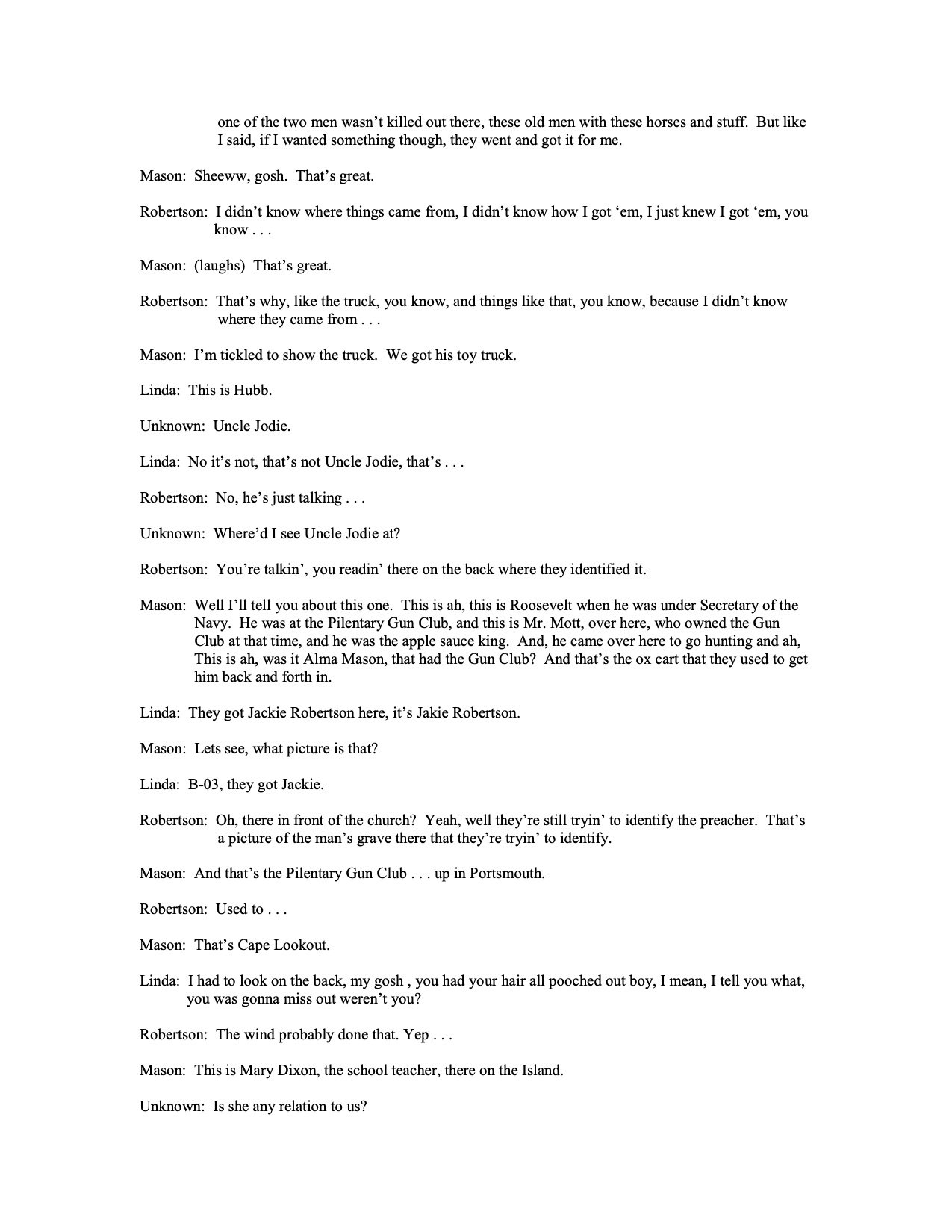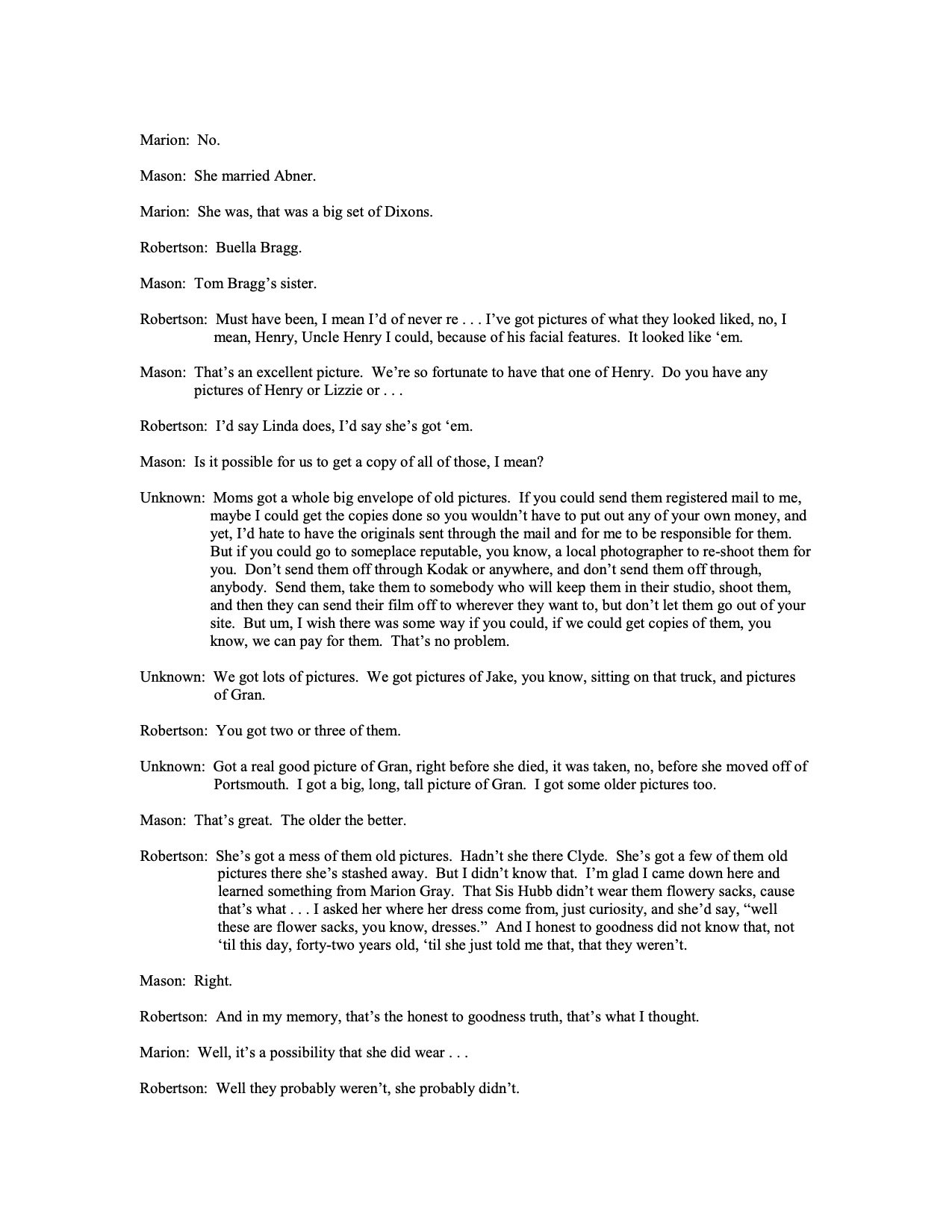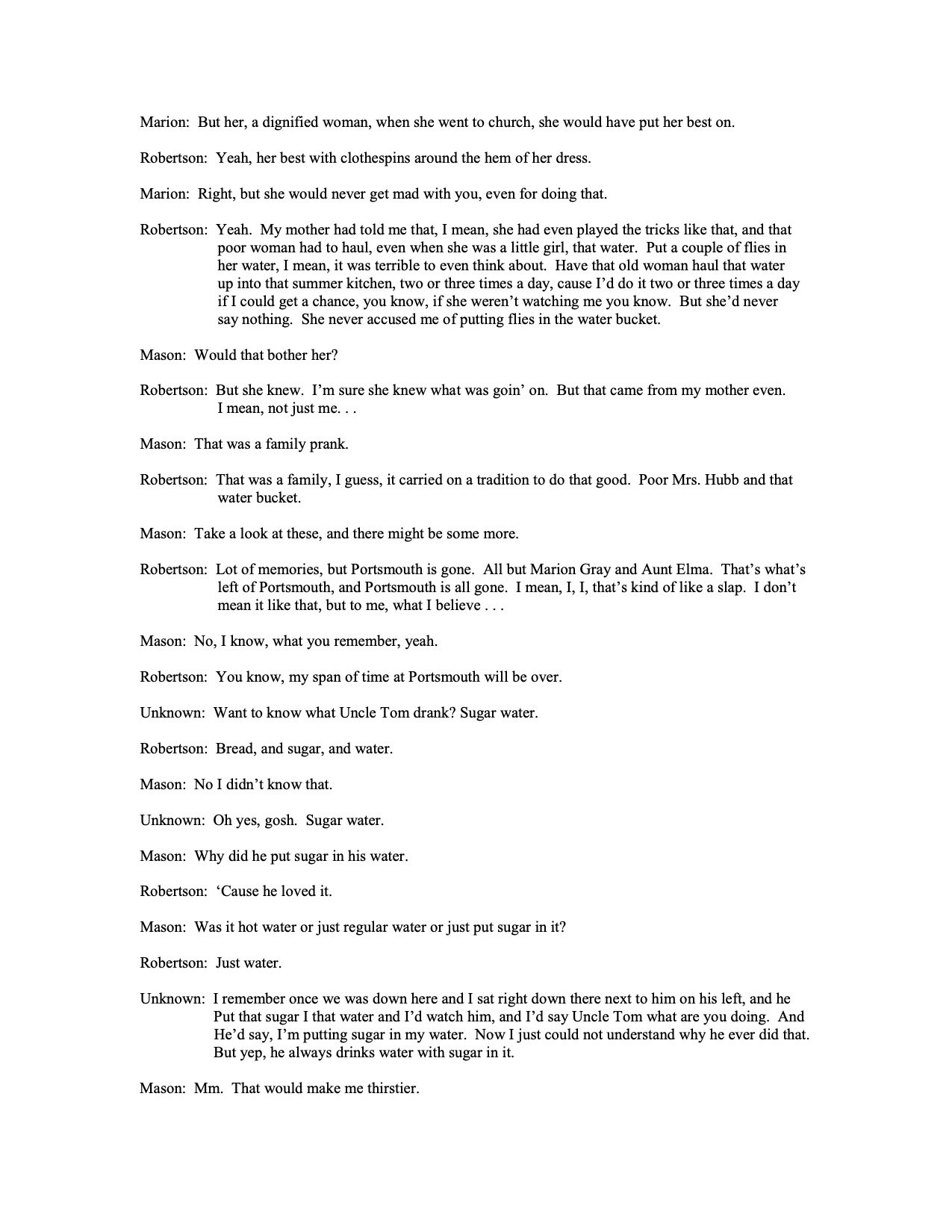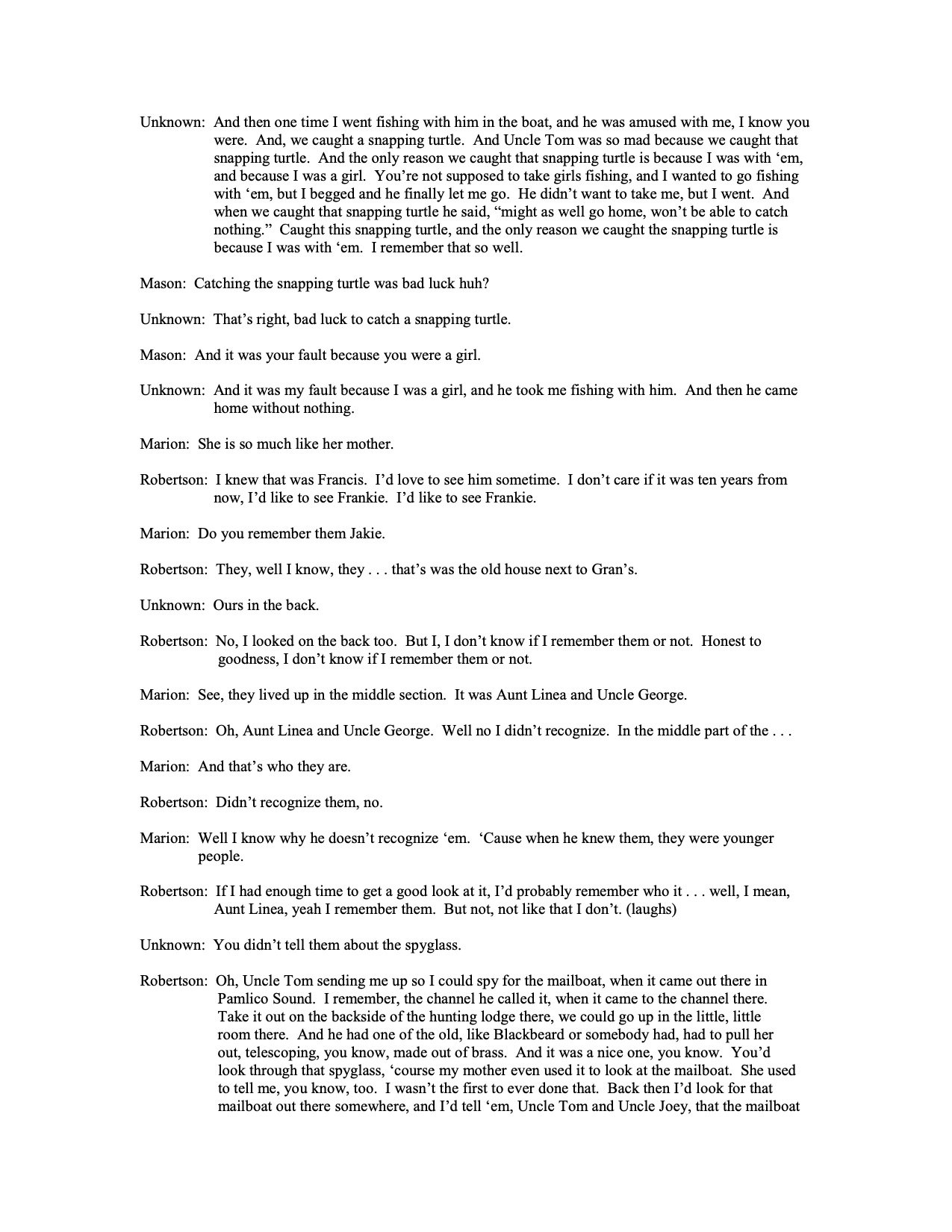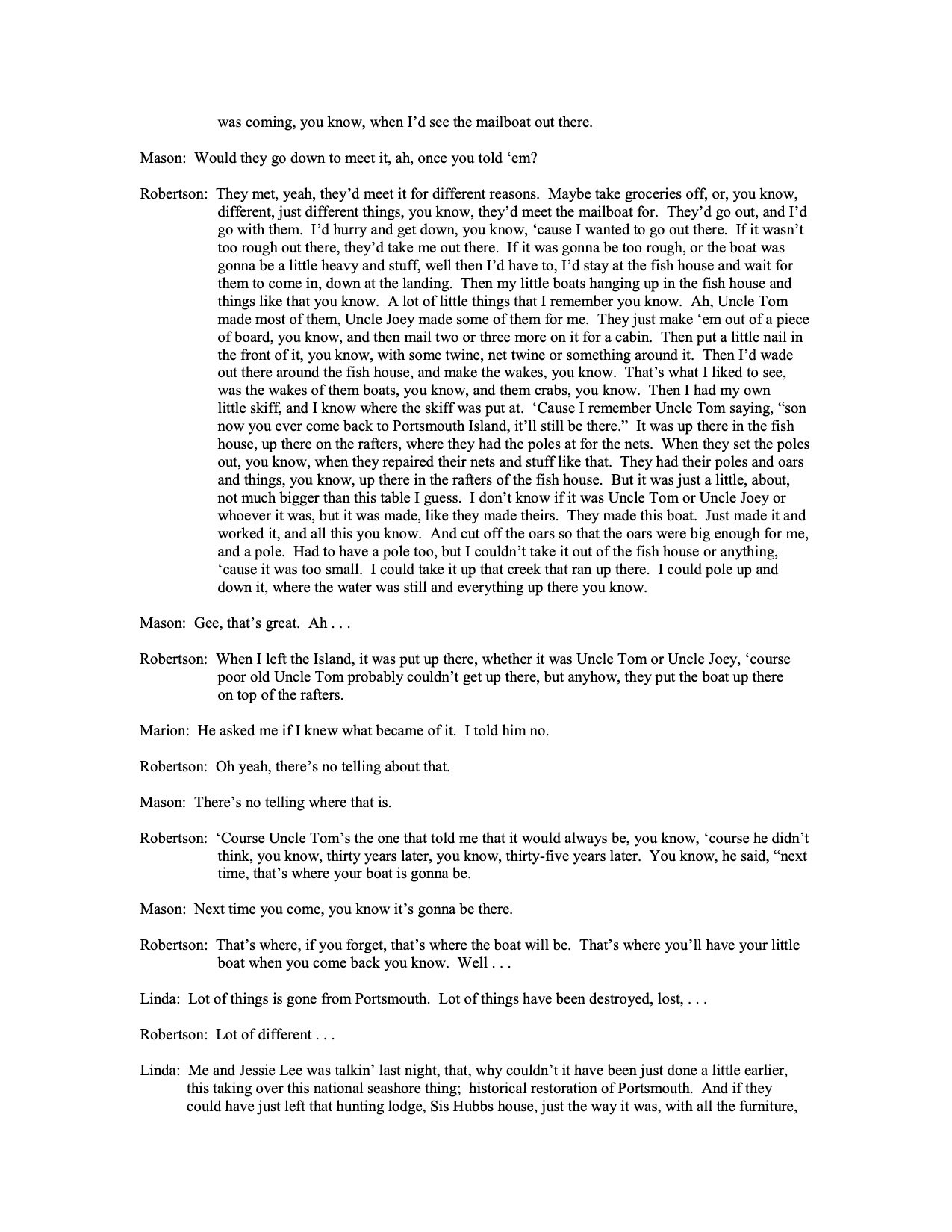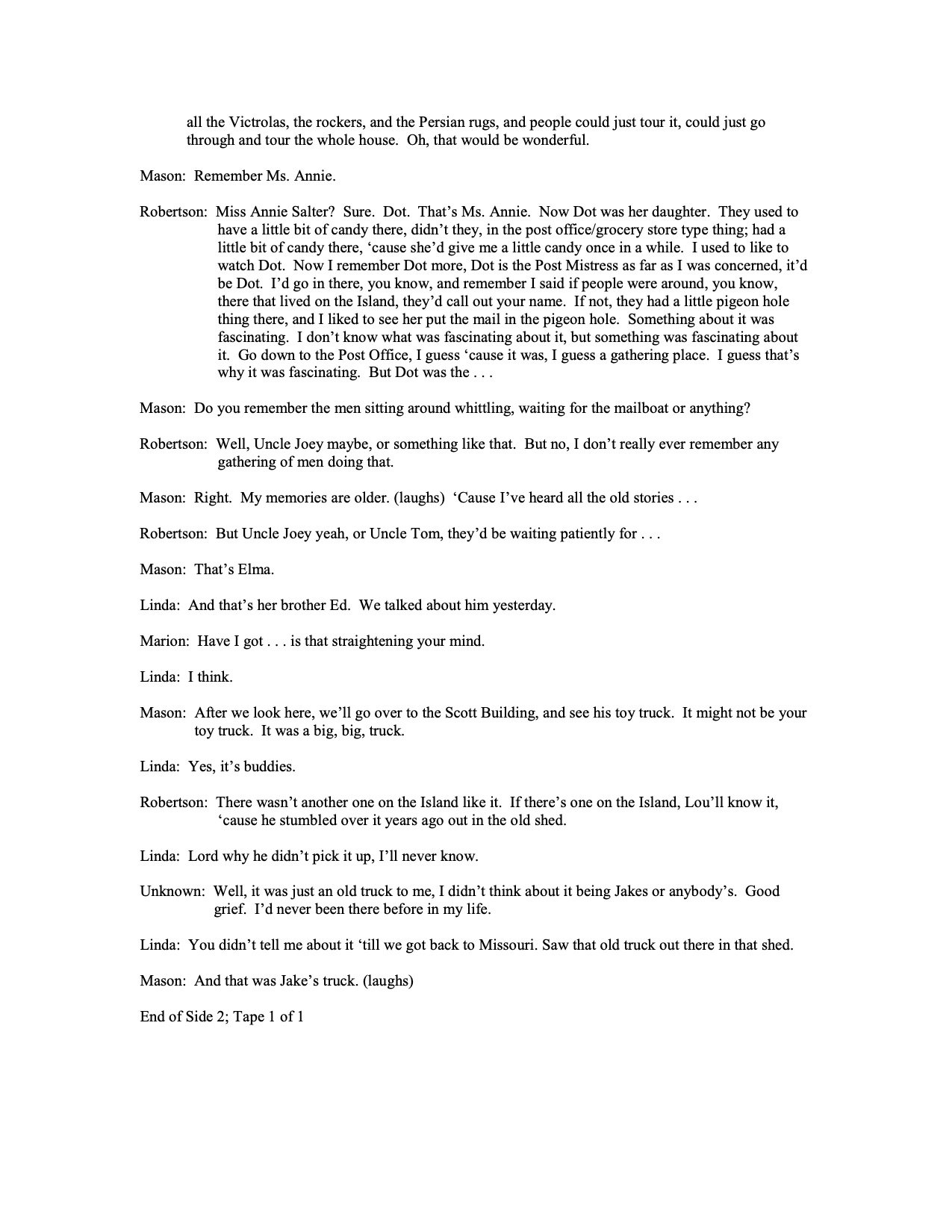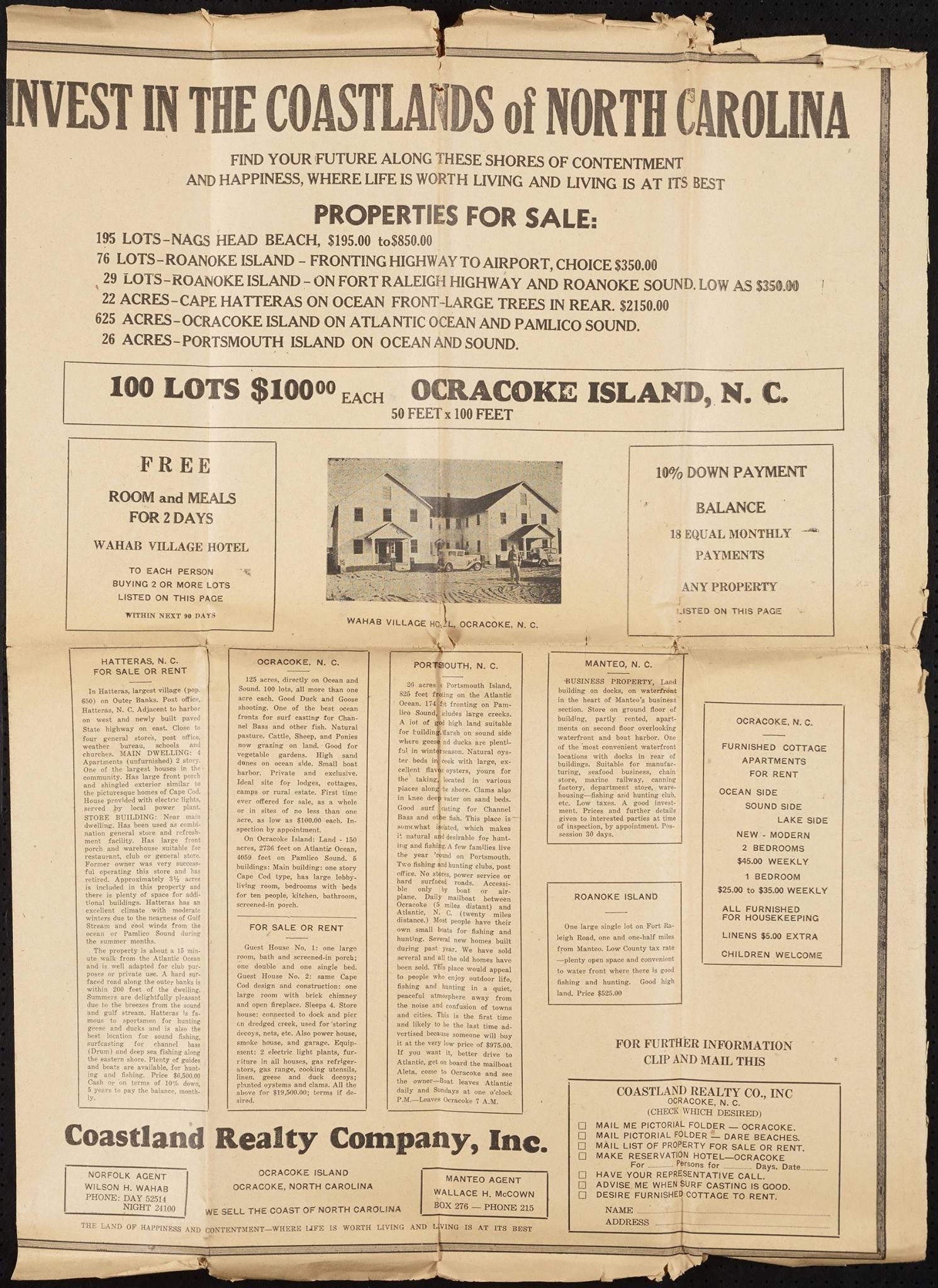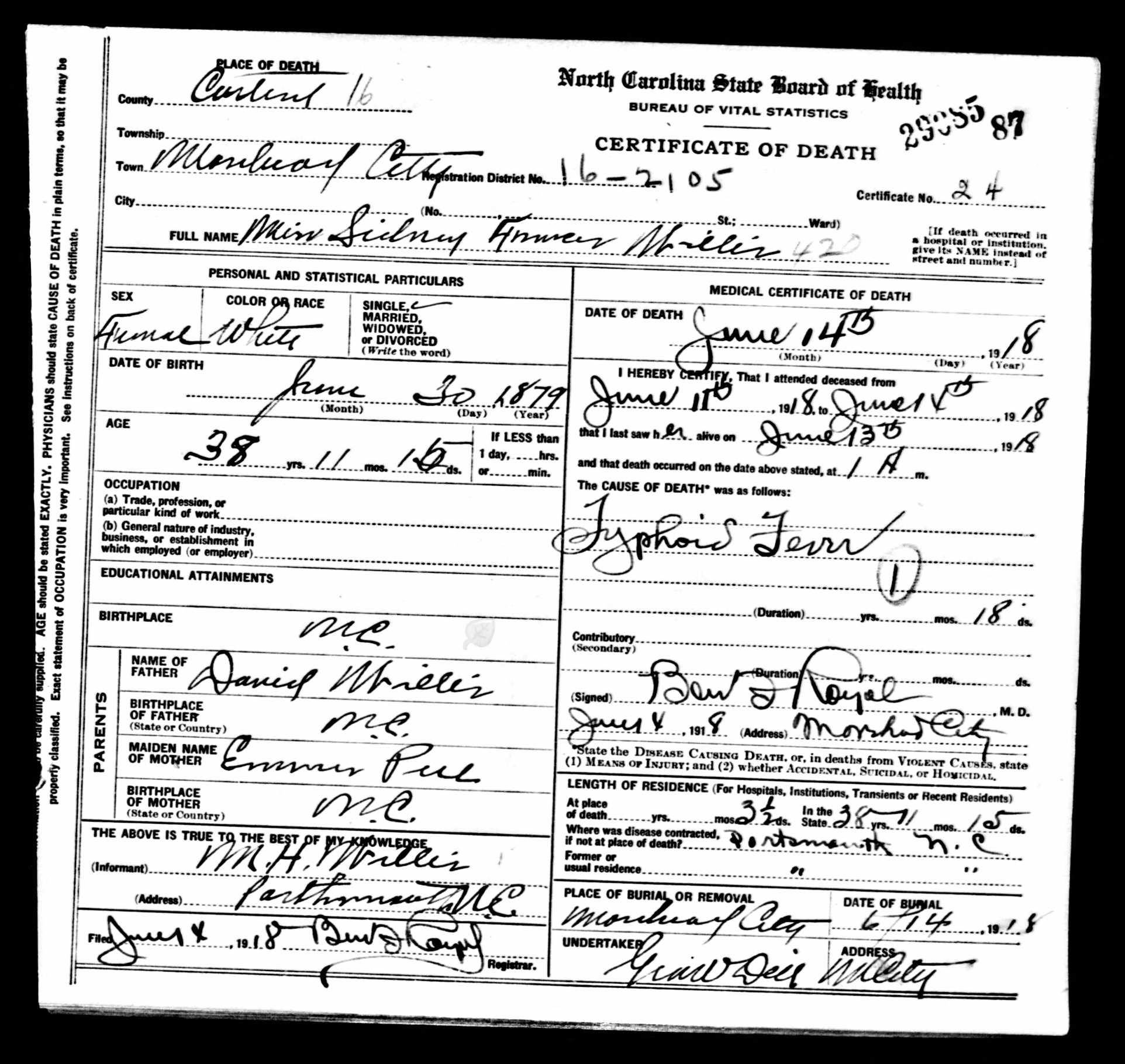Portsmouth Community History
Table of Contents
For fast navigation, click the points to be taken to where they are on the page.
Introduction to Portsmouth Island

On Portsmouth - Dorothy Byrum Bedwell
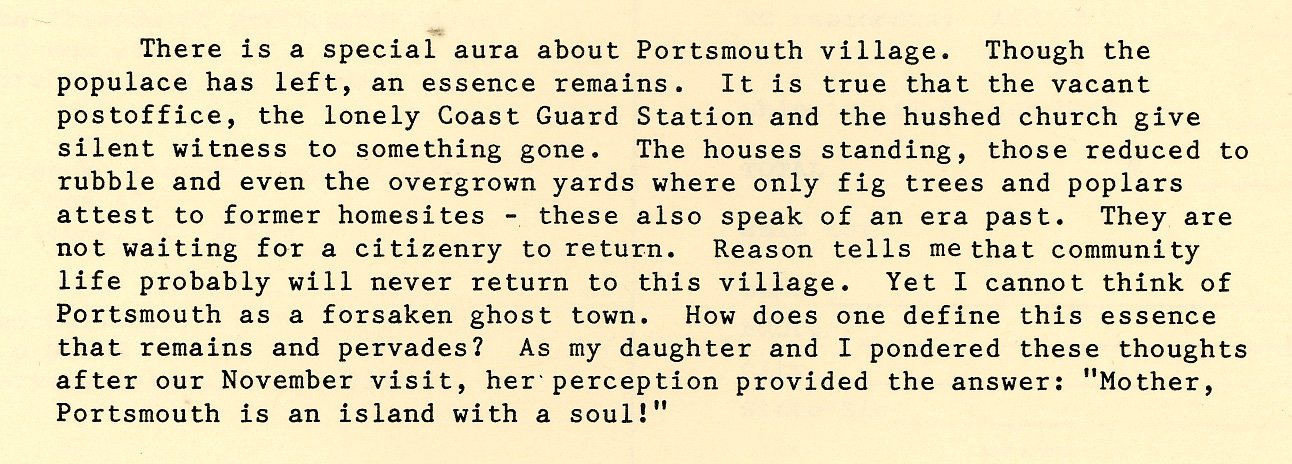

Photo 2: Courtesy Chester Lynn
Portsmouth Social Gatherings
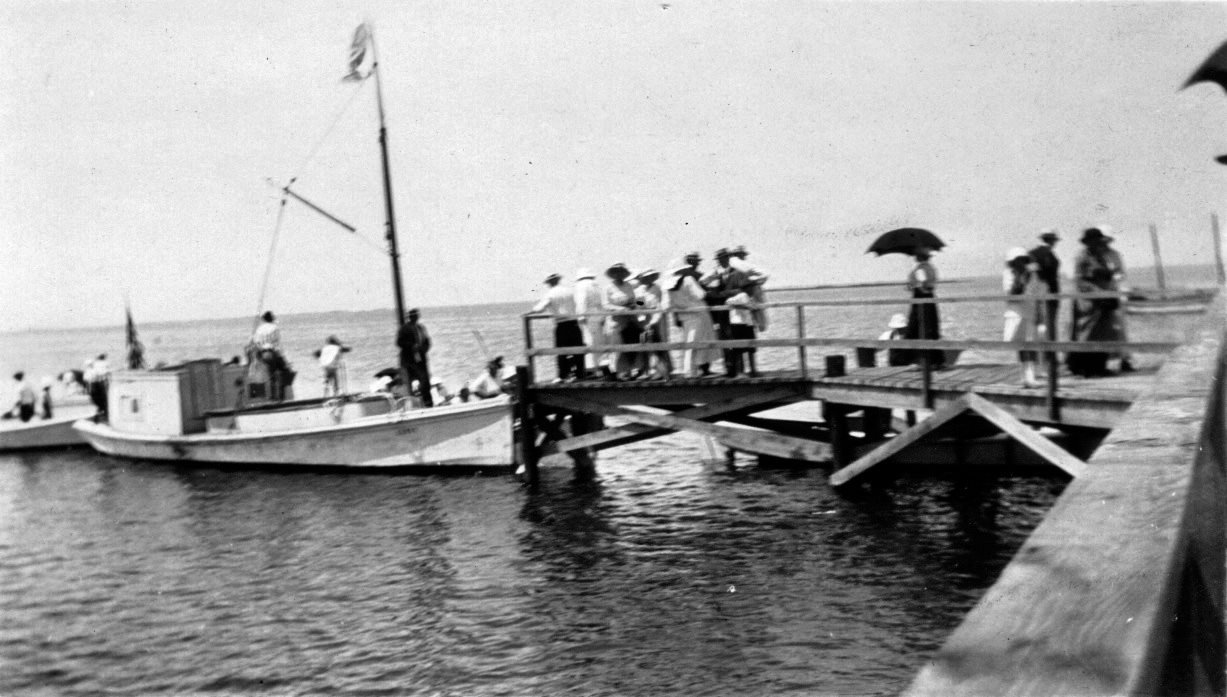
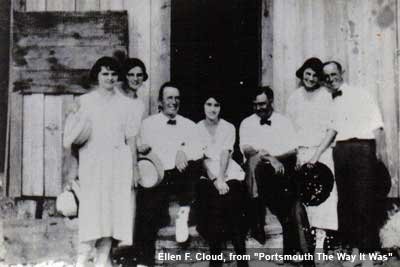
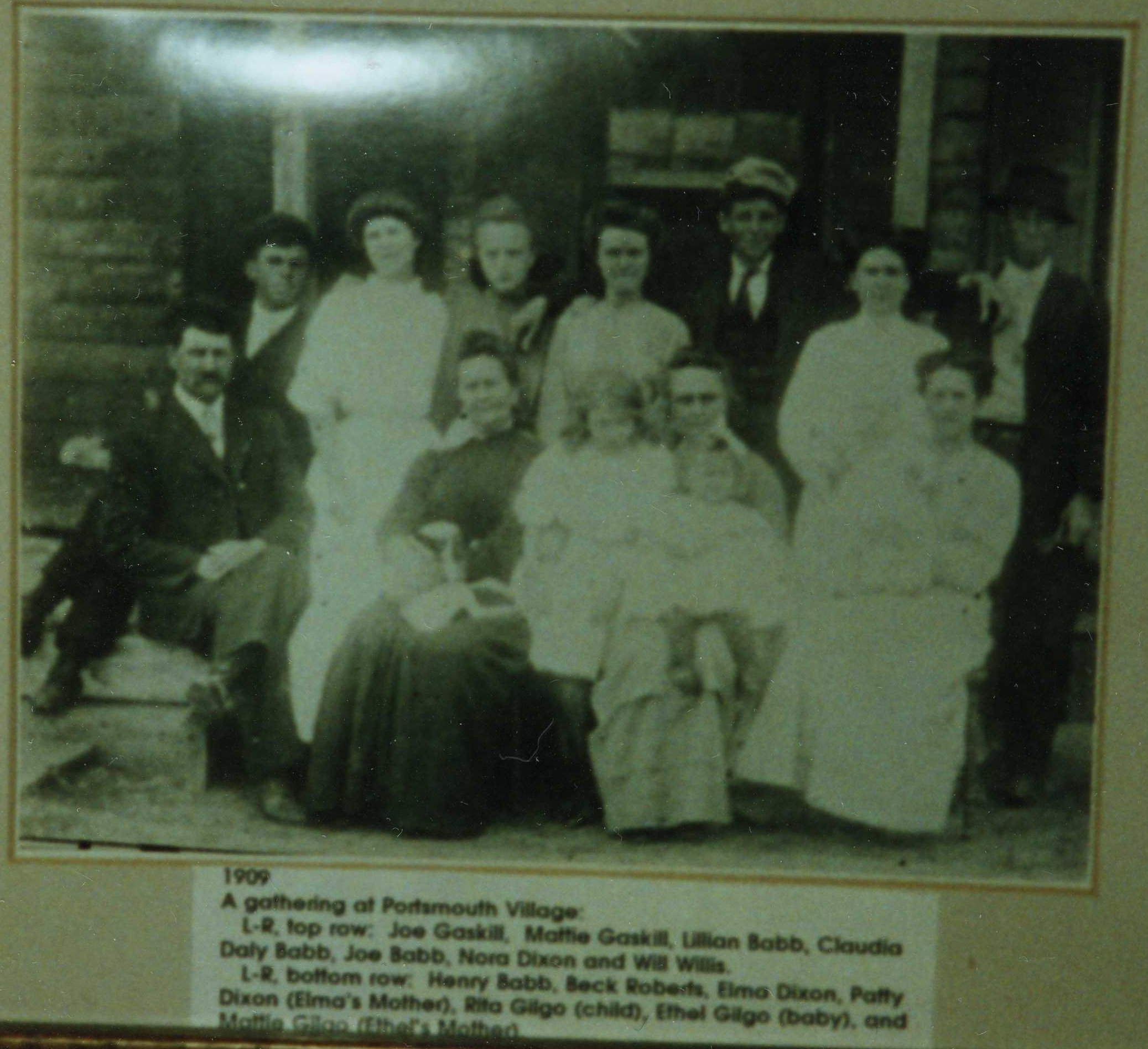
Photo 1: Boats at the Portsmouth dock for the Sunday School Picnic.
Photo 2: Image courtesy of Ellen F. Cloud, from “Portsmouth The Way It Was”
Photo 3: Photo from Dixon-Salter House Visitor Center on Portsmouth, Courtesy Chester Lynn
Advertisements for Portsmouth
Sidney Willis
We found this death certificate for Portsmouth resident Sidney Willis to be fascinating! NC death certificates of that era have some information that those from many other states, and later ones from NC, don't have. As you can see, she died in 1918 and our first thought was Spanish flu. But no, it says typhoid fever! She died in Morehead City where she'd been hospitalized for 3 1/2 days. The interesting part is toward the bottom right where it says that she contracted the disease on Portsmouth. And moving up above again, you can see that she'd had it for 18 days. So, apparently after 2 weeks of illness, she was taken to the hospital in Morehead City where she died.
Photo and caption courtesy of Friends of Portsmouth Island Facebook page.
A Tribute to the Life of Jessie Lee Babb Dominique
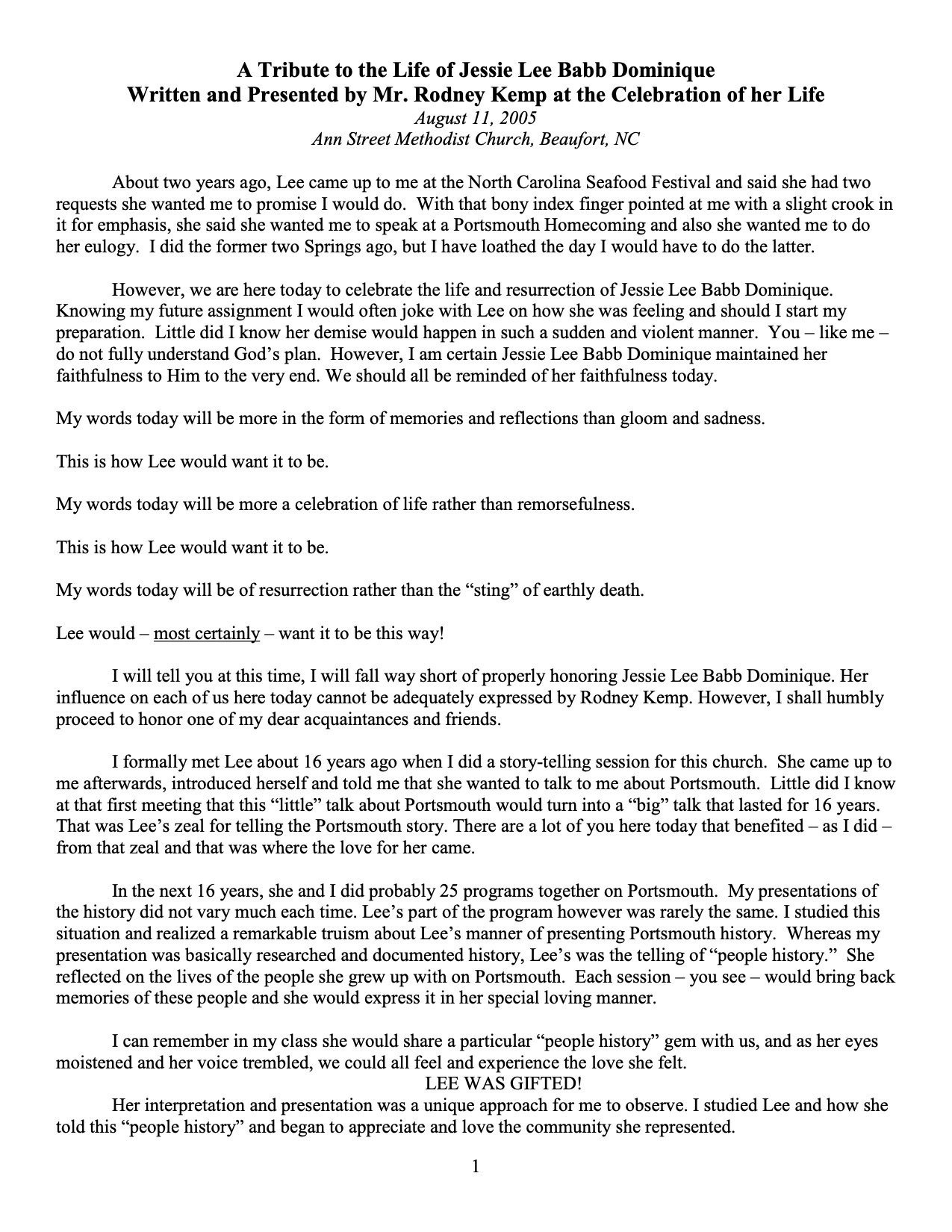
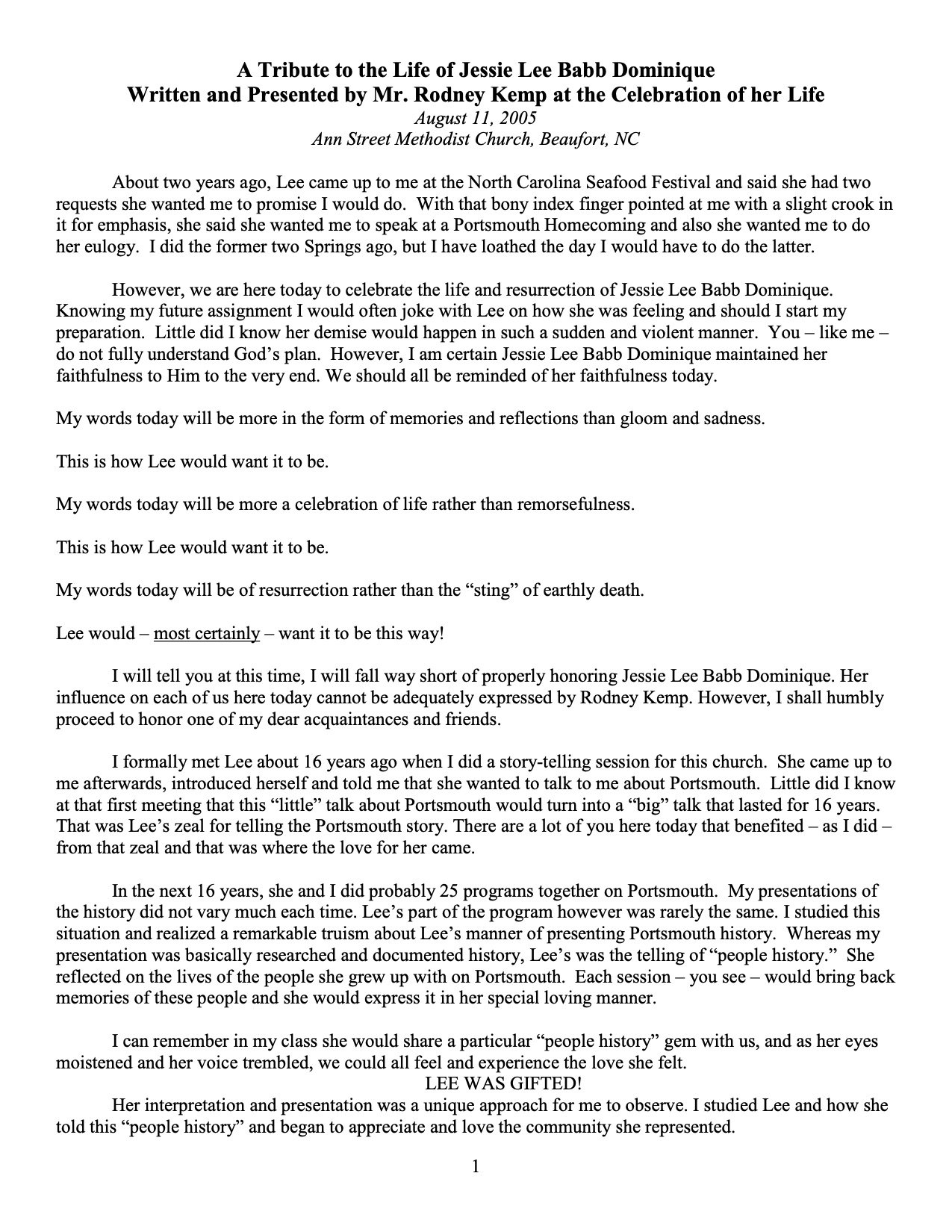

The Island that is Slowly Disappearing
Portsmouth was first settled by whites in the year 1700. Before it was called “Crotan,” home of the Indians. Portsmouth Island, N.C., was established as a toen in the year 1753 by an act of the N. C. General Assembly. John Kersey was the first owner. It was laid out in one-half acre lots. A Mr. John Tolson bought the first lot in 1756 for twenty shillings. Portsmouth was once a thriving sea port town, the most beautiful of all the islands on the Outer Banks. Most of the first settlers came from England, the people still have an old English brogue. In 1846 there was a Federal Hospital, two churches, a school, an Academy, Customs House, Naval supplies store, three or four privately owned stores and even a barroom.
At one time many ships came in the inlet between Portsmouth and Ocracoke. Portsmouth was the chief seaport along the Atlantic Outer Banks. Here boats from Norfolk, VA., Washington, NC., Morehead City, Beaufort, Elizabeth City, New Bern, NC., and other towns would pick up their cargo.
Portsmouth had many nice homes located all along the Island which was five miles long. The houses were so pretty painted white with all the green grass just like a carpet on the white sand. Most of the homes on Portsmouth were large ones which were kept nice and clean. The people had small houses built in the side or back yard to cook in; this was a kitchen and dining room. Here they would cook their fish so their big house would not be scented and hot in the summer. They also had what people in those days called a milk house in their yards to put their fod in so it would stay cool in the summer. Everything on the Island was so clean. I have been told that a man could wear a white shirt for a week without getting it soiled for there was no dust and dirt on this island.
The good folks on Portsmouth always opened their homes to everyone. People who came to the island always felt welcome and wanted to go back again. I wish everyone could have seen the island as I did when I was a boy.
Families by the name of Wallace, Blunt, Dixon, Gilgo, Styron, Daly, Roberts, Robinson, Babb, Nelson, Mason, Tolson, Kersey, Williams, McWilliams, Salter, Willis, Pigott and many others lived on Portsmouth Island. After so many storms the people started to move away. Their homes were destroyed or torn down and moved to the mainland. Some of their homes were sold to other people for hunting or fishing camps. Some of the old structures still stand on the island.
When I was a boy a man could walk from Portsmouth to Cape Lookout on dry land. Today you have to go by boat with four inlets to cross.
Most of our family, the Salters, are now living in Atlantic and New Bern, NC. The Roberts moved to Oriental, NC, the Robinsons, Nelsons, and Masons to Atlantic, NC. The Babbs moved to Norfolk, VA, and Beaufort, NC, and others to towns all along the coast. Portsmouth Island people are found in lots of places.
Only three people have their homes on the Island now: Henry Pigott, Elma Dixon and Marion Gray Babb (Mrs. Lillian Babb’s daughter). These people do not stay there all the time, they come to the mainland in the winter time.
Portsmouth Island had people, ponies, cattle, sheep, hogs, and plenty of grazing land. All the livestock and most all of the people are long gone from this island that is so dear to my heart. It is slowly disappearing into the sea. At this time there is only a narrow strip of beach from the Sound to the sea. The most beautiful and most thriving of all the islands on the Outer Banks that was so well populated at one time and such a nice place for people to live and raise their families is just a memory to the folks that lived there and loved it so well.
THE ISLAND THAT IS SLOWLY DISAPPEARING from Portsmouth Island Short Stories and History, published 1972 By Ben B. Salter, born on the Island June 30, 1899
Portsmouth Oral History Interviews
Elma Dixon
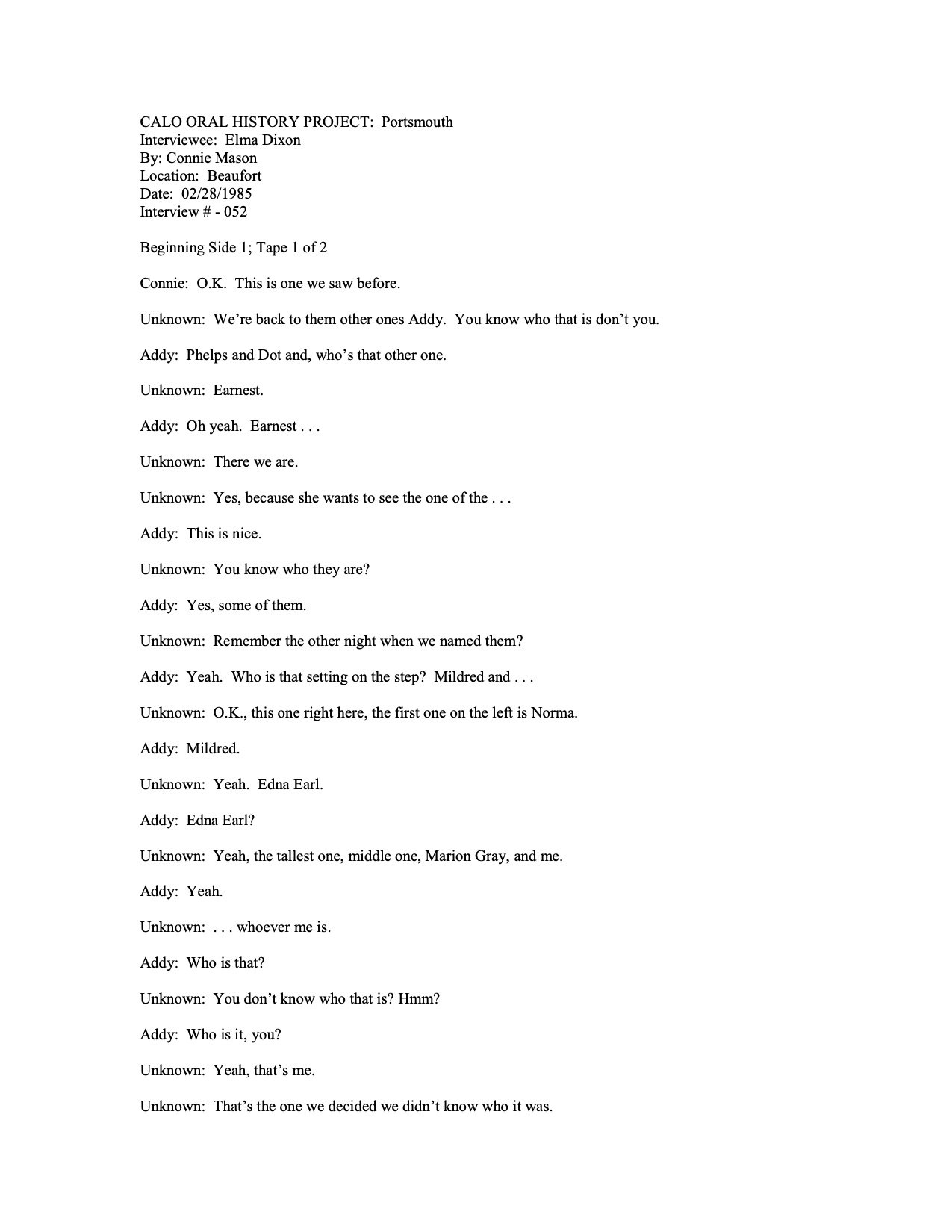
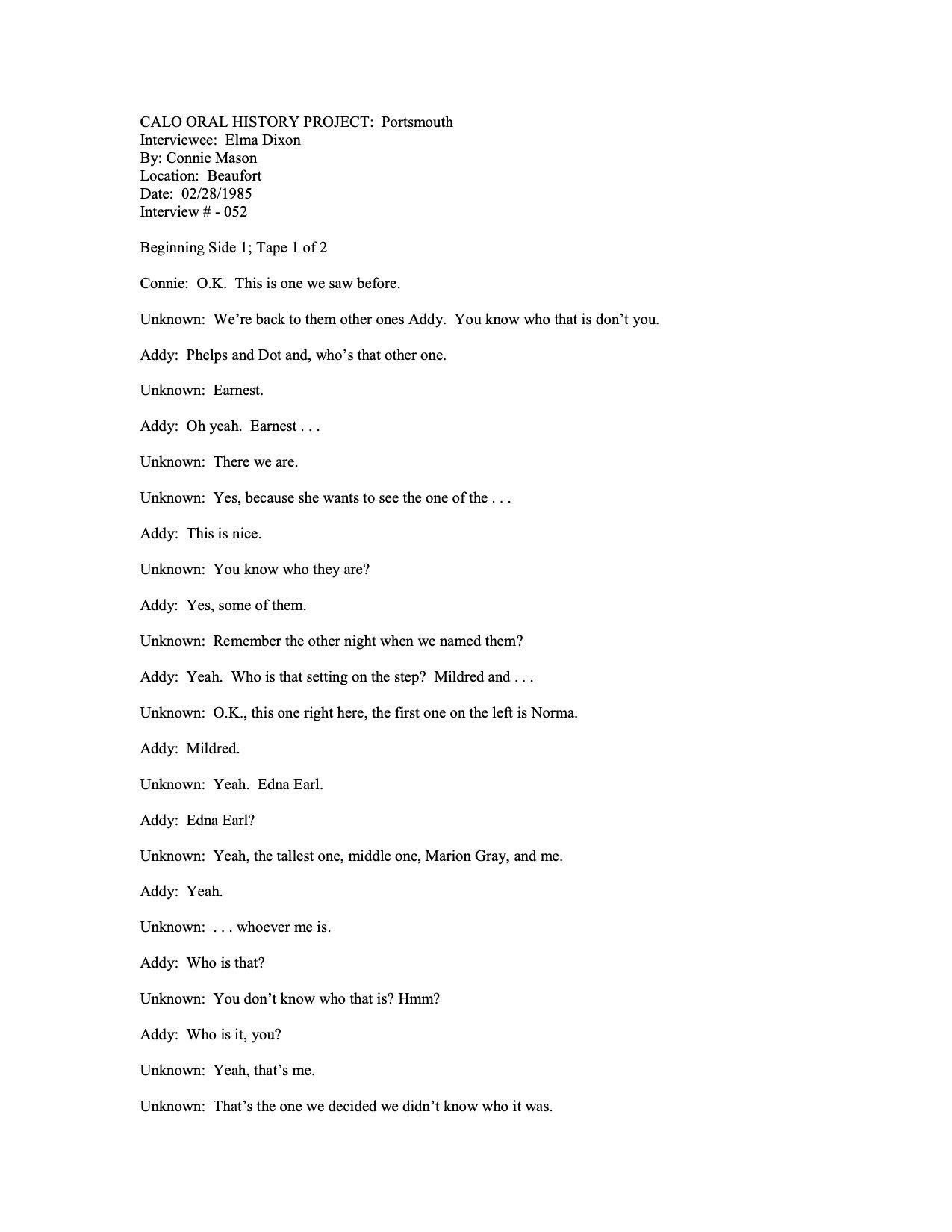
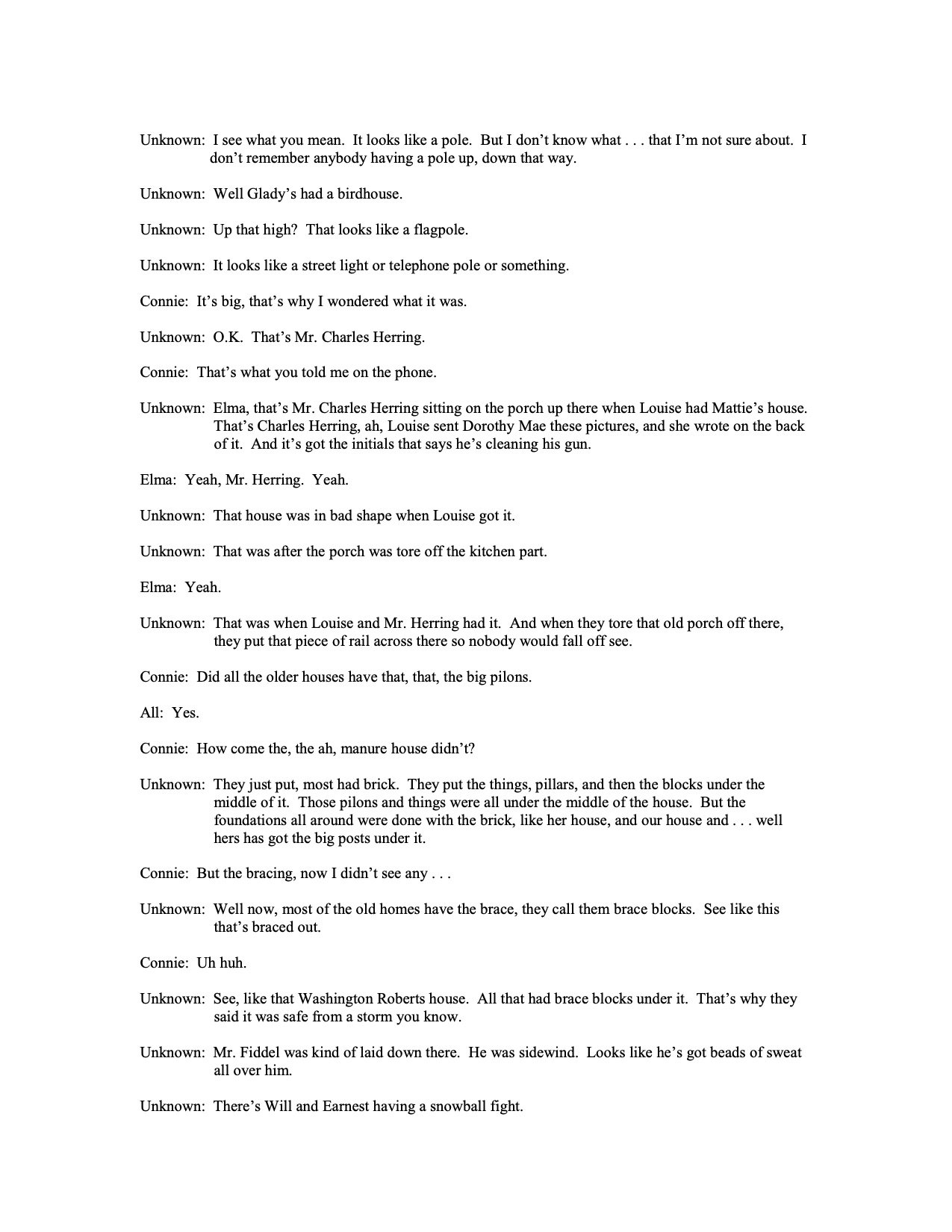

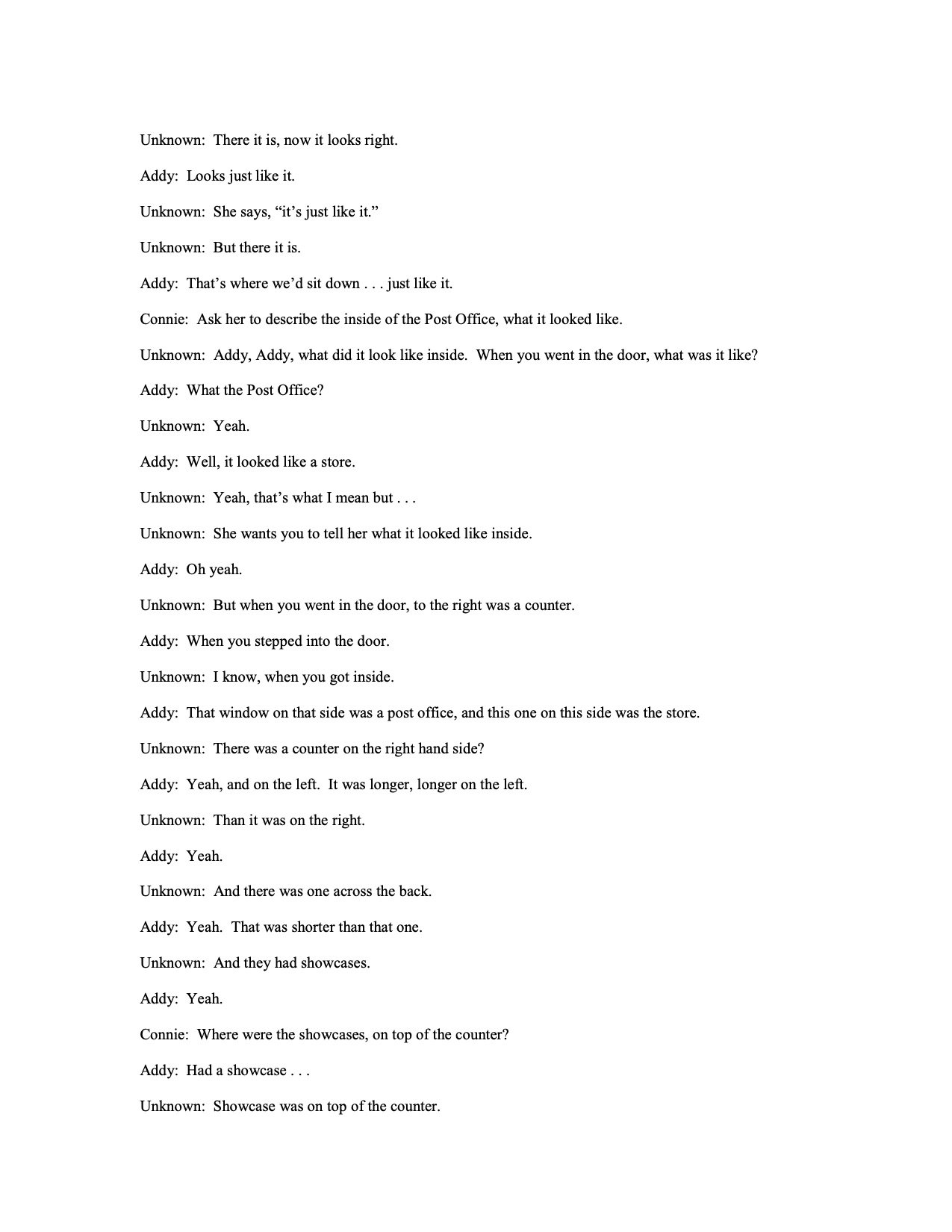
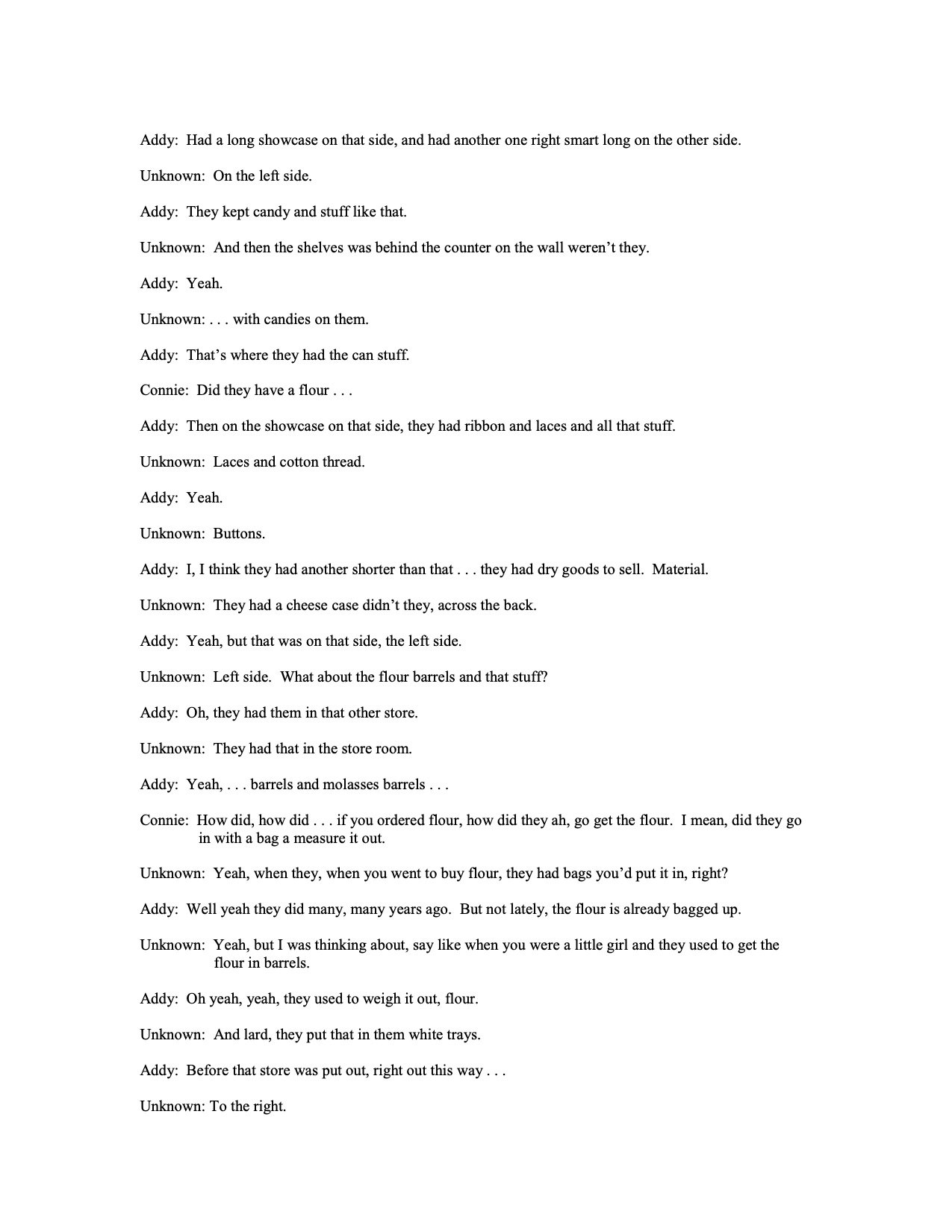
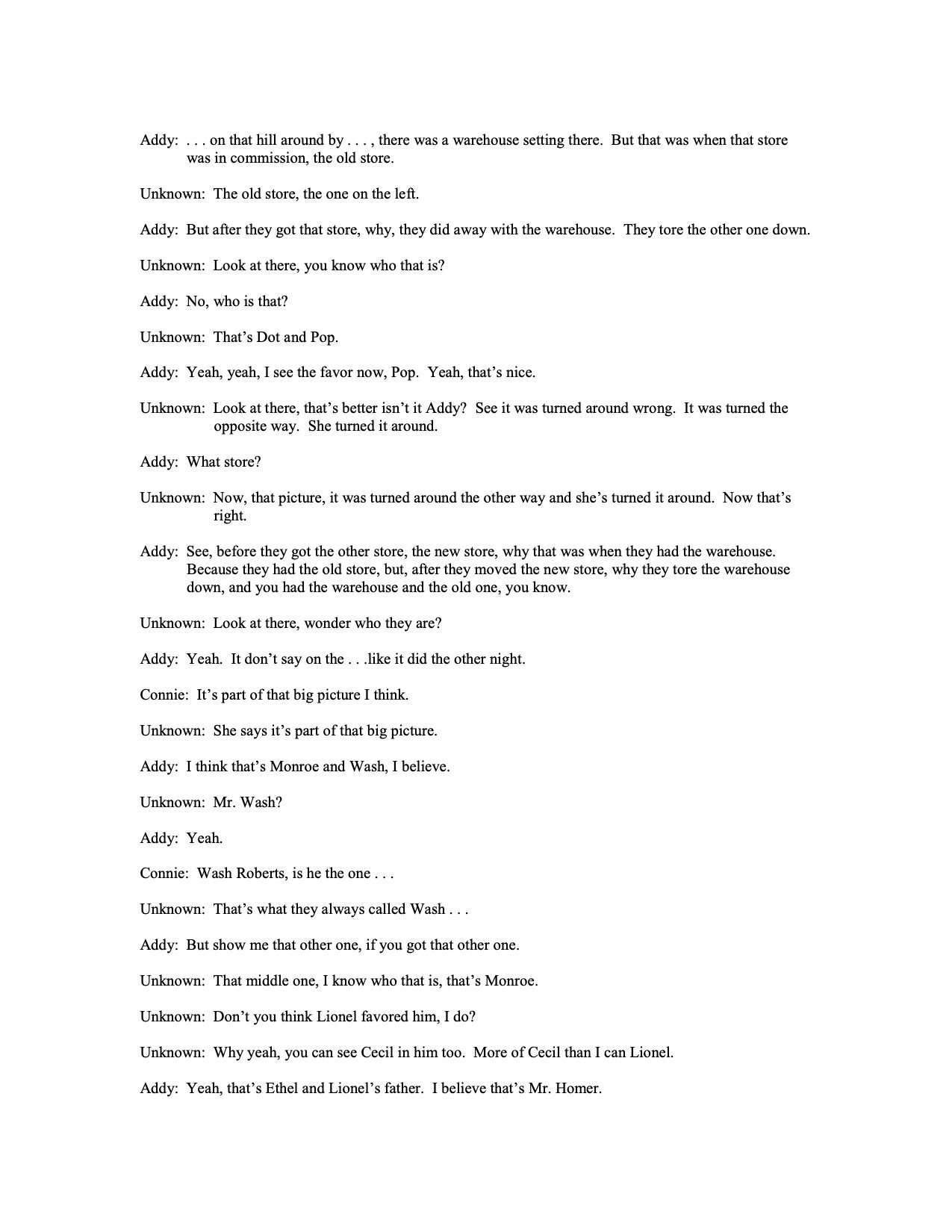
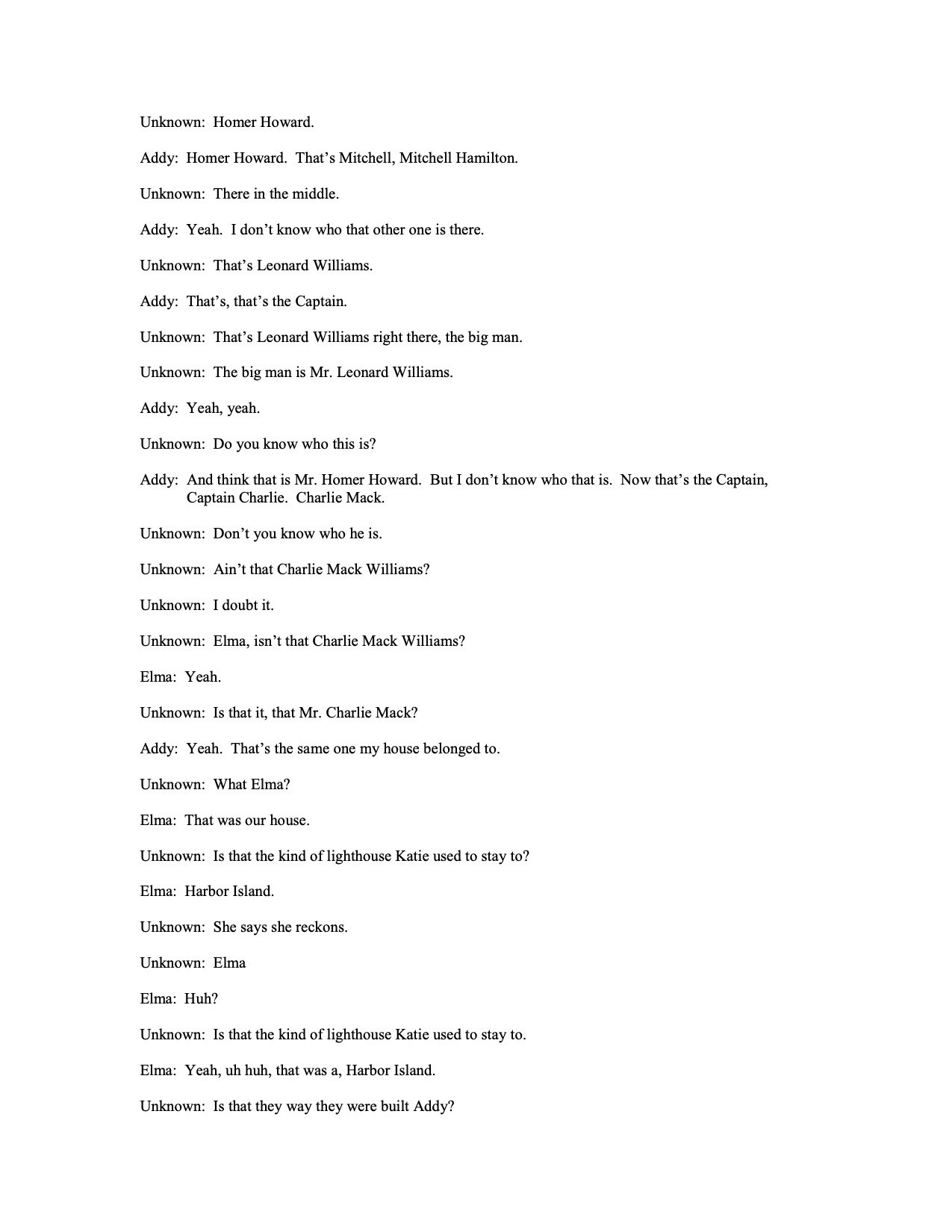


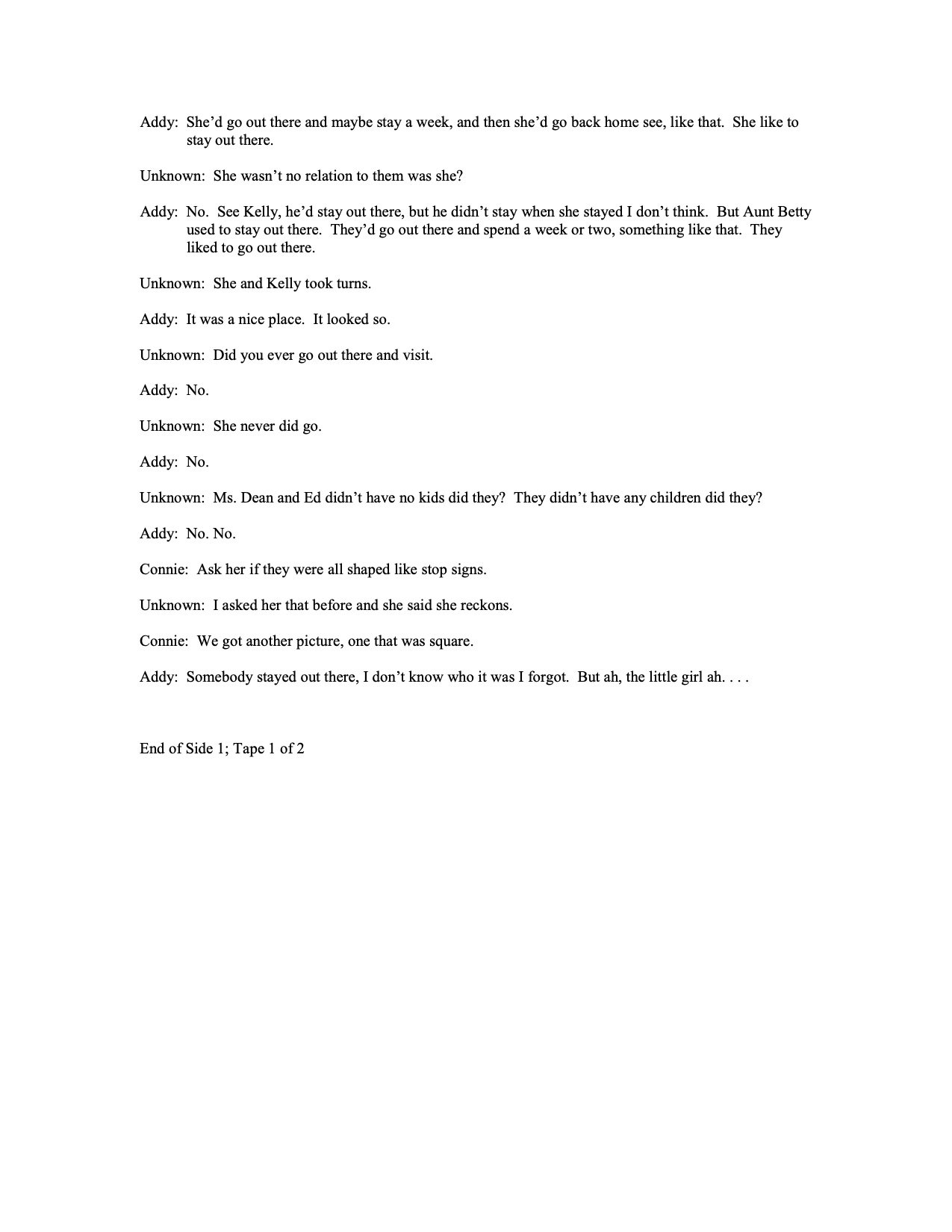
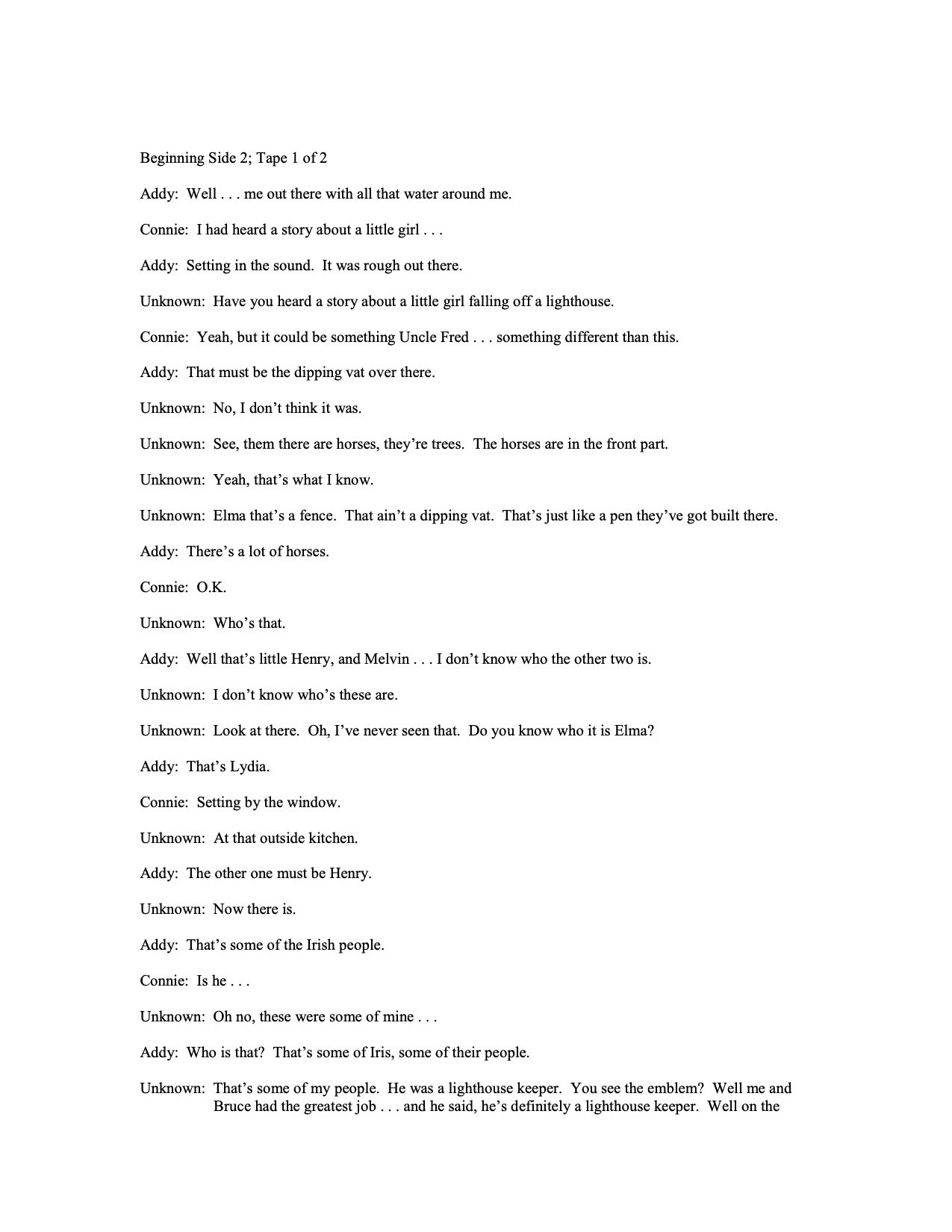

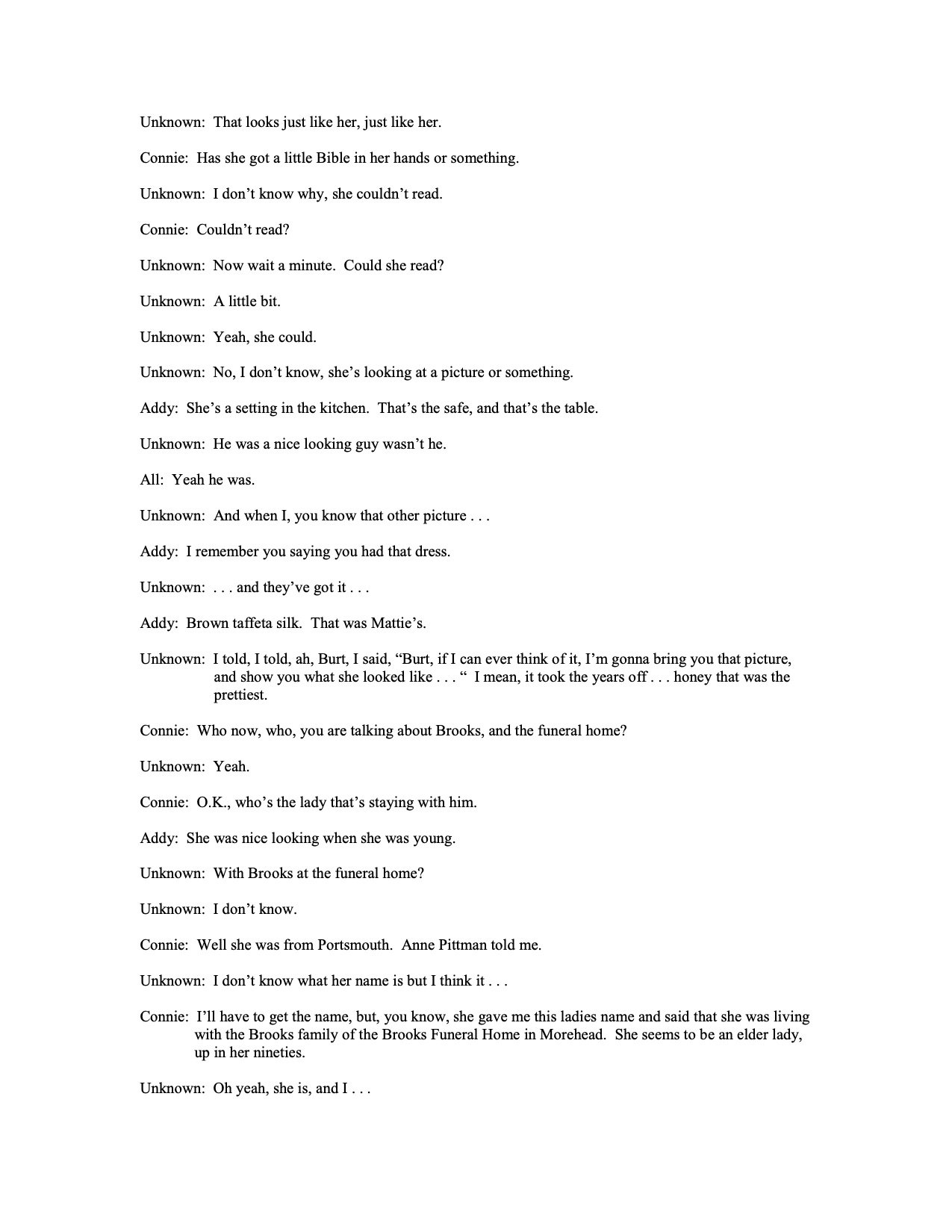
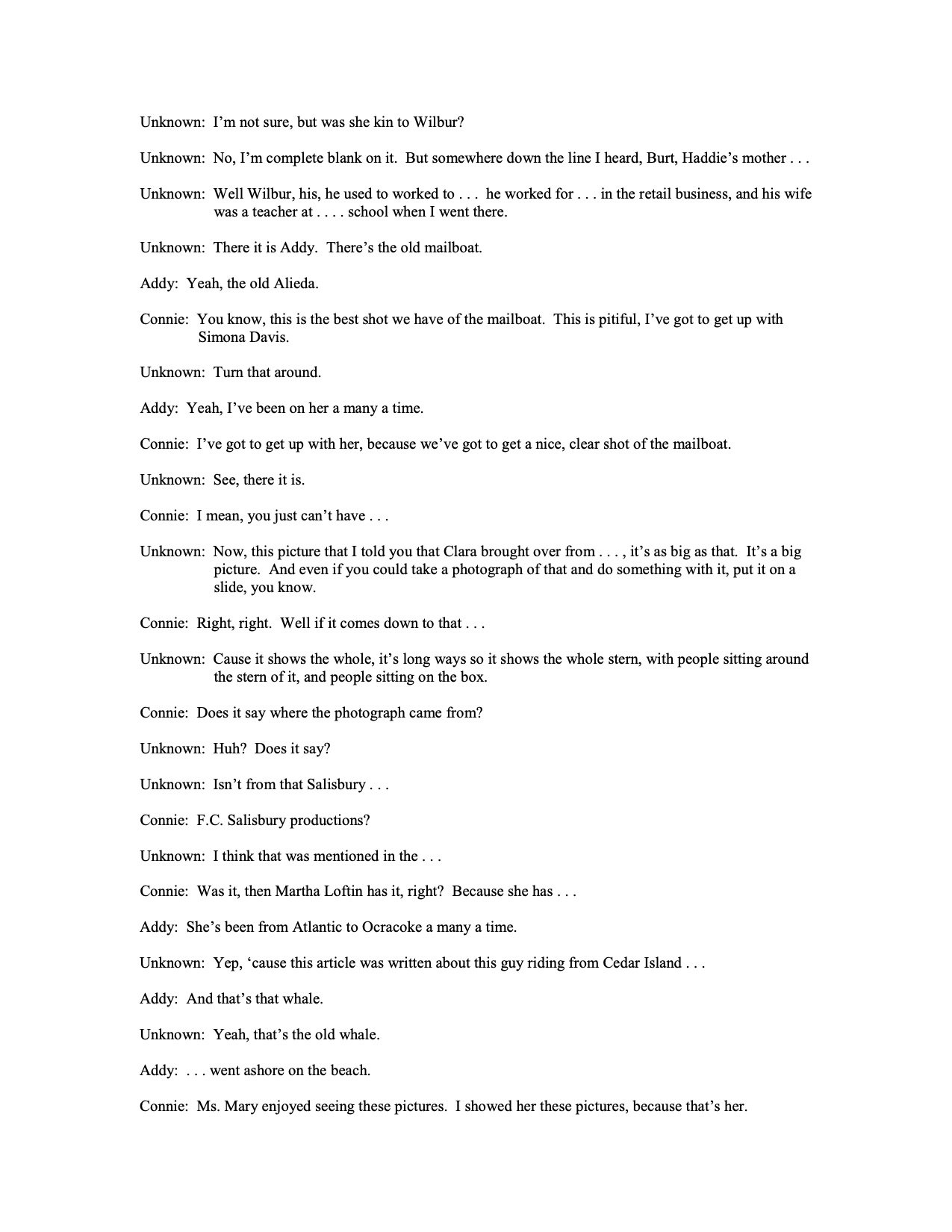
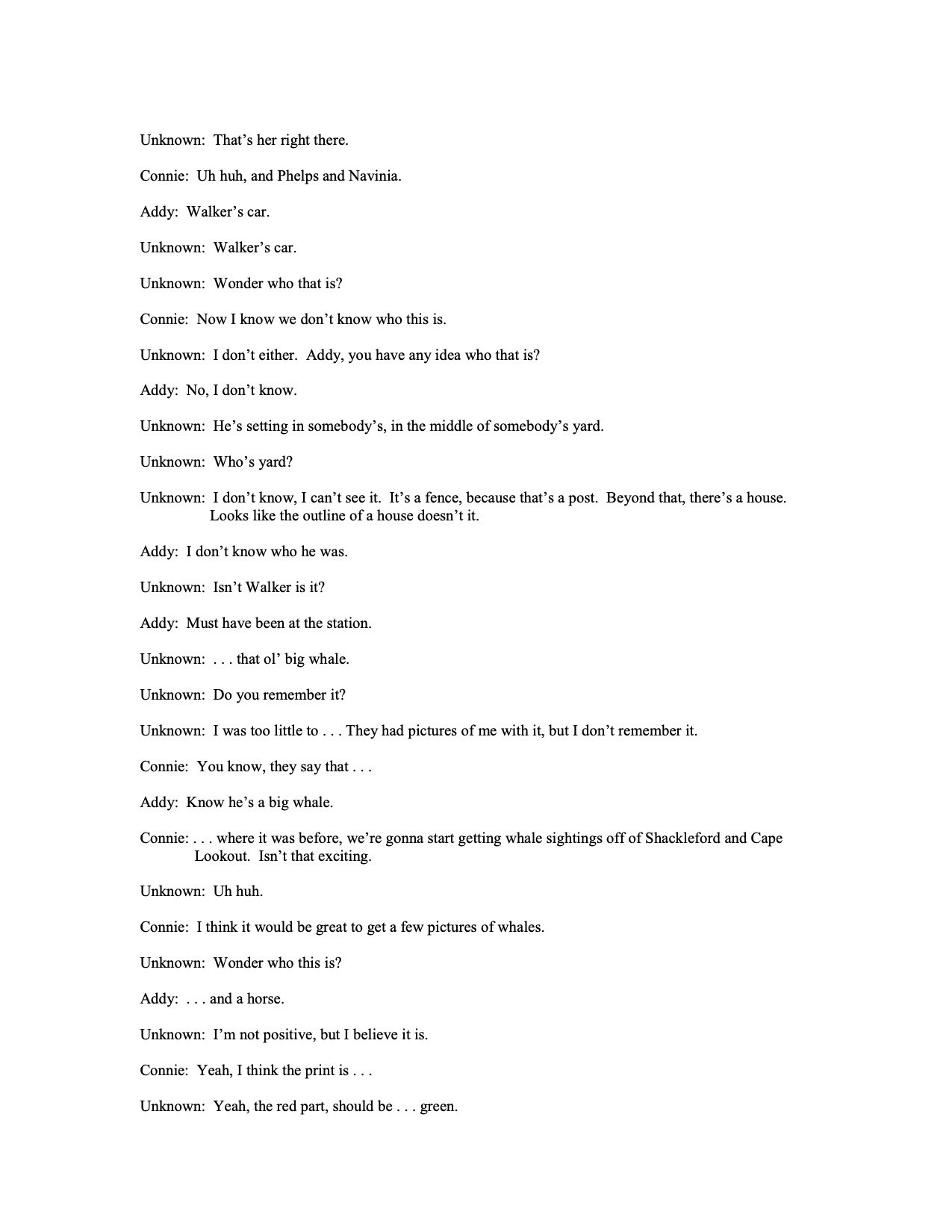
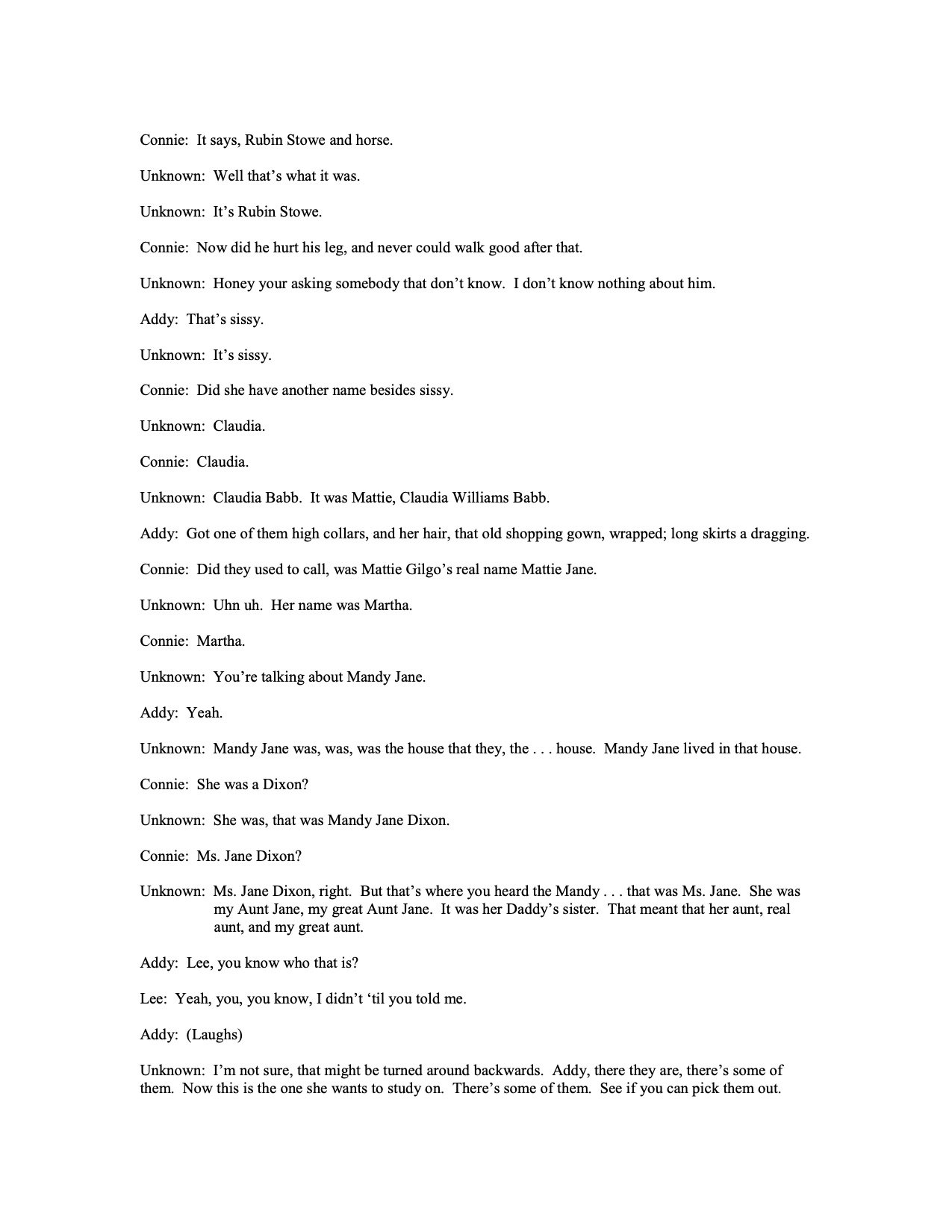
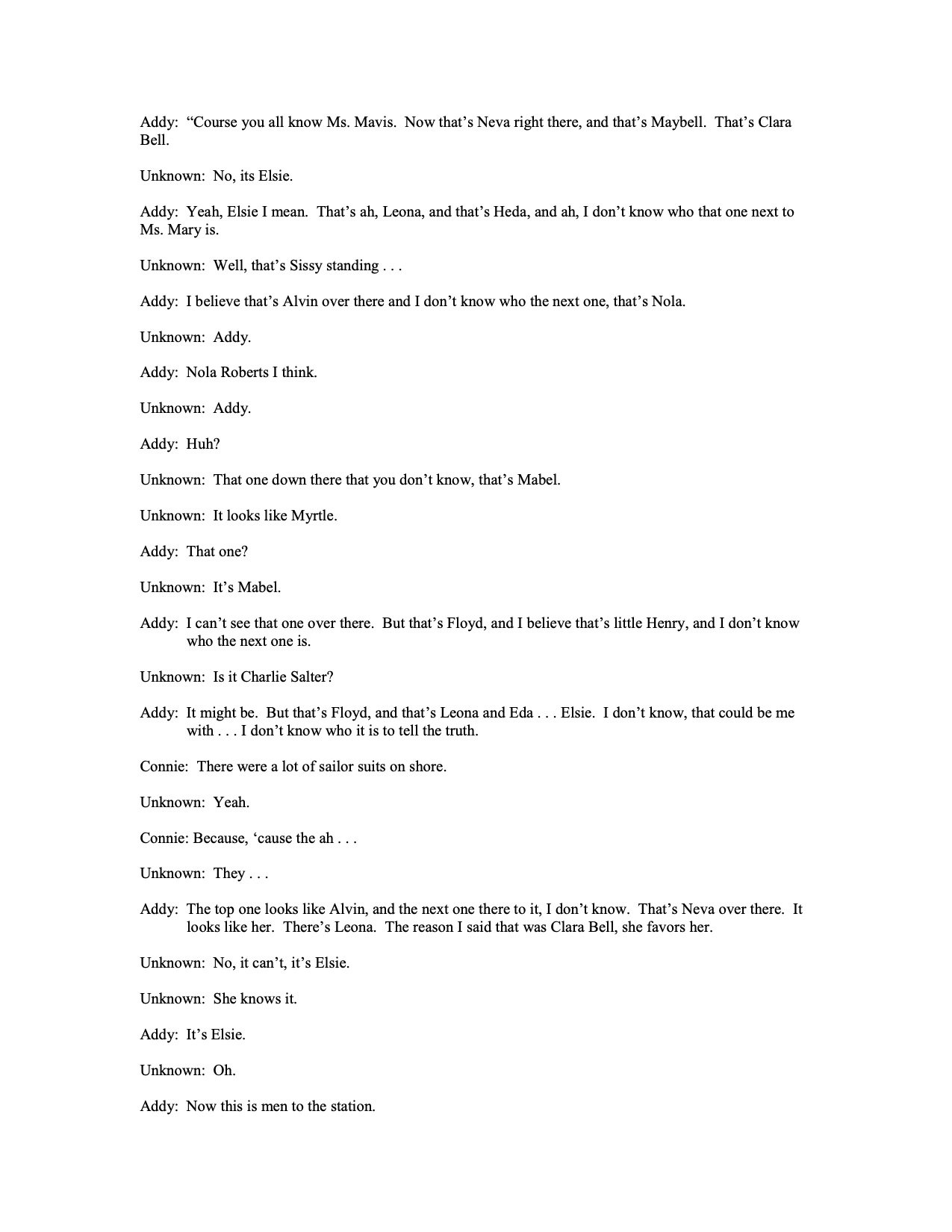
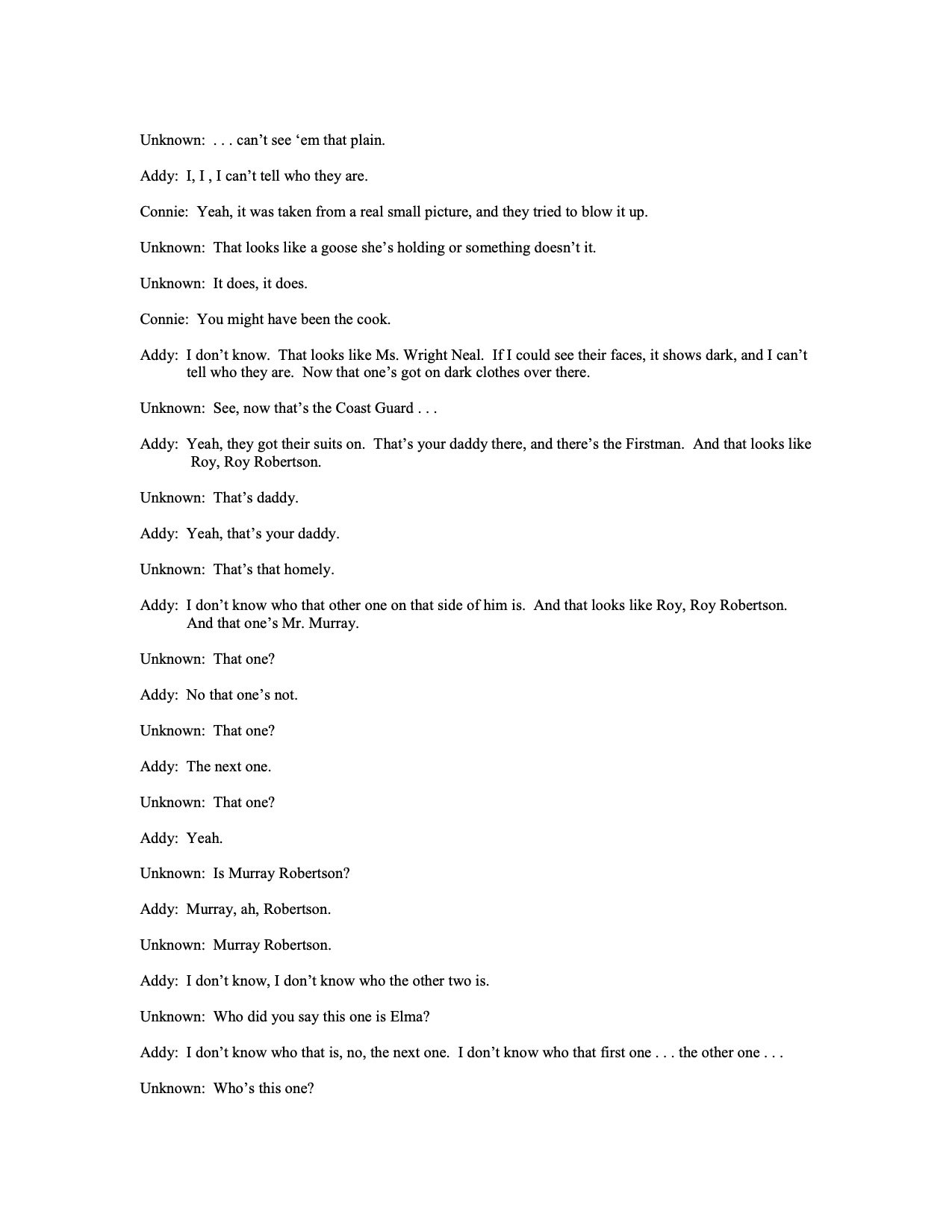
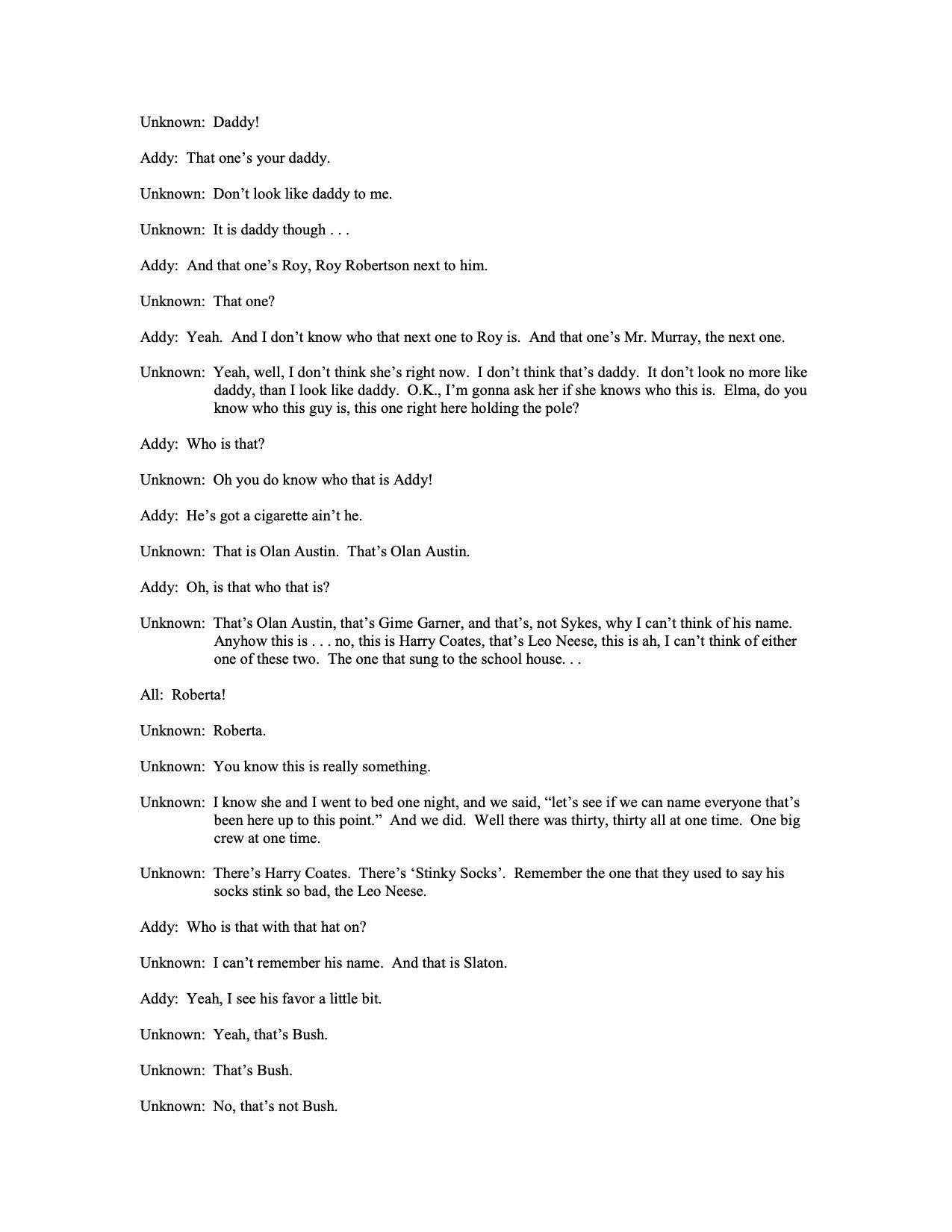
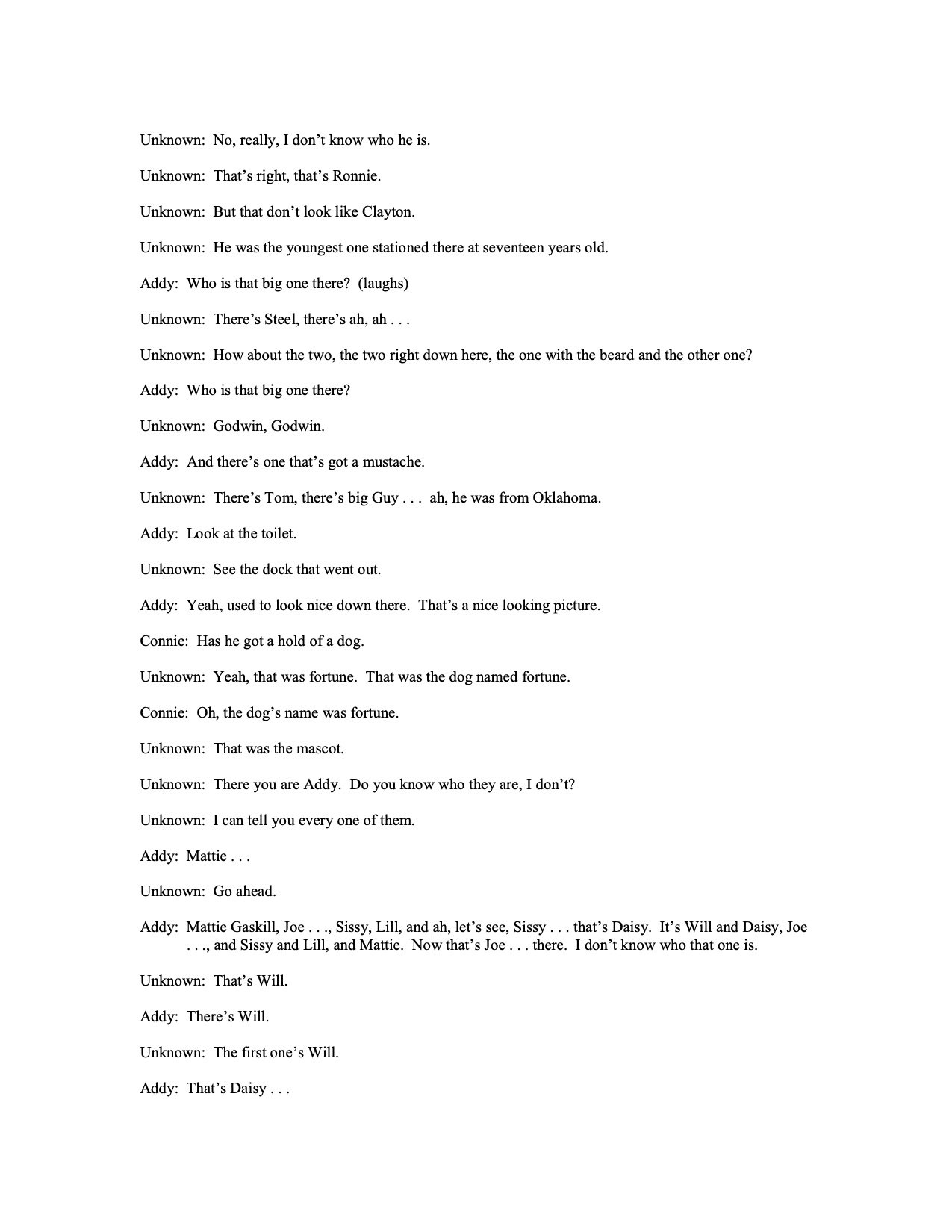

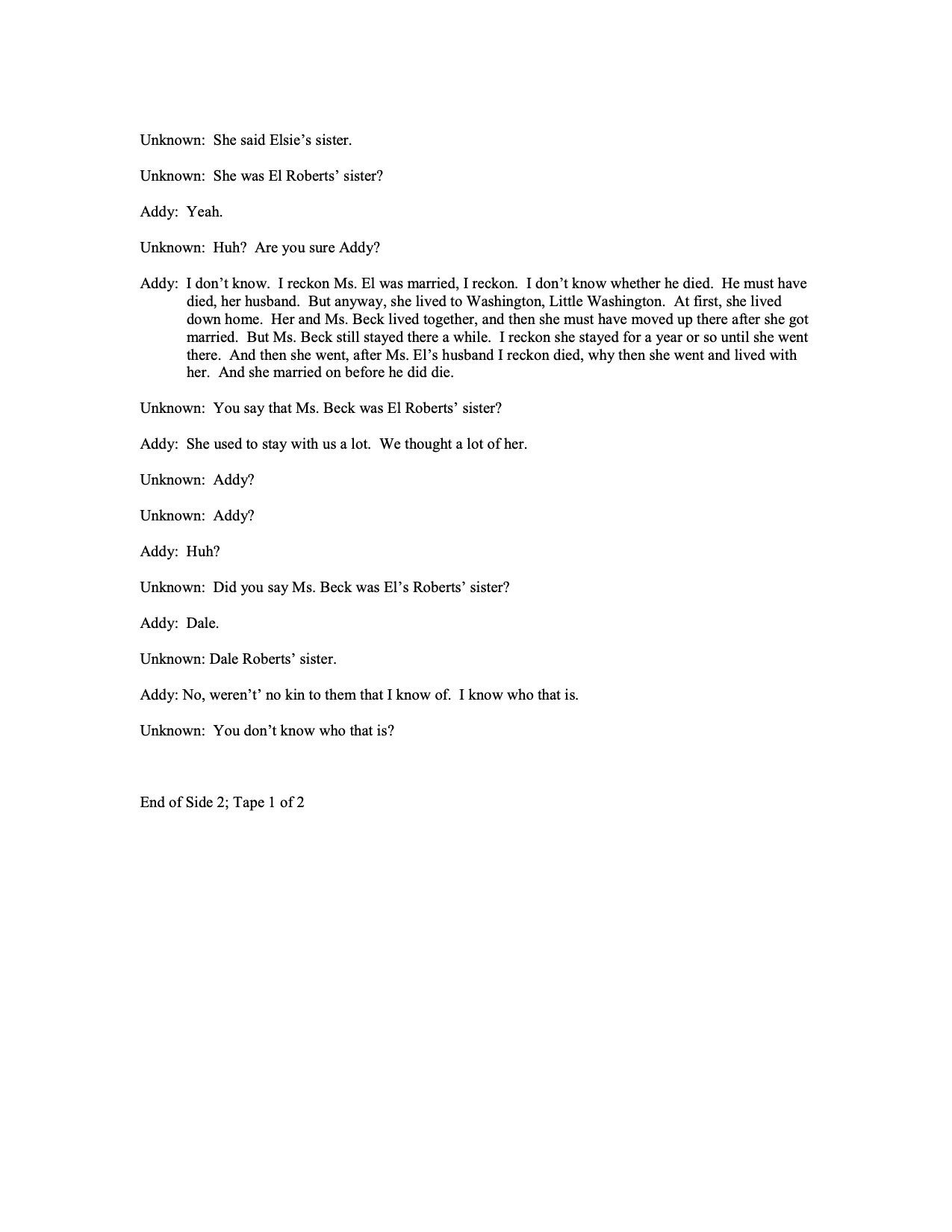
Cecil Gilgo
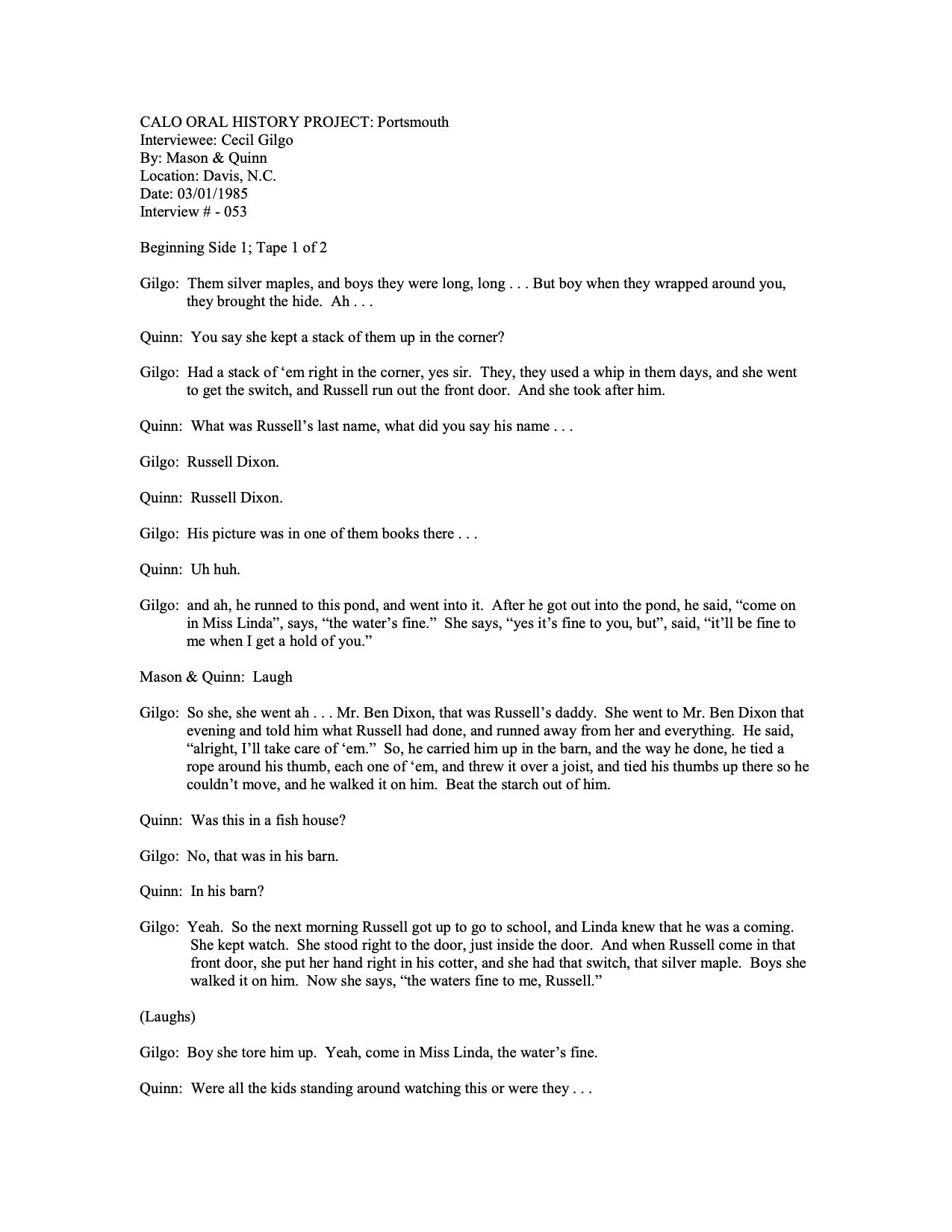

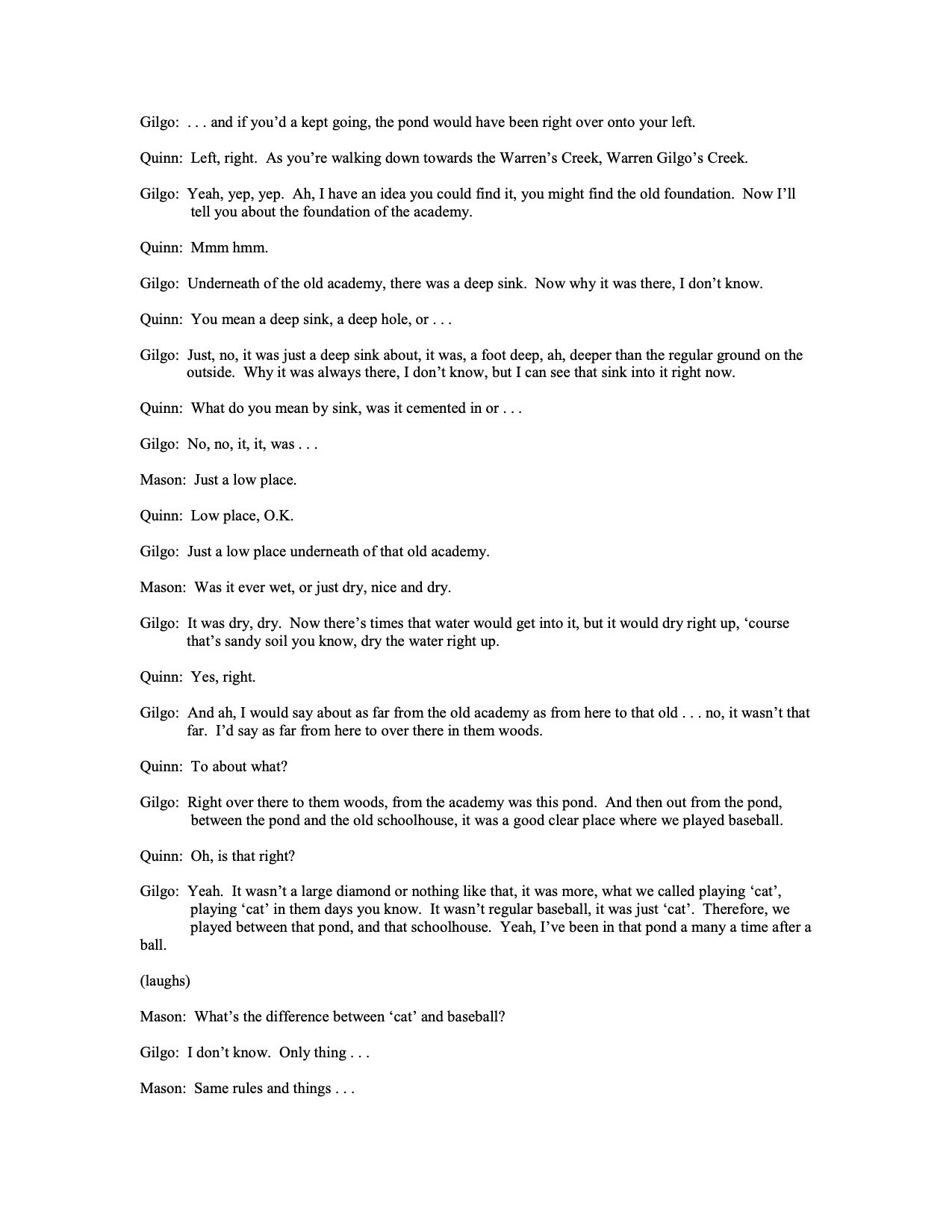
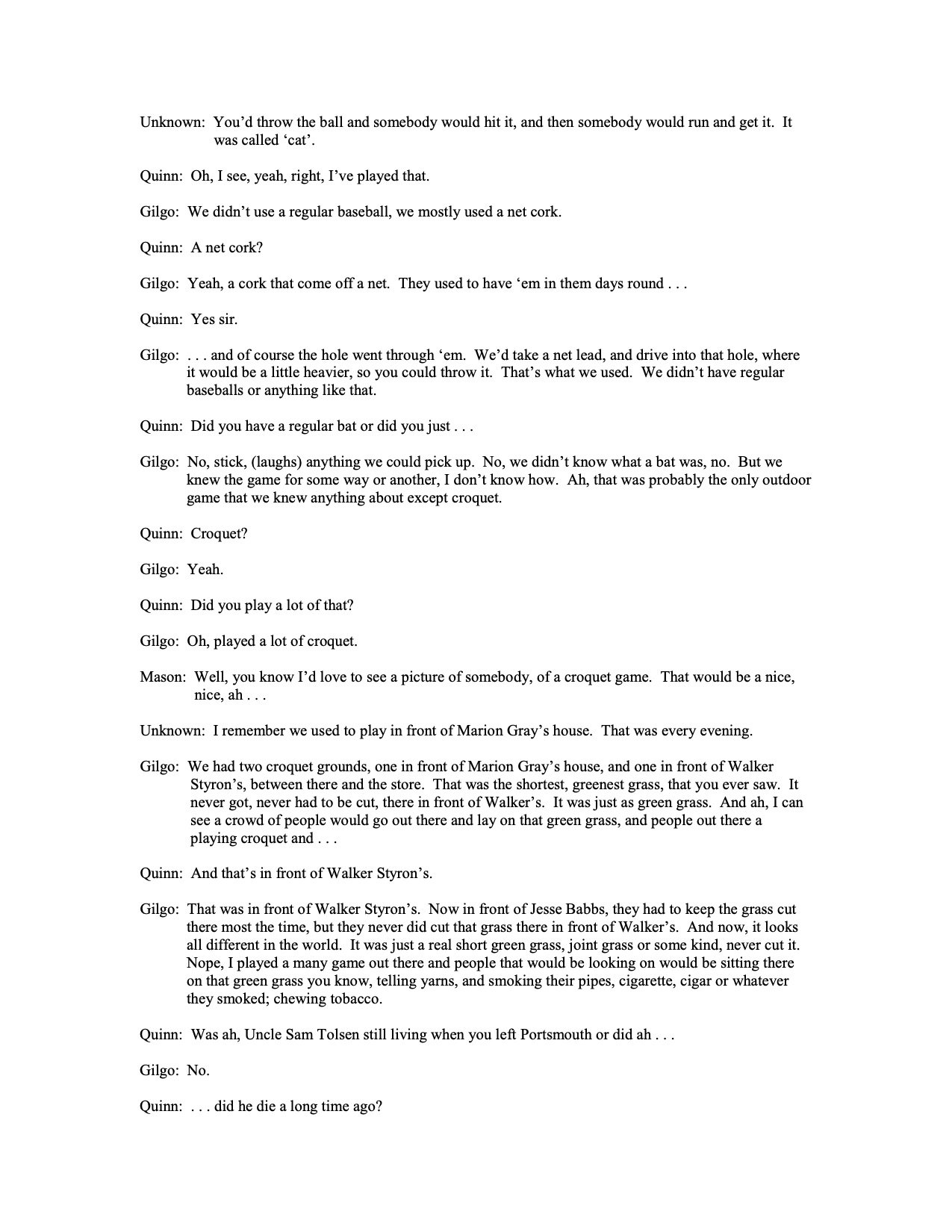
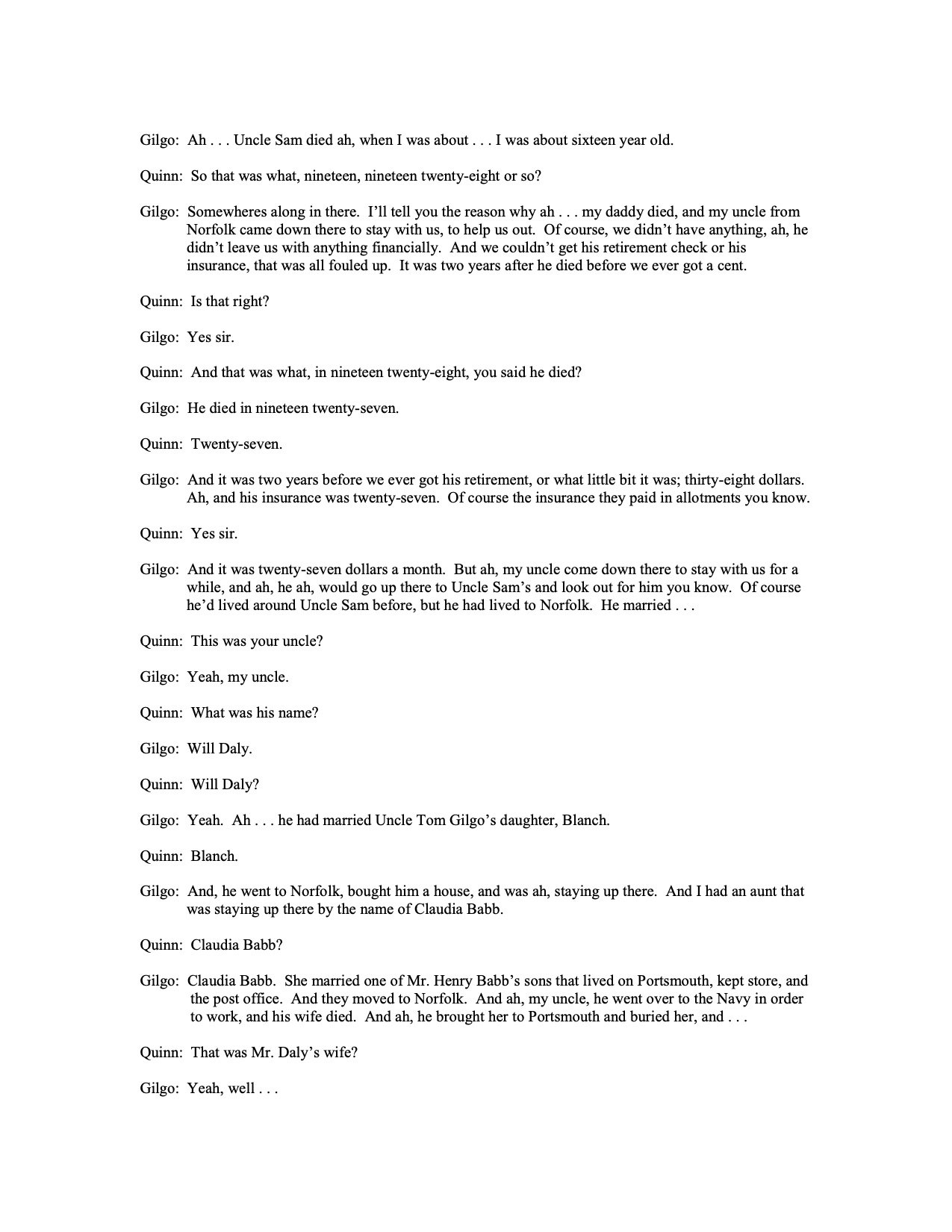
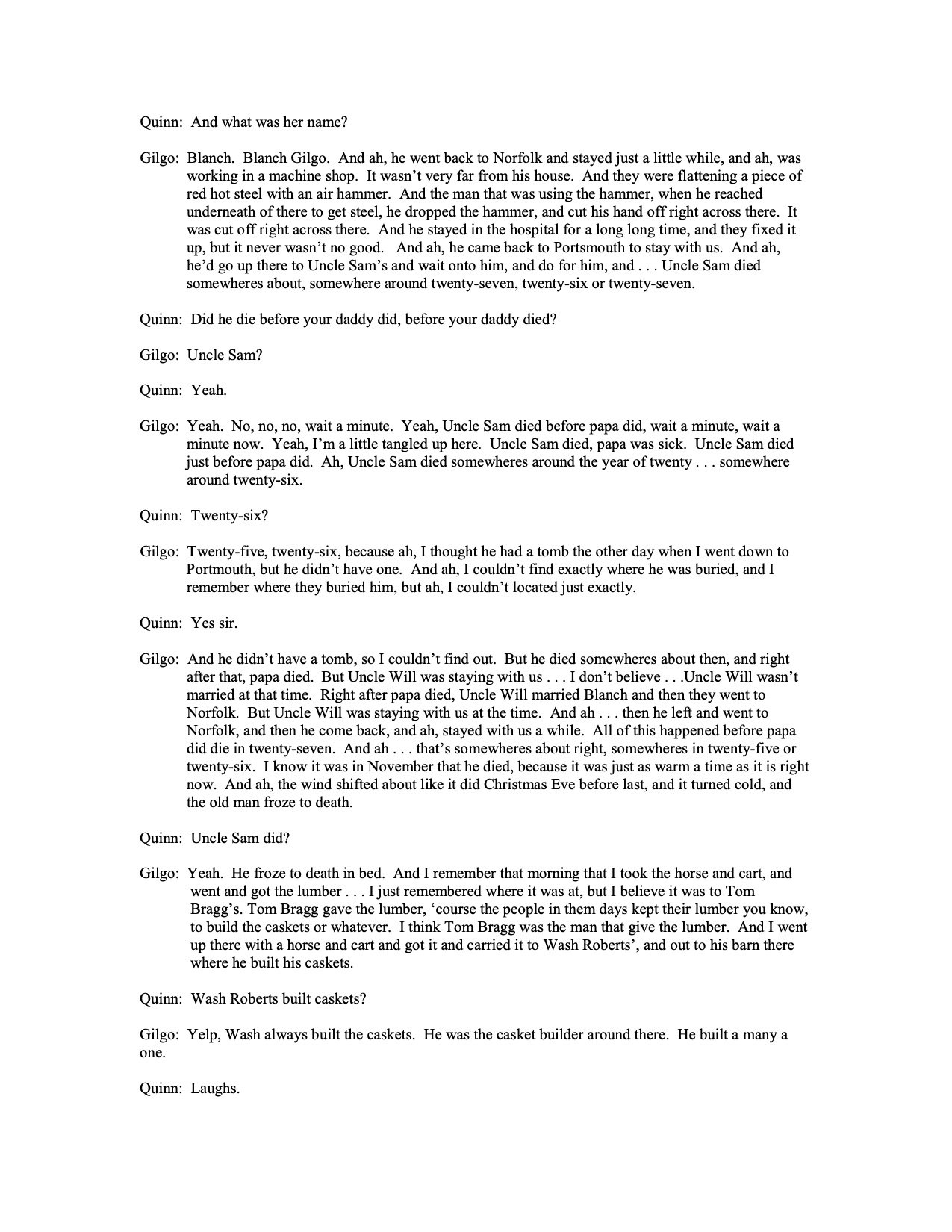
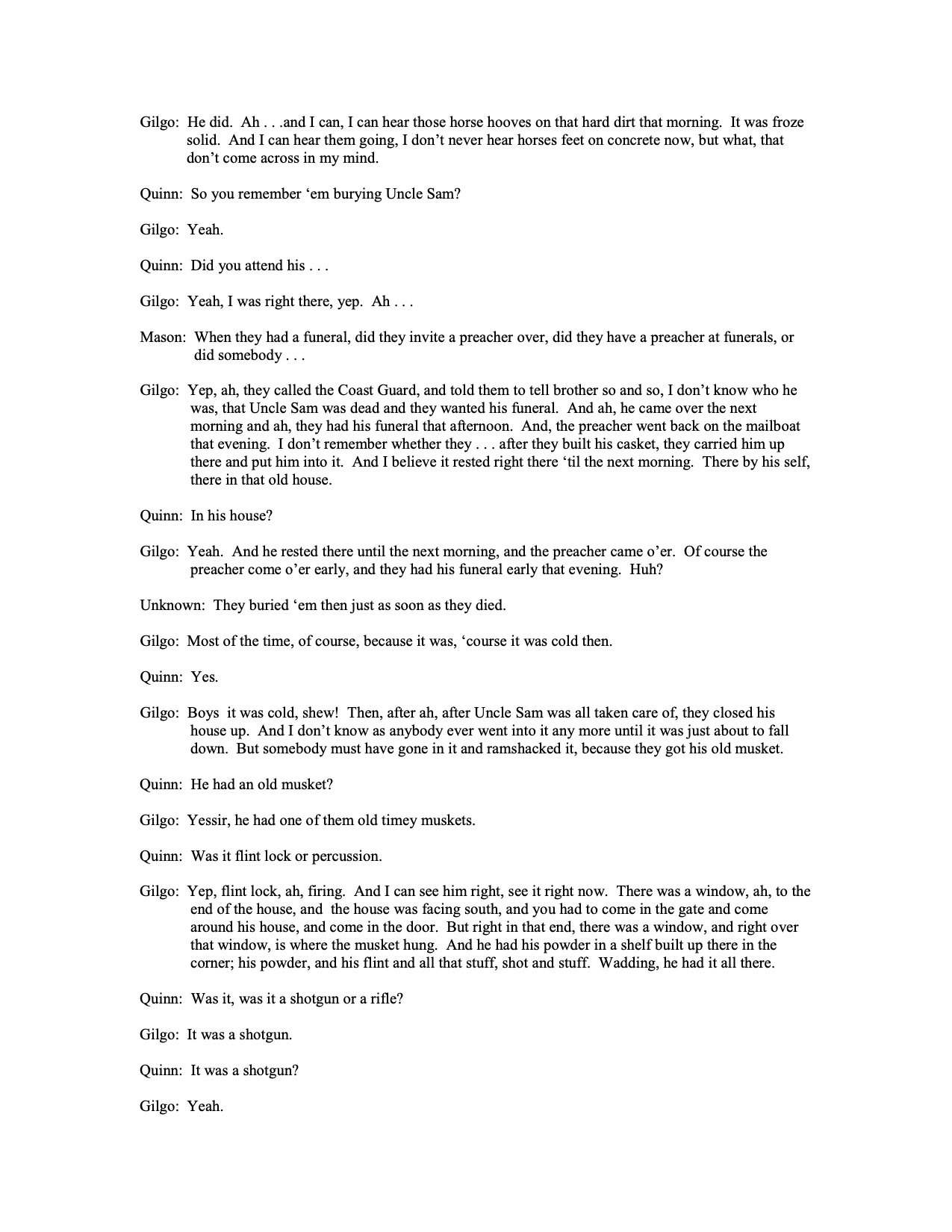
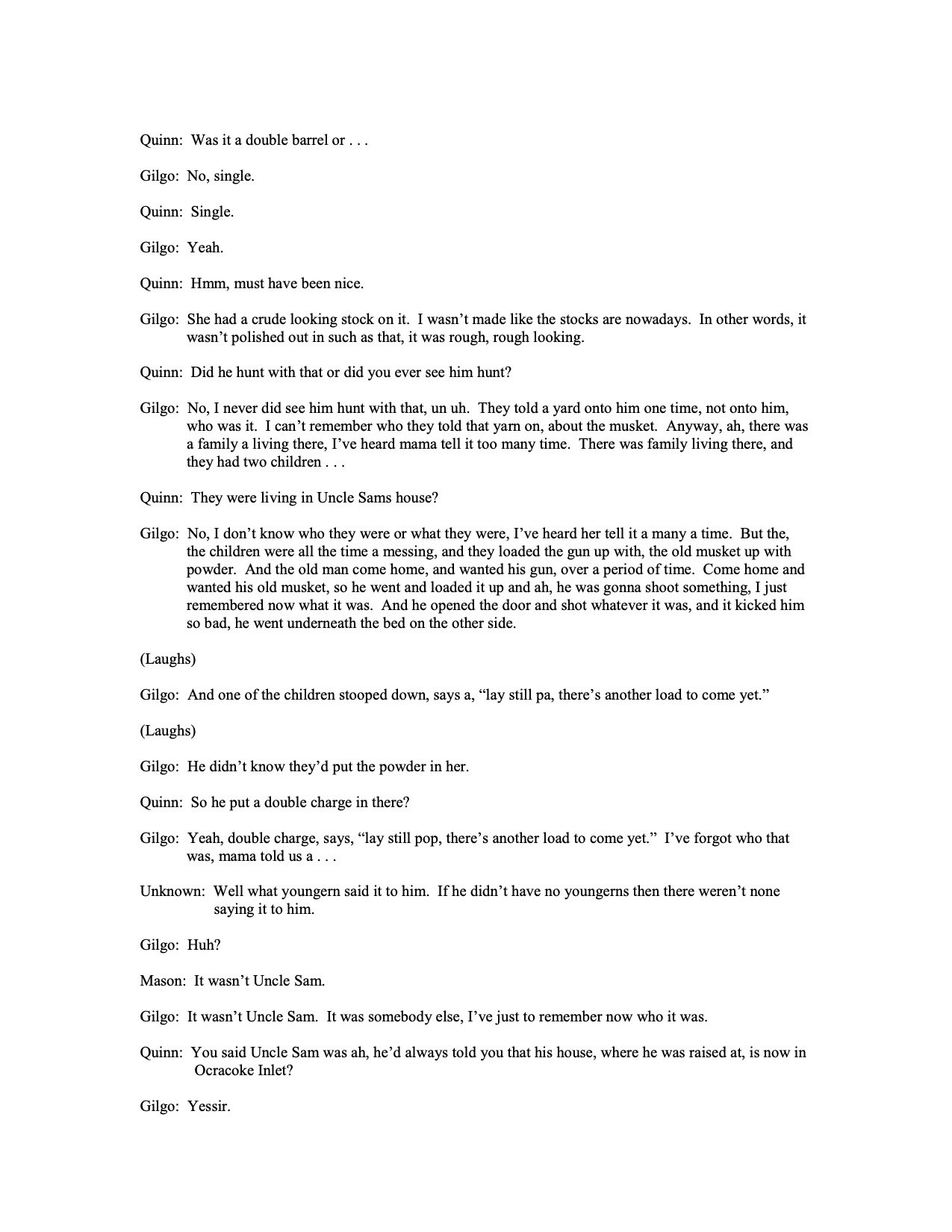
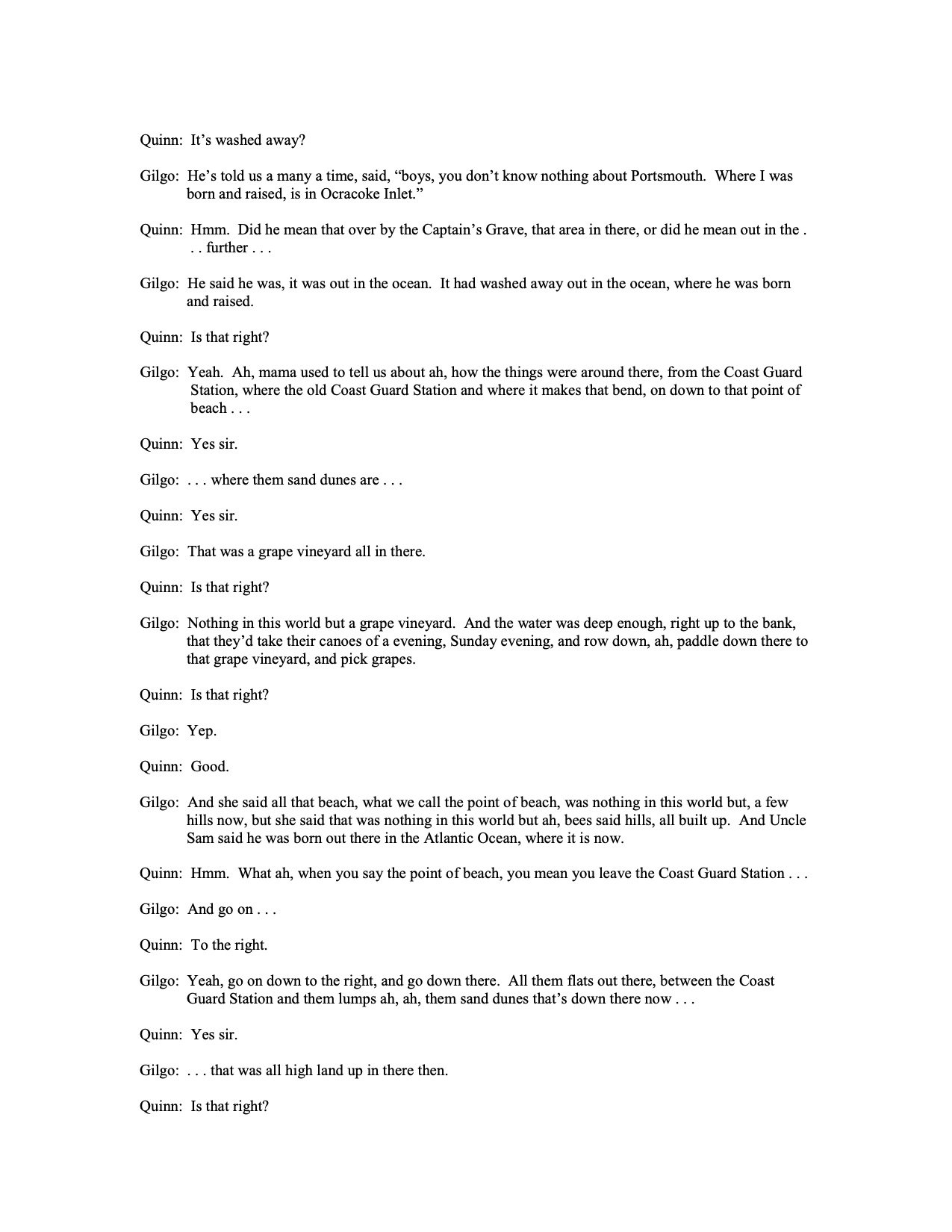
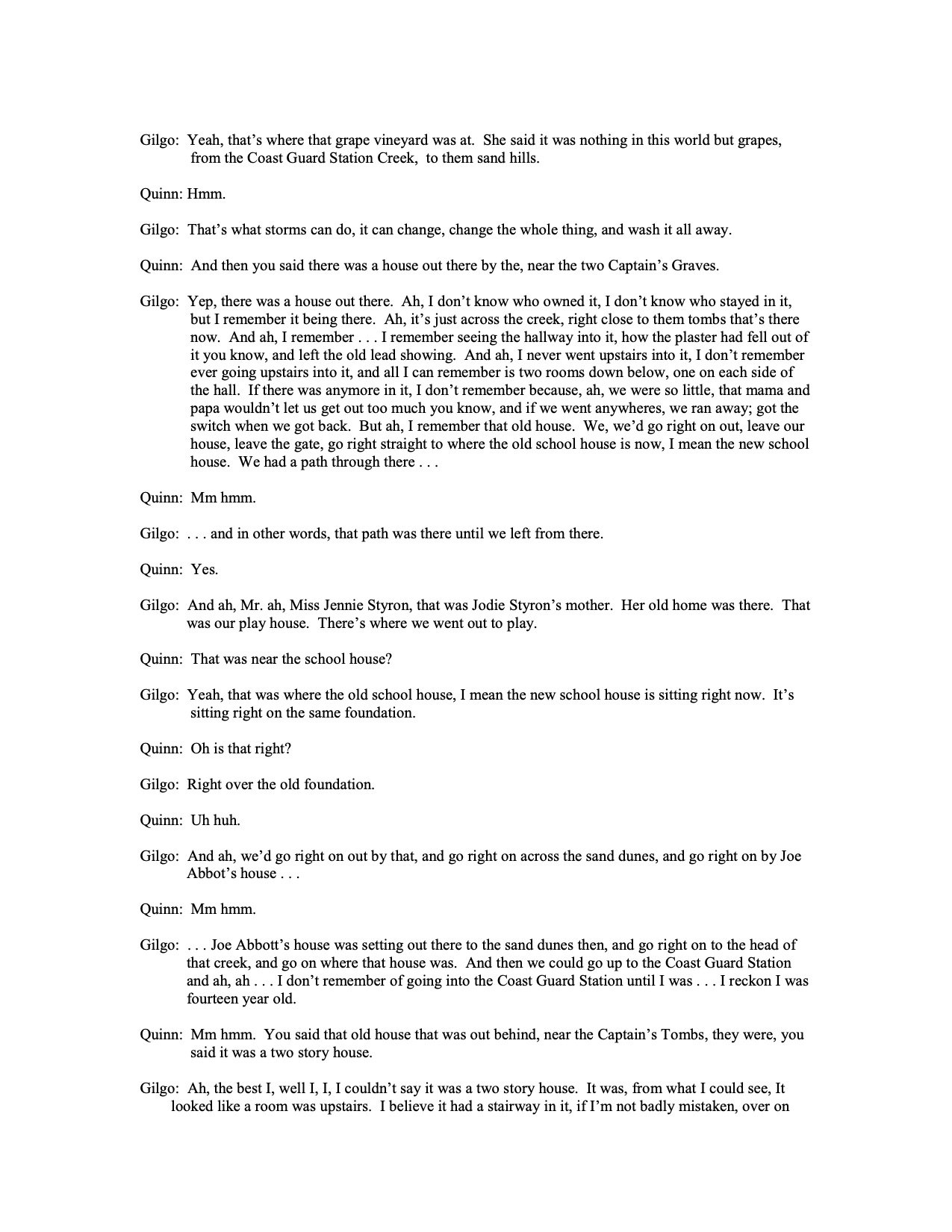
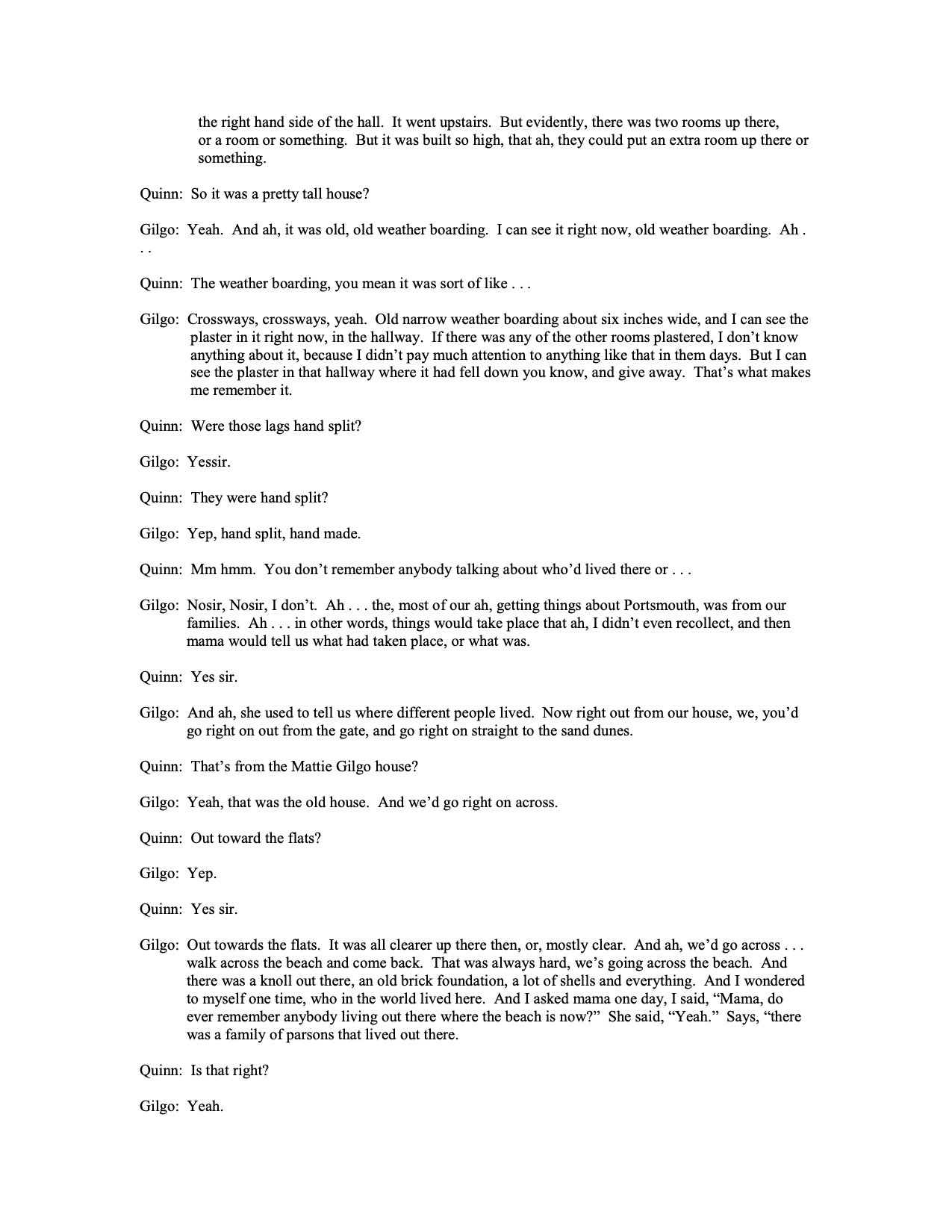
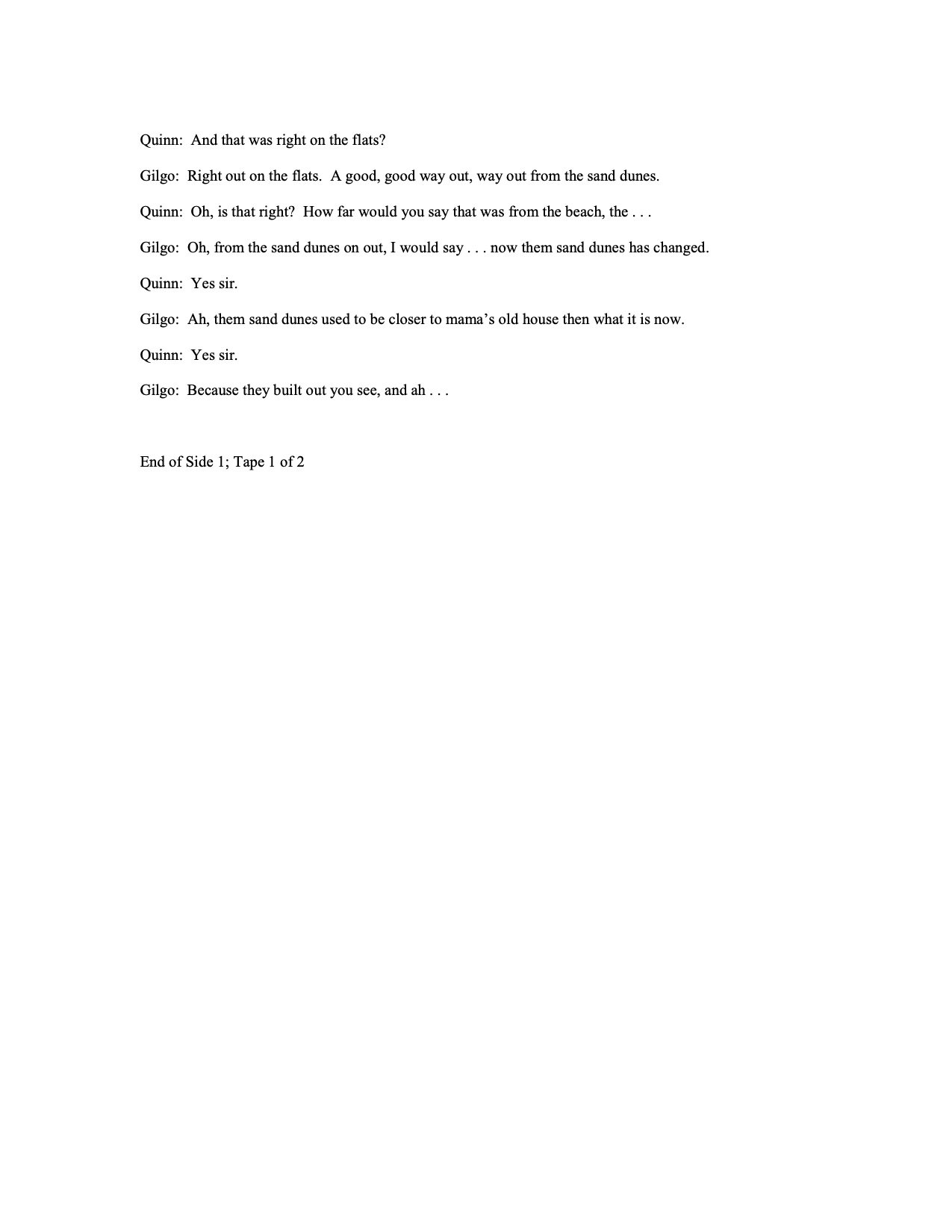
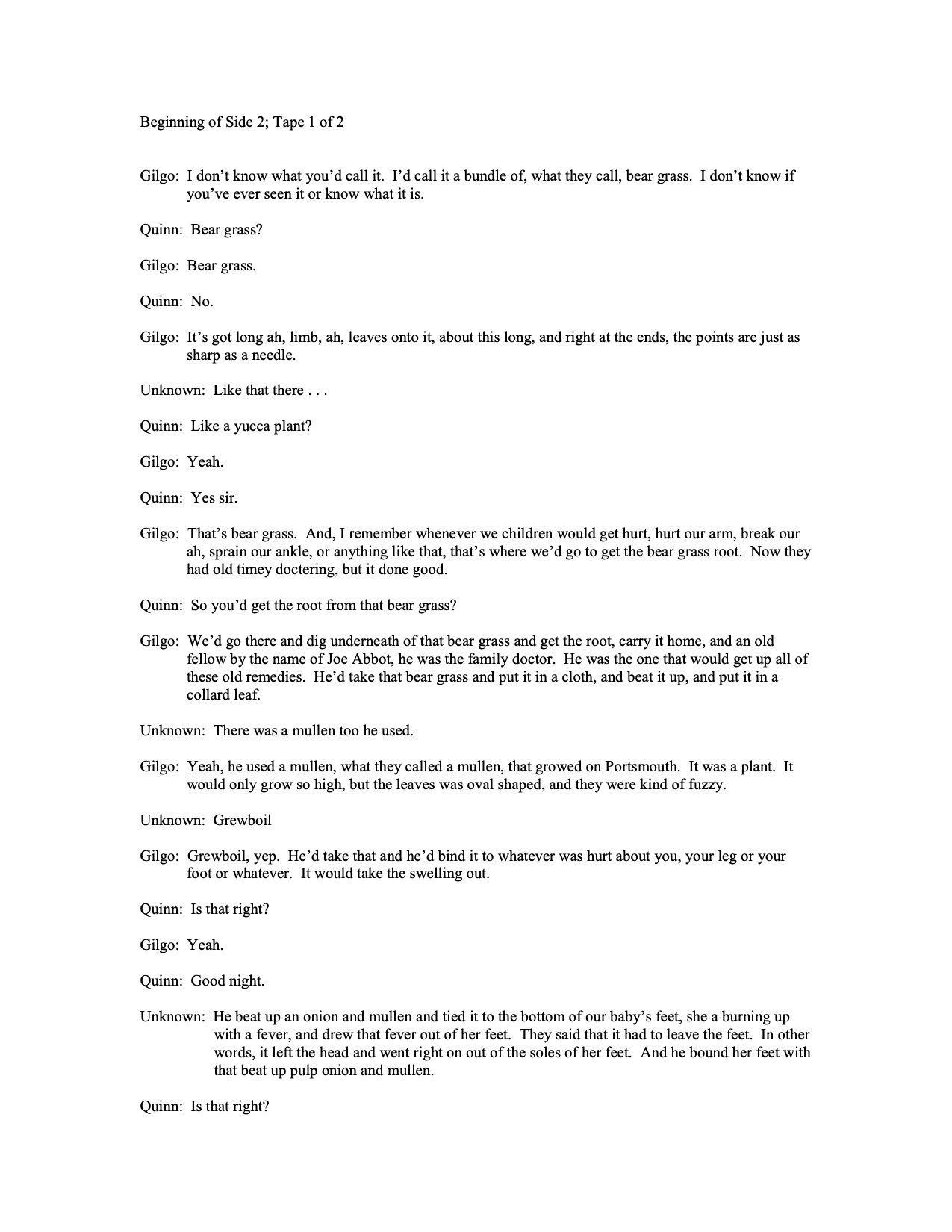

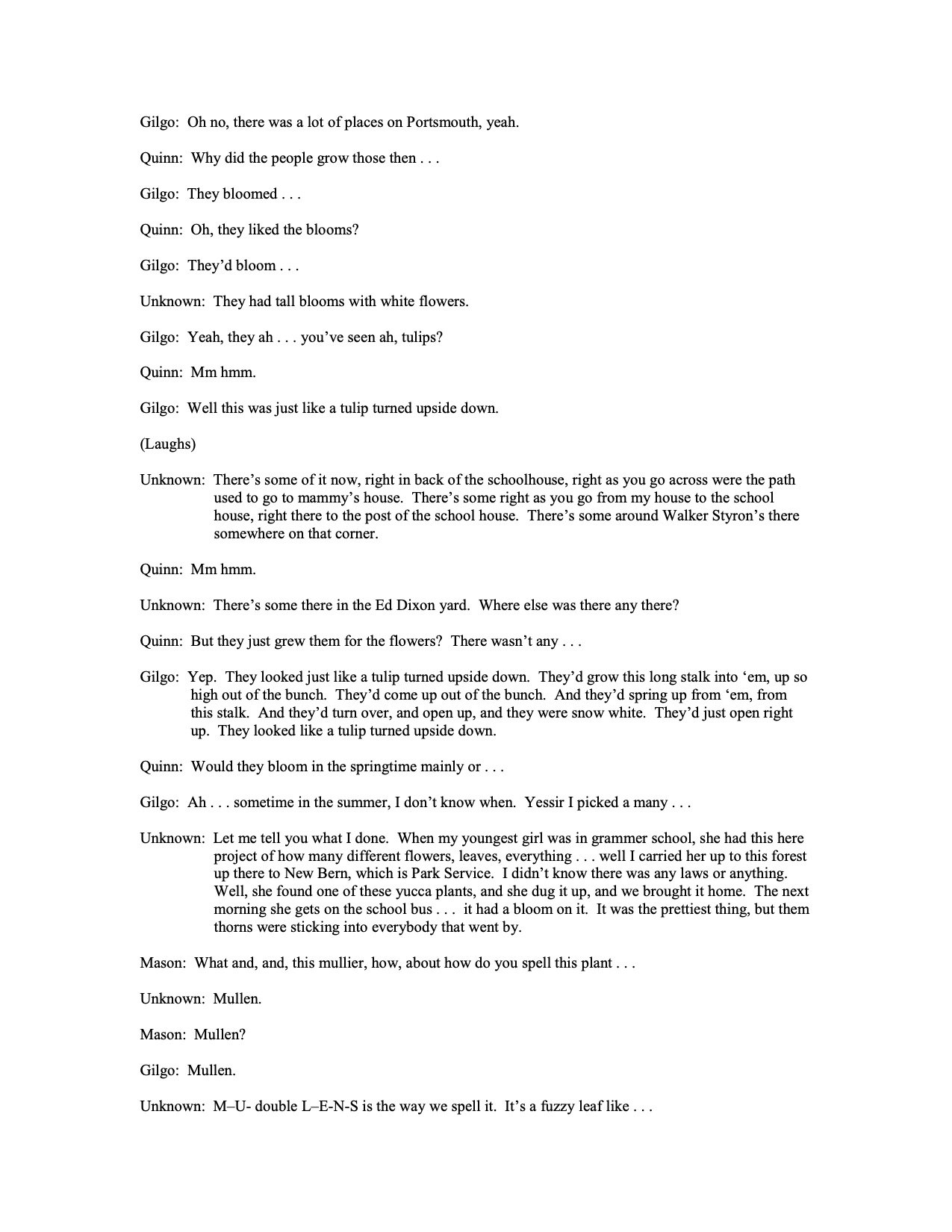
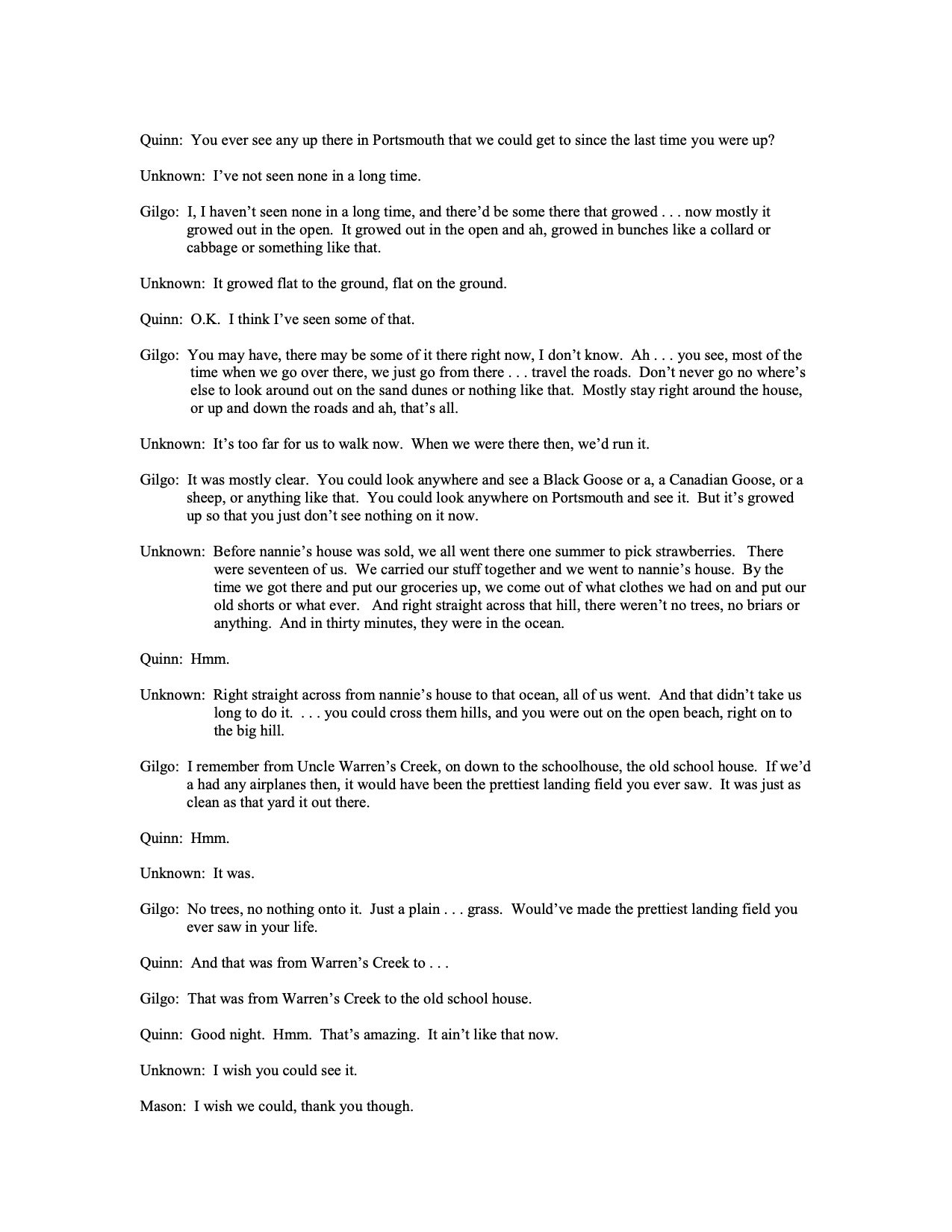


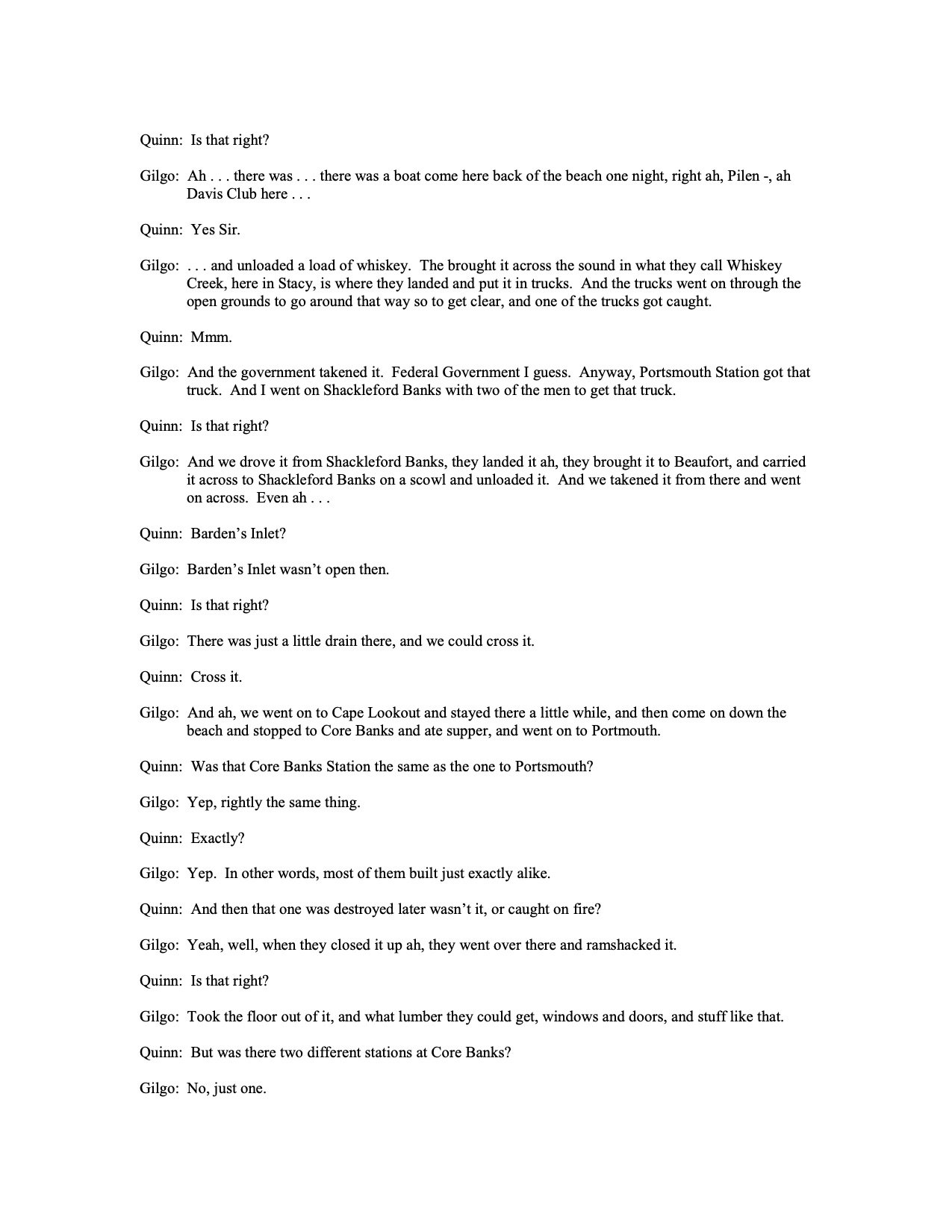
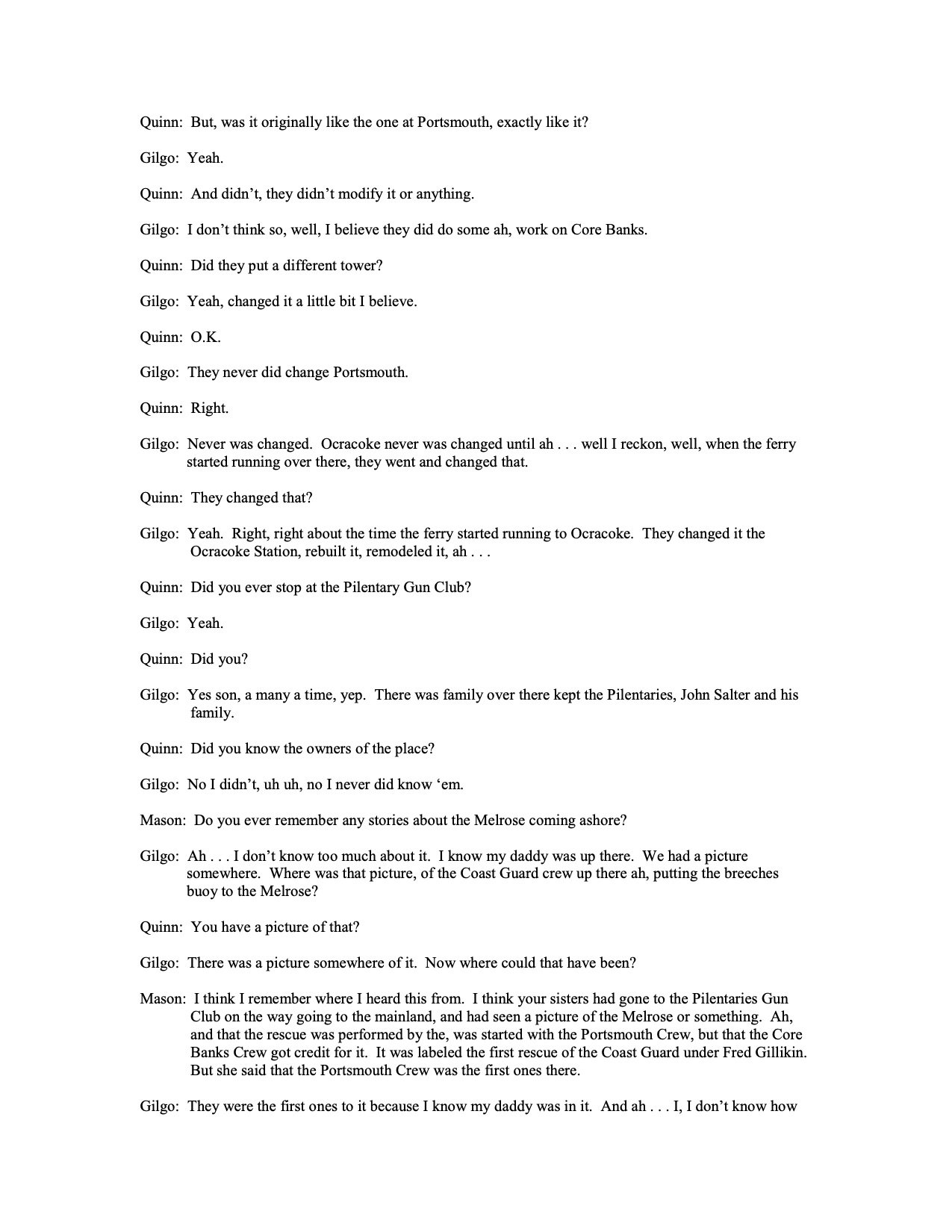

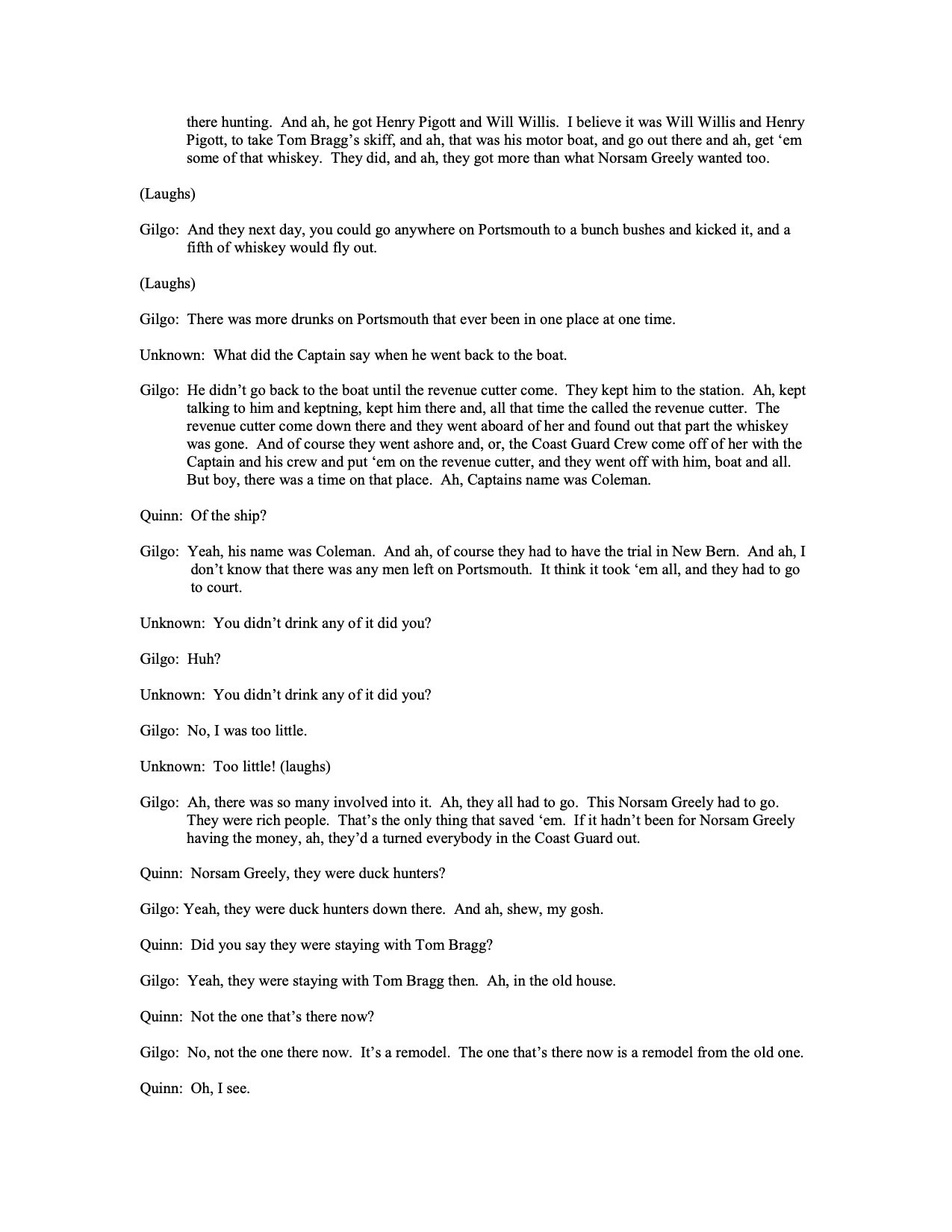


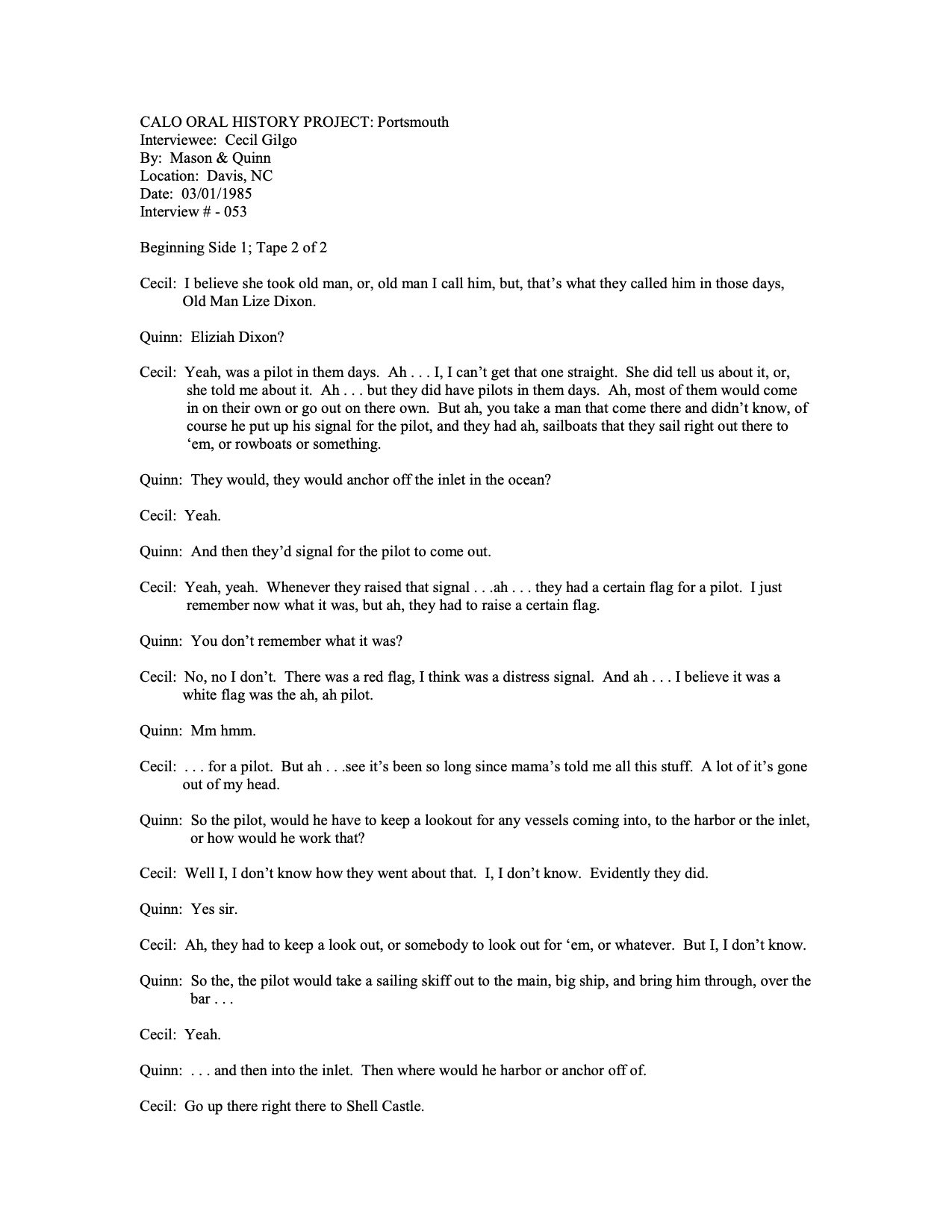
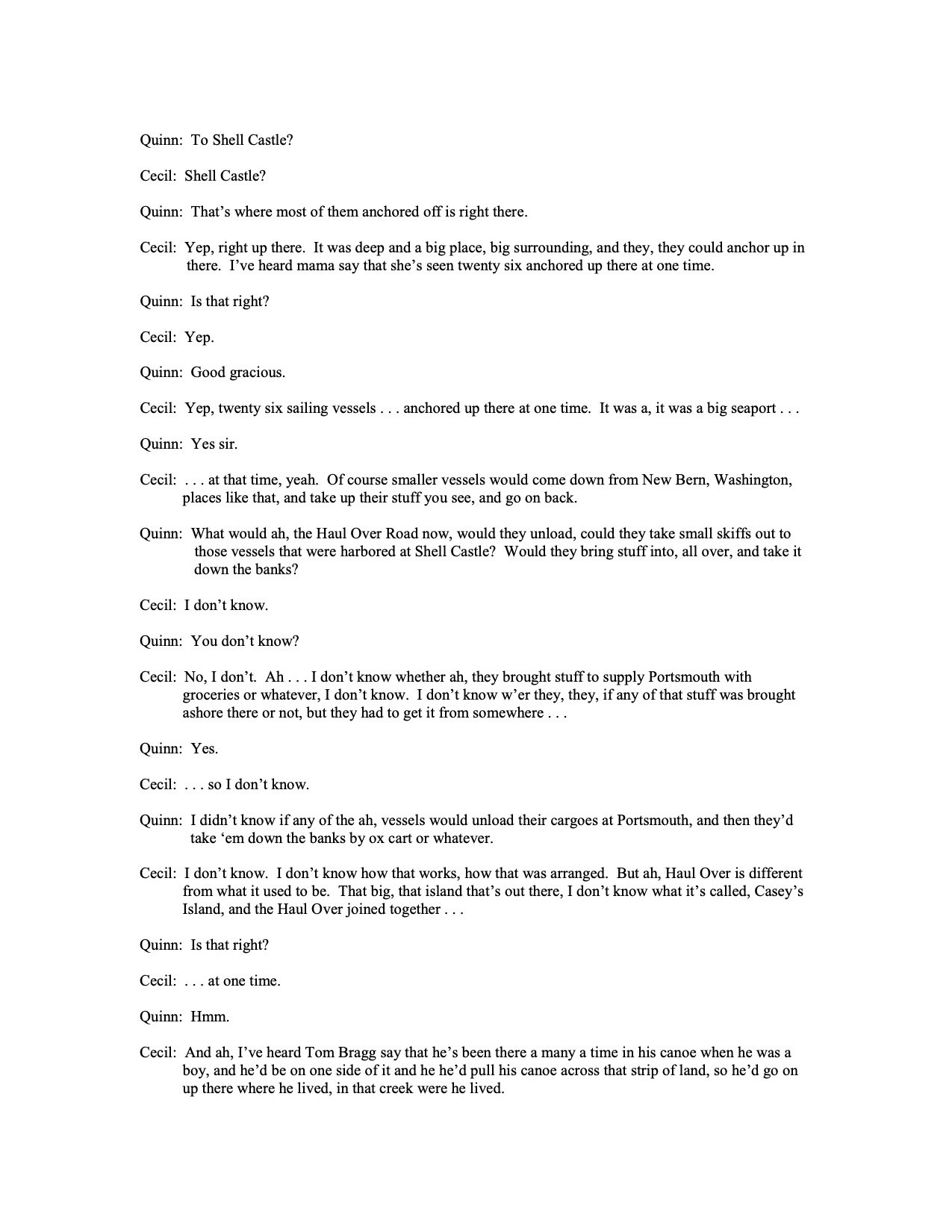
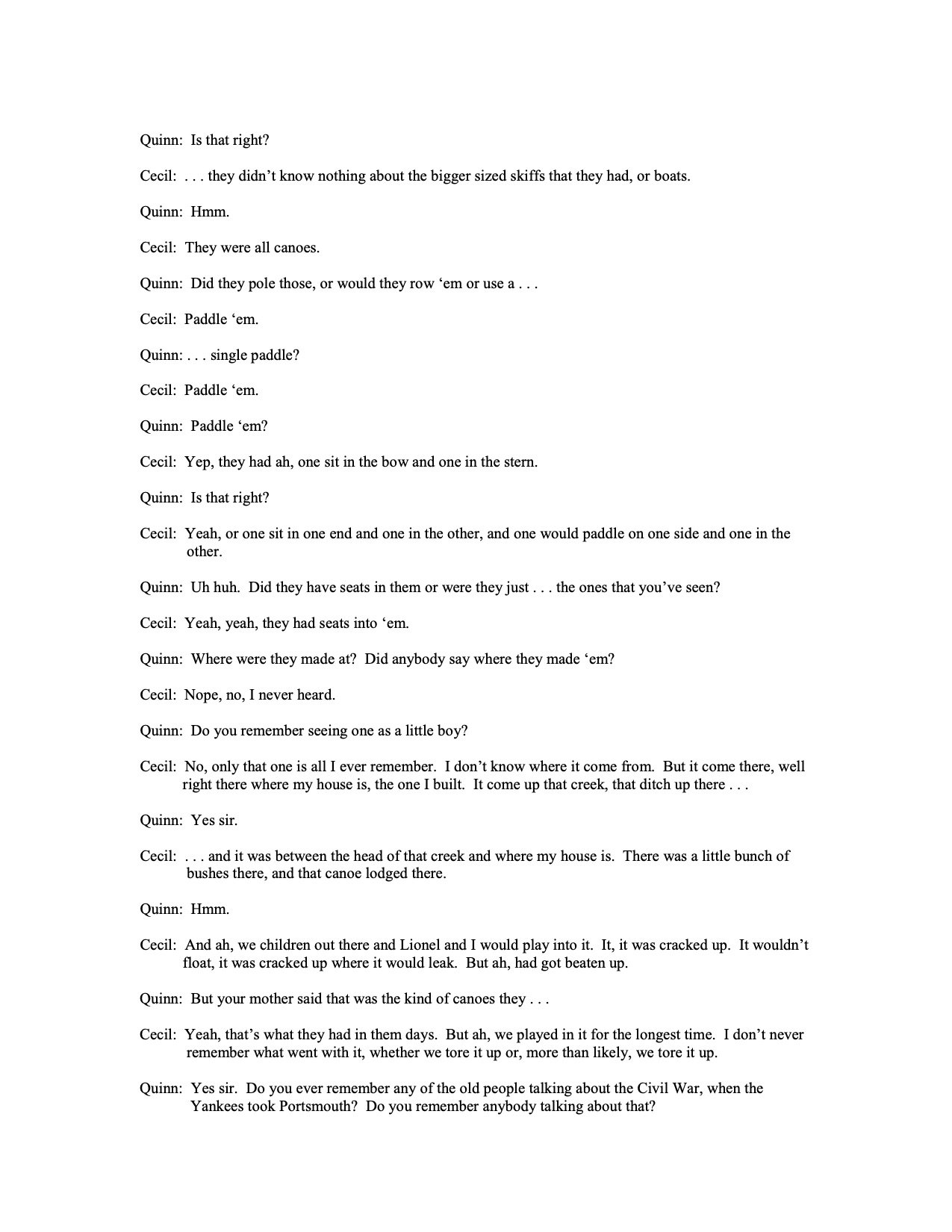


Hazel Gilgo Arthur


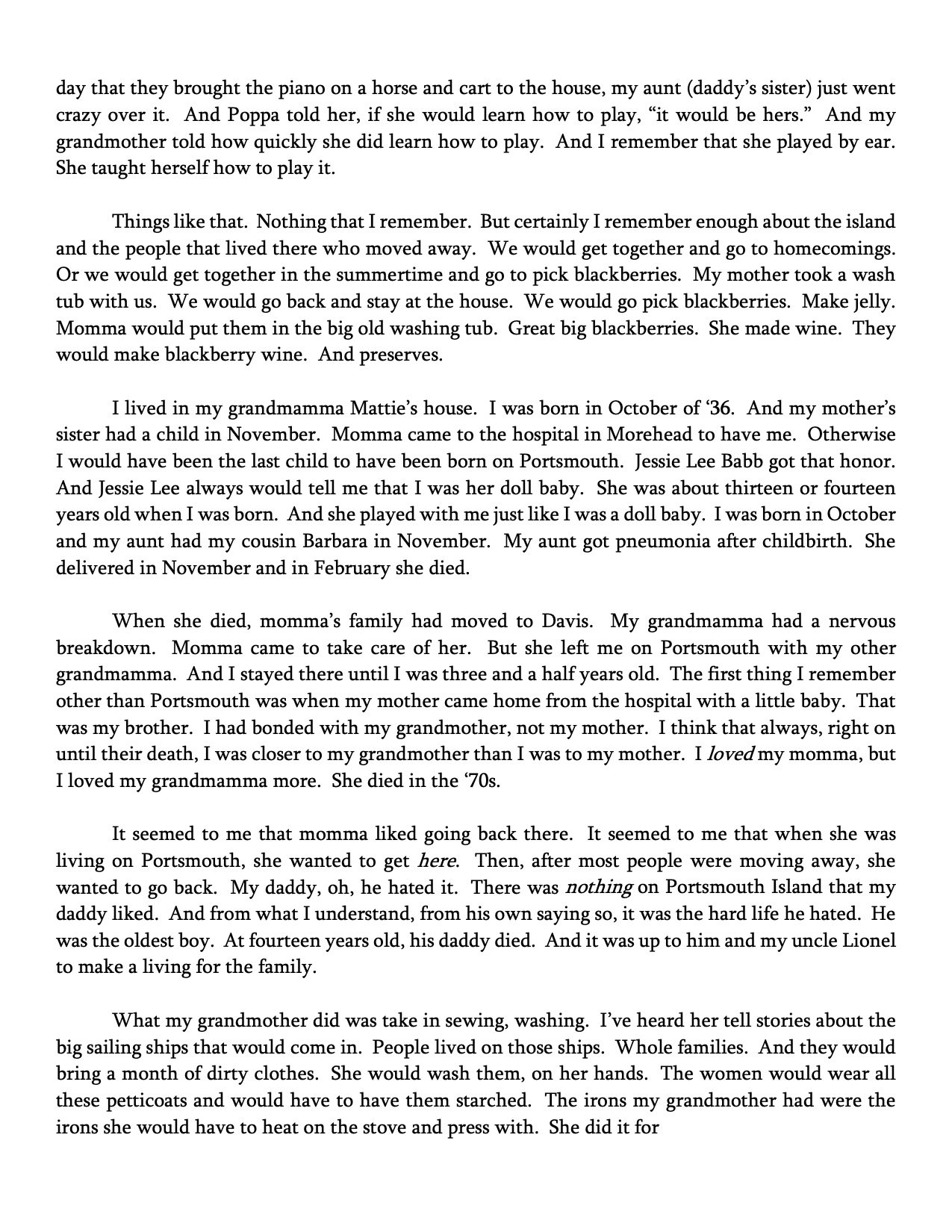
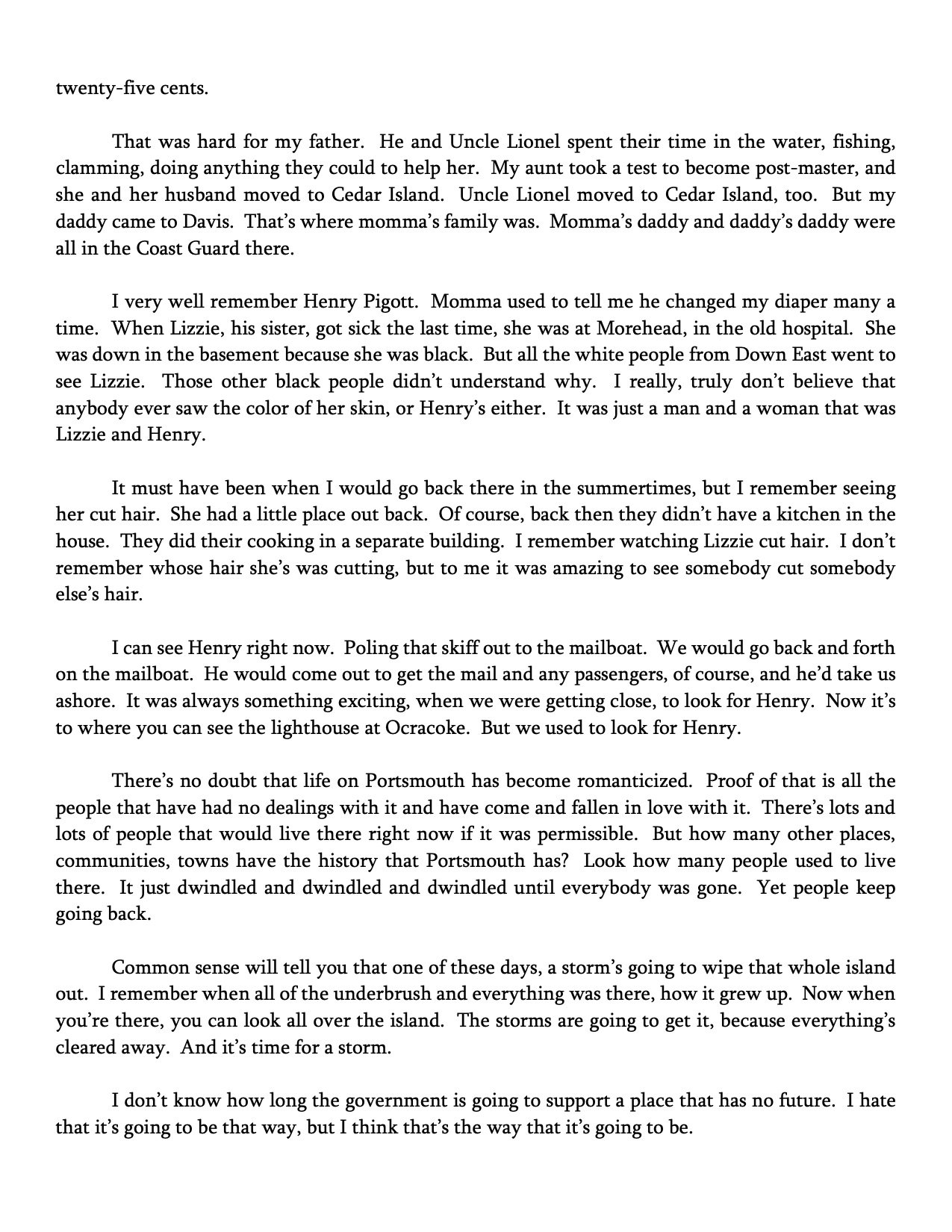
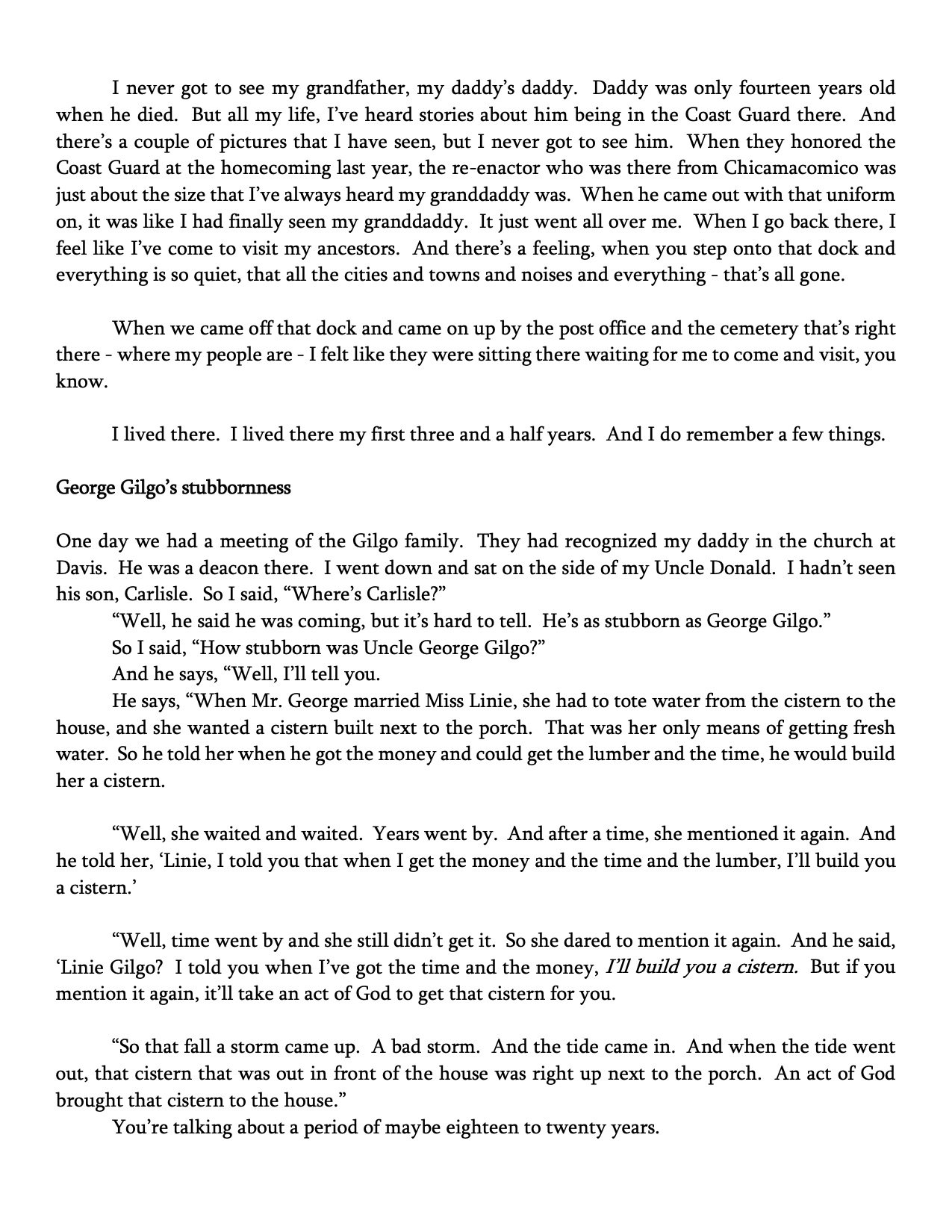

Elizabeth Howard and Marion Babb

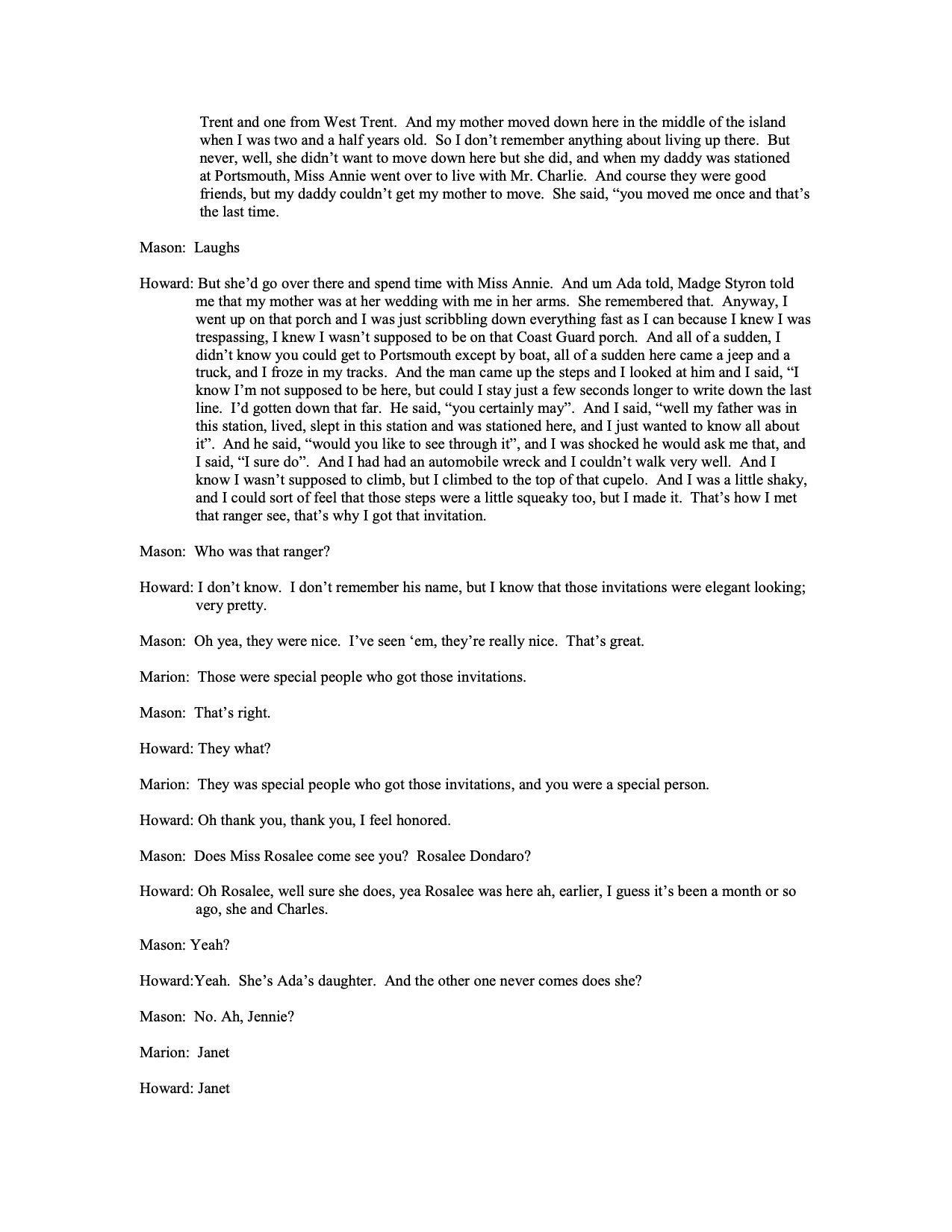

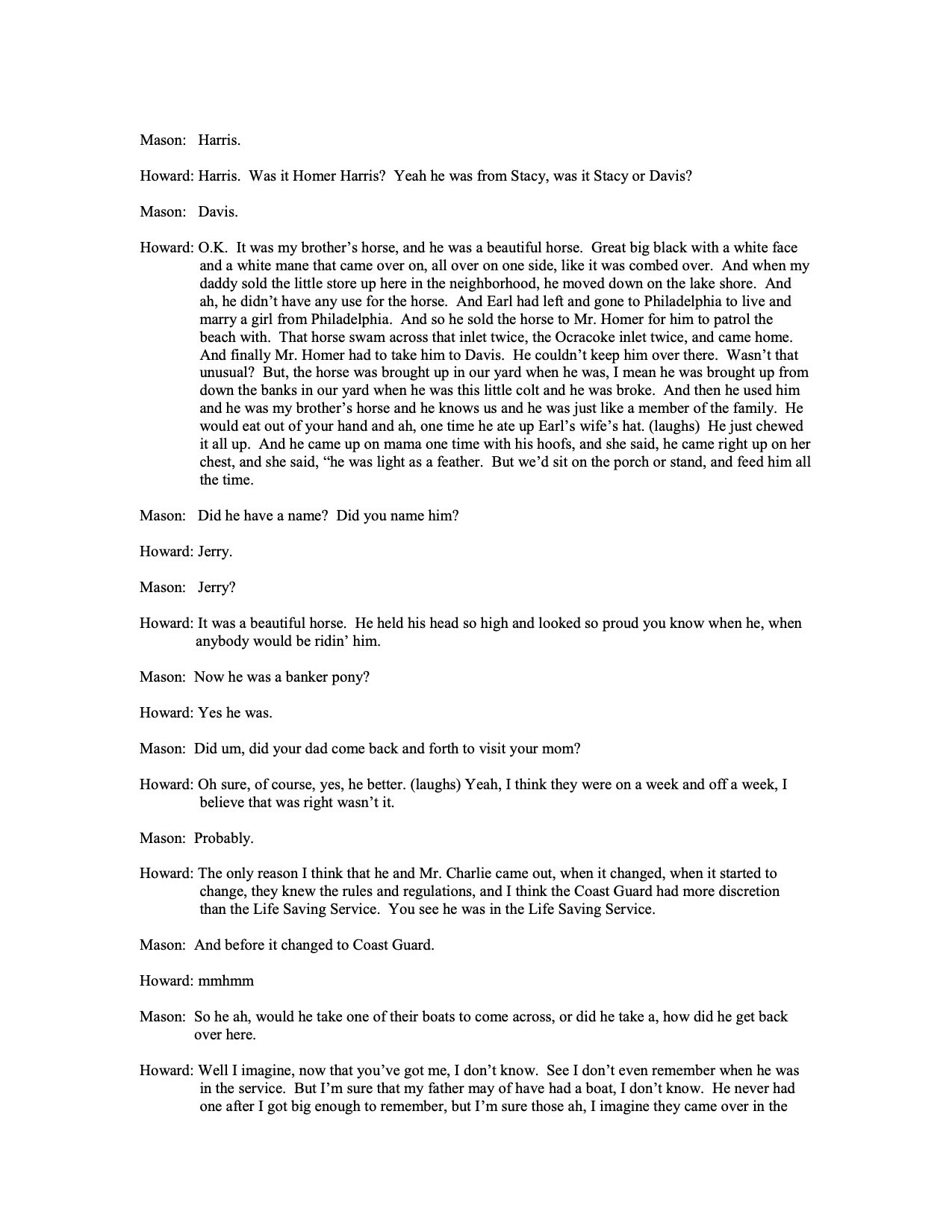
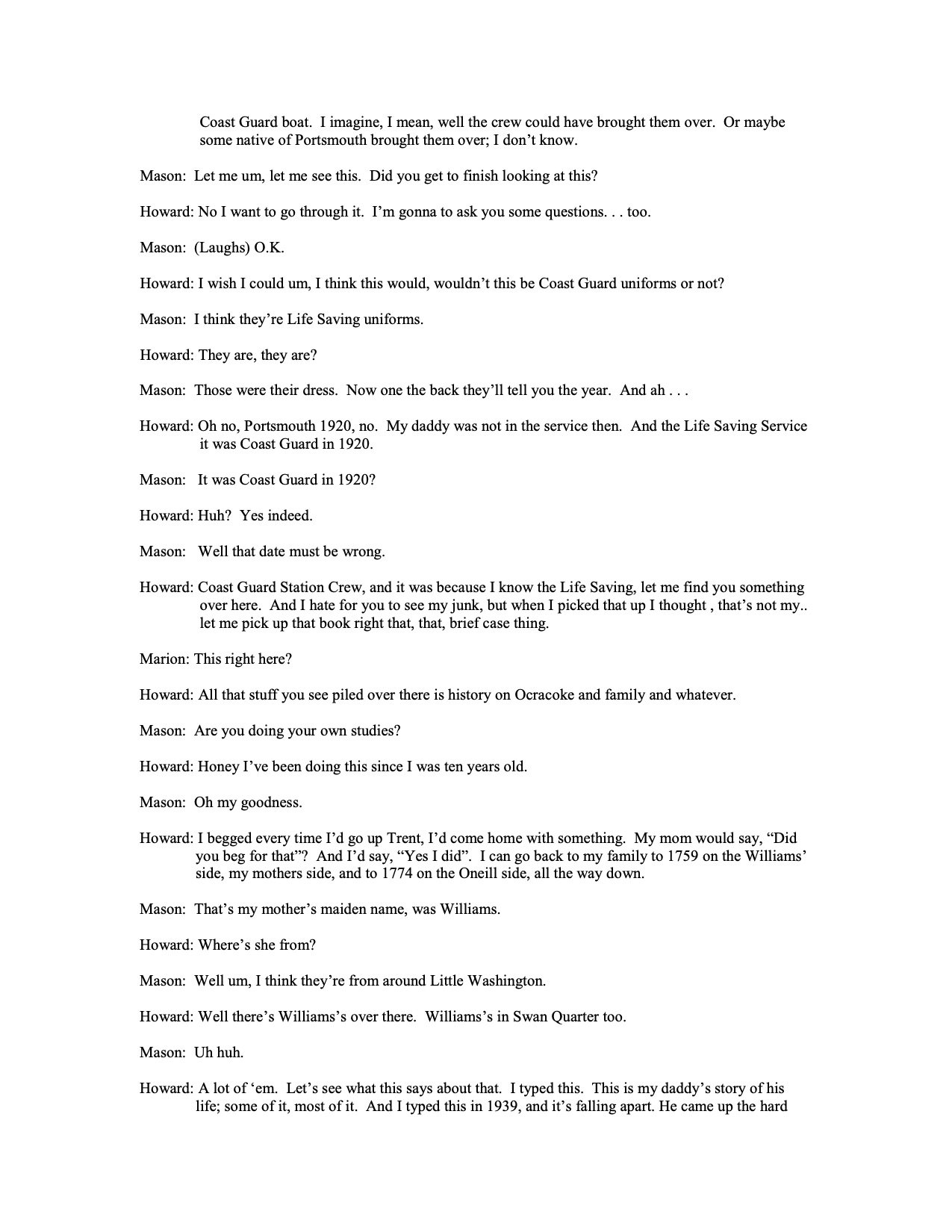
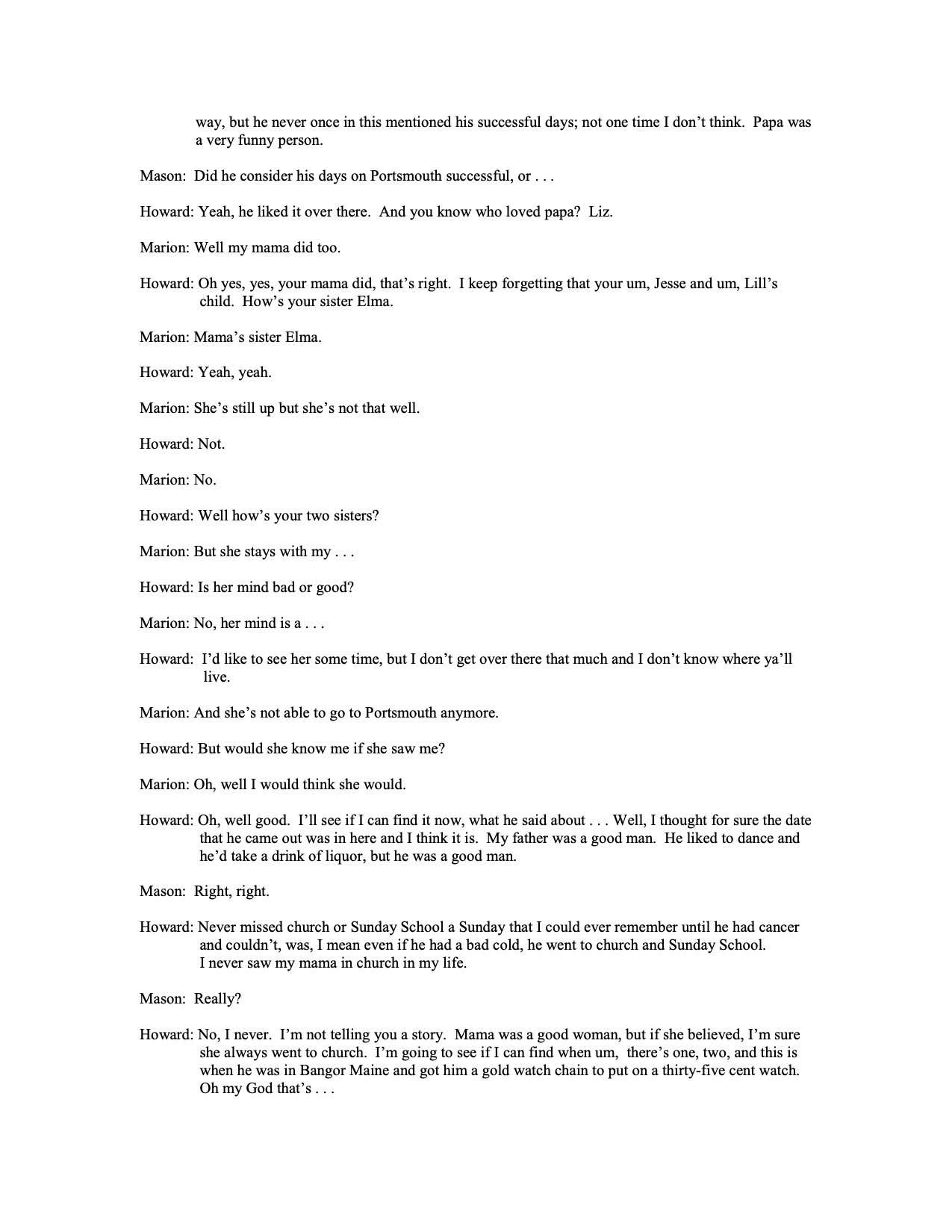
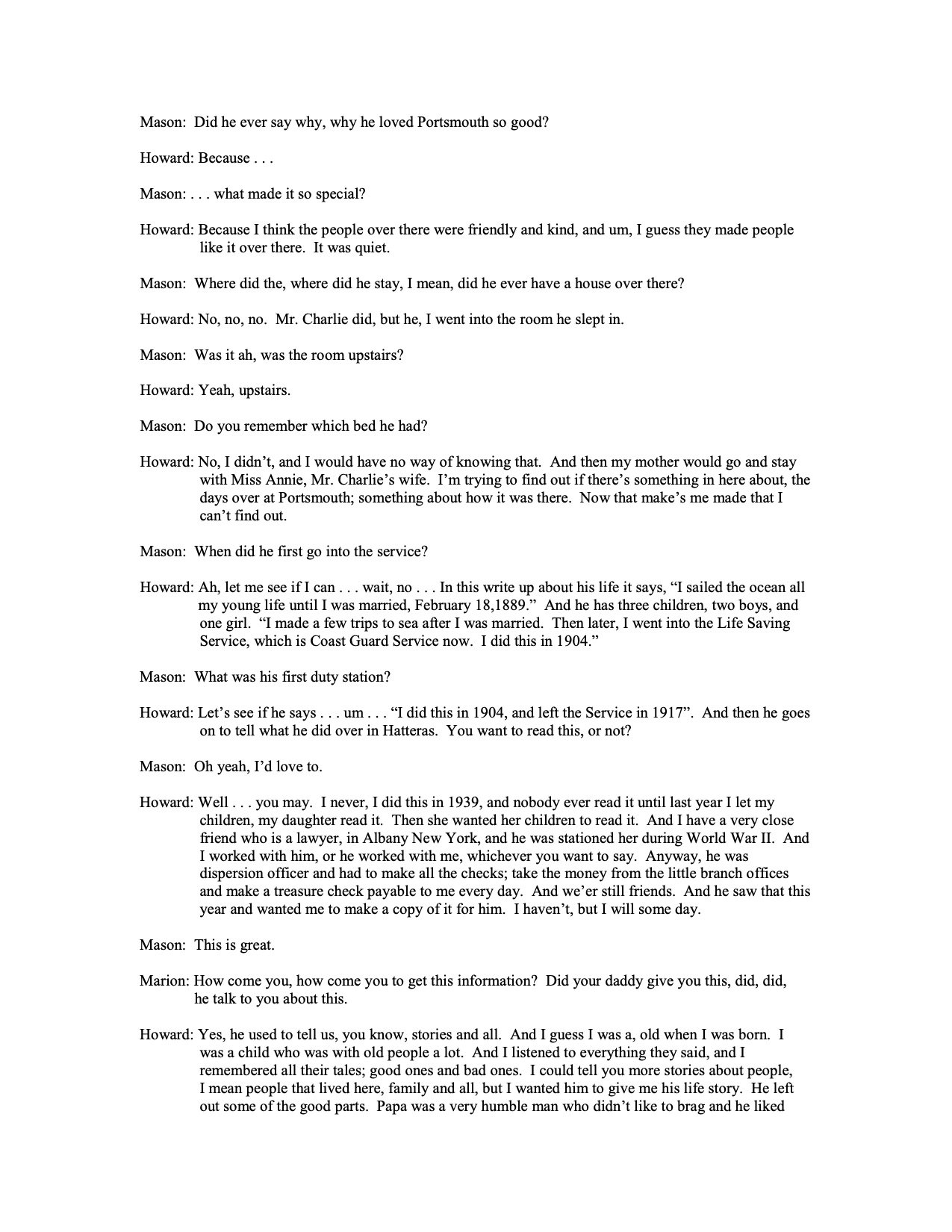
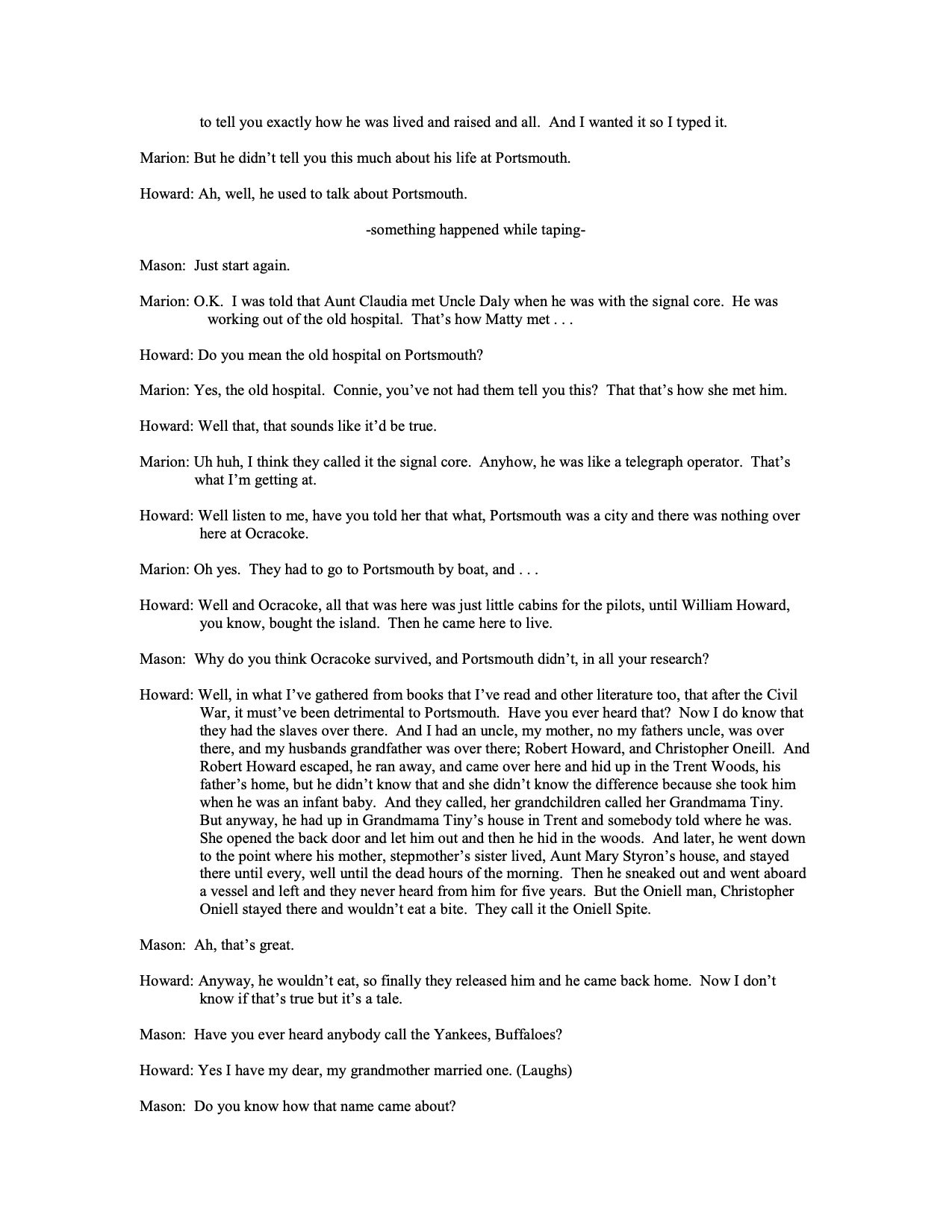
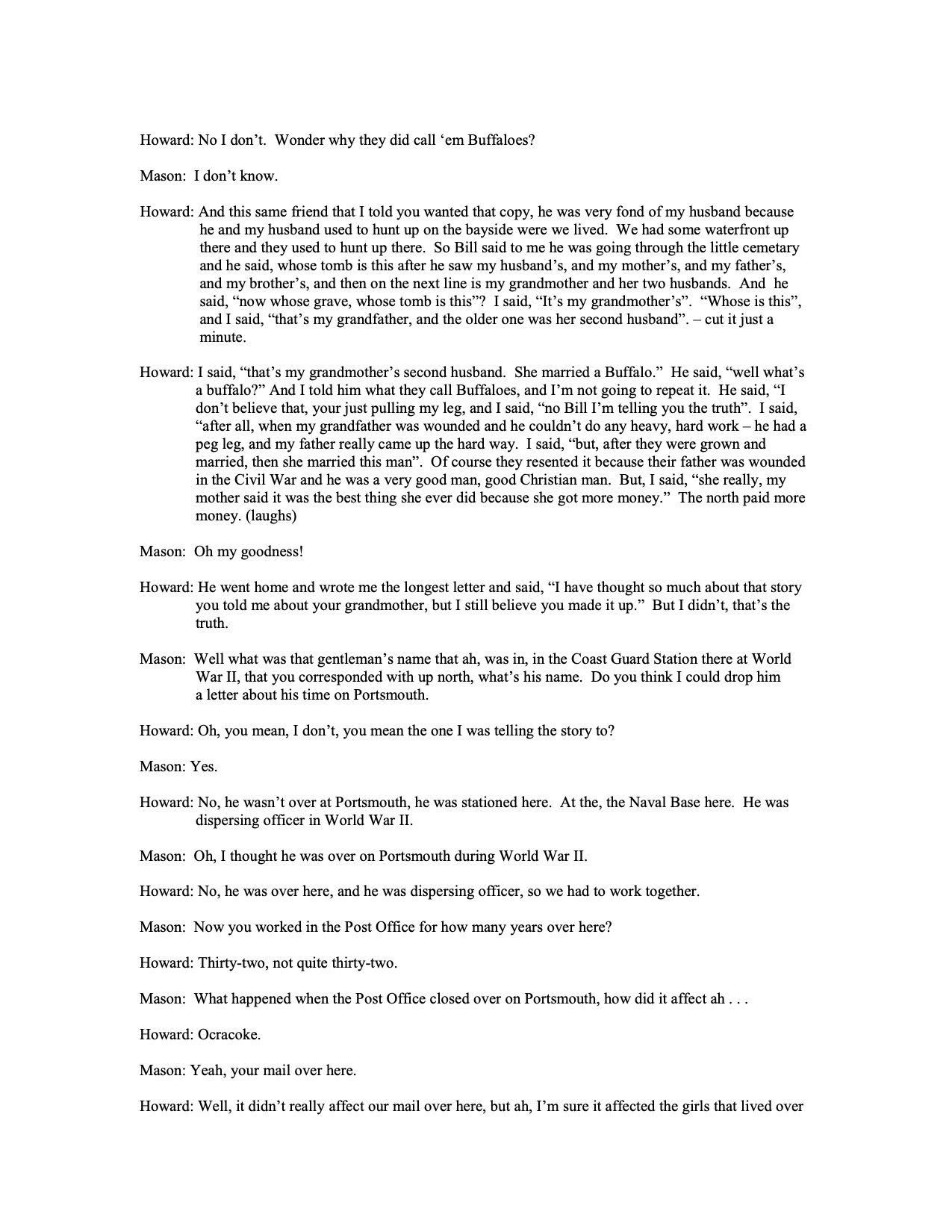
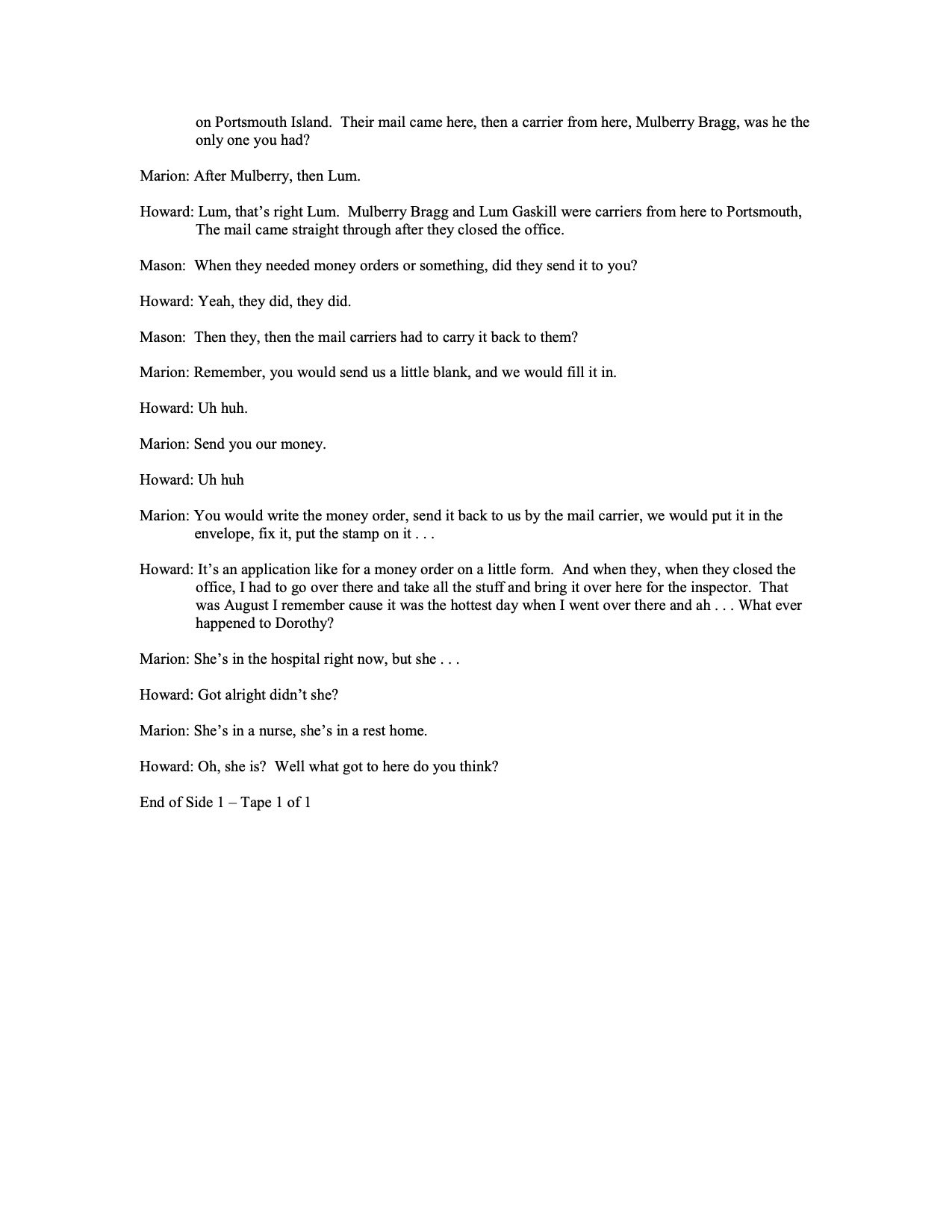
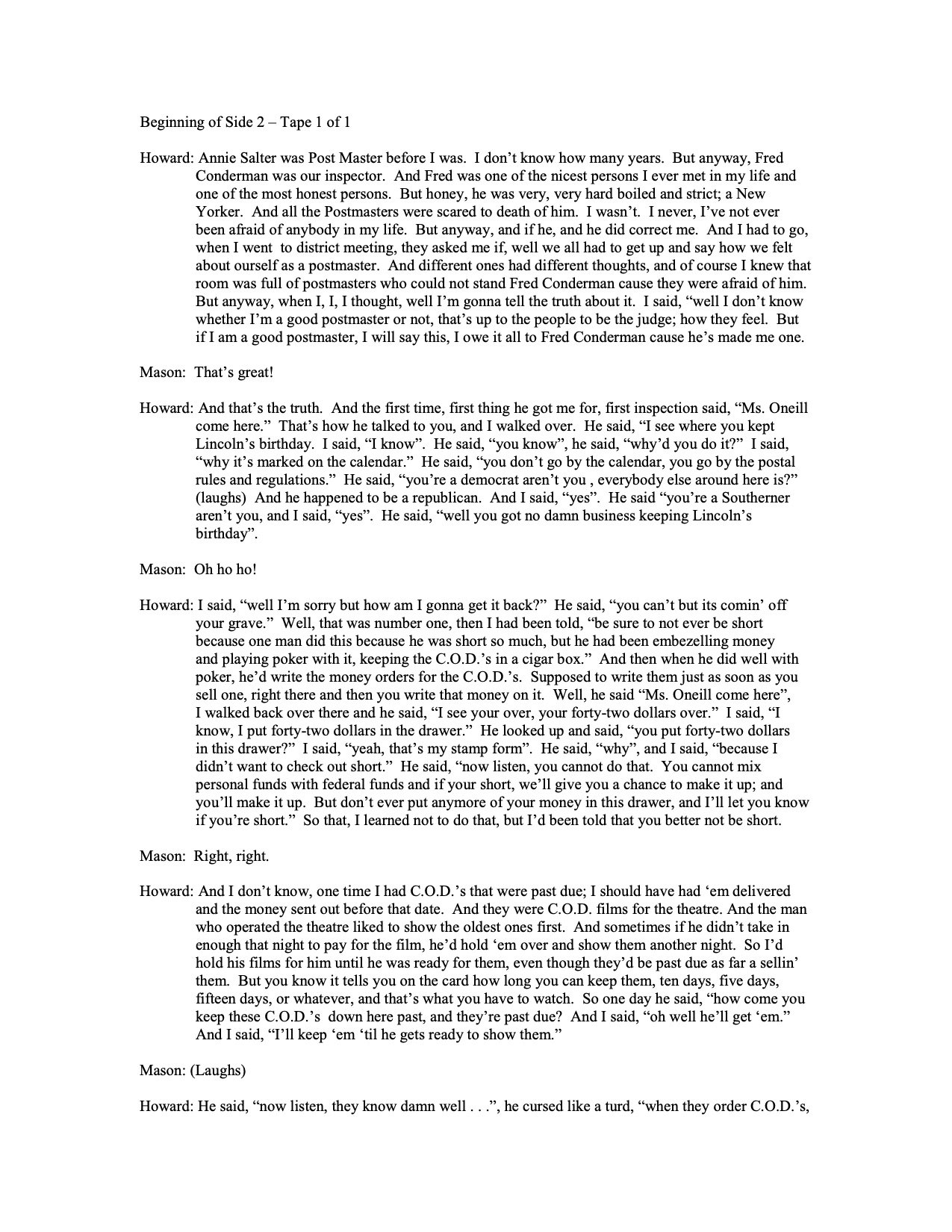

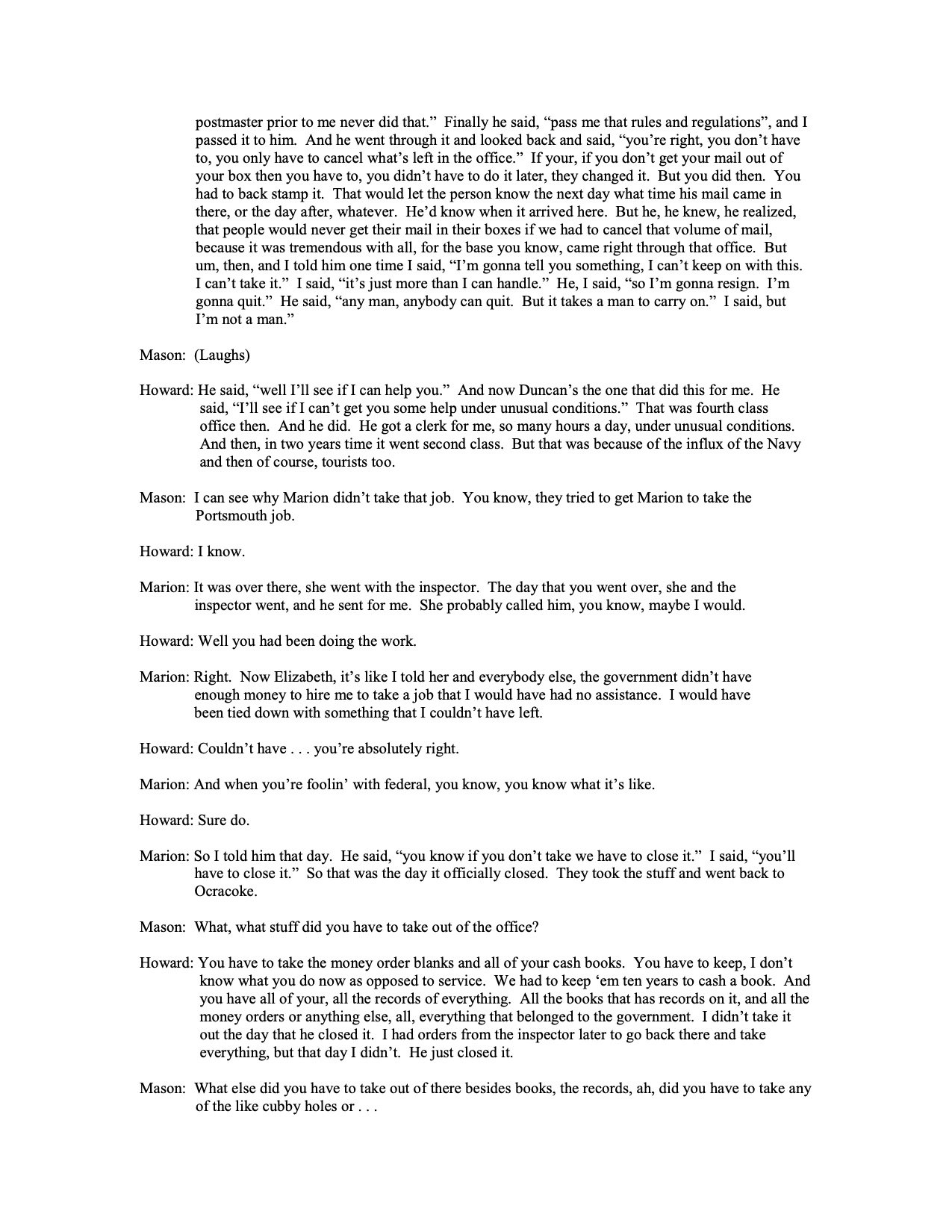
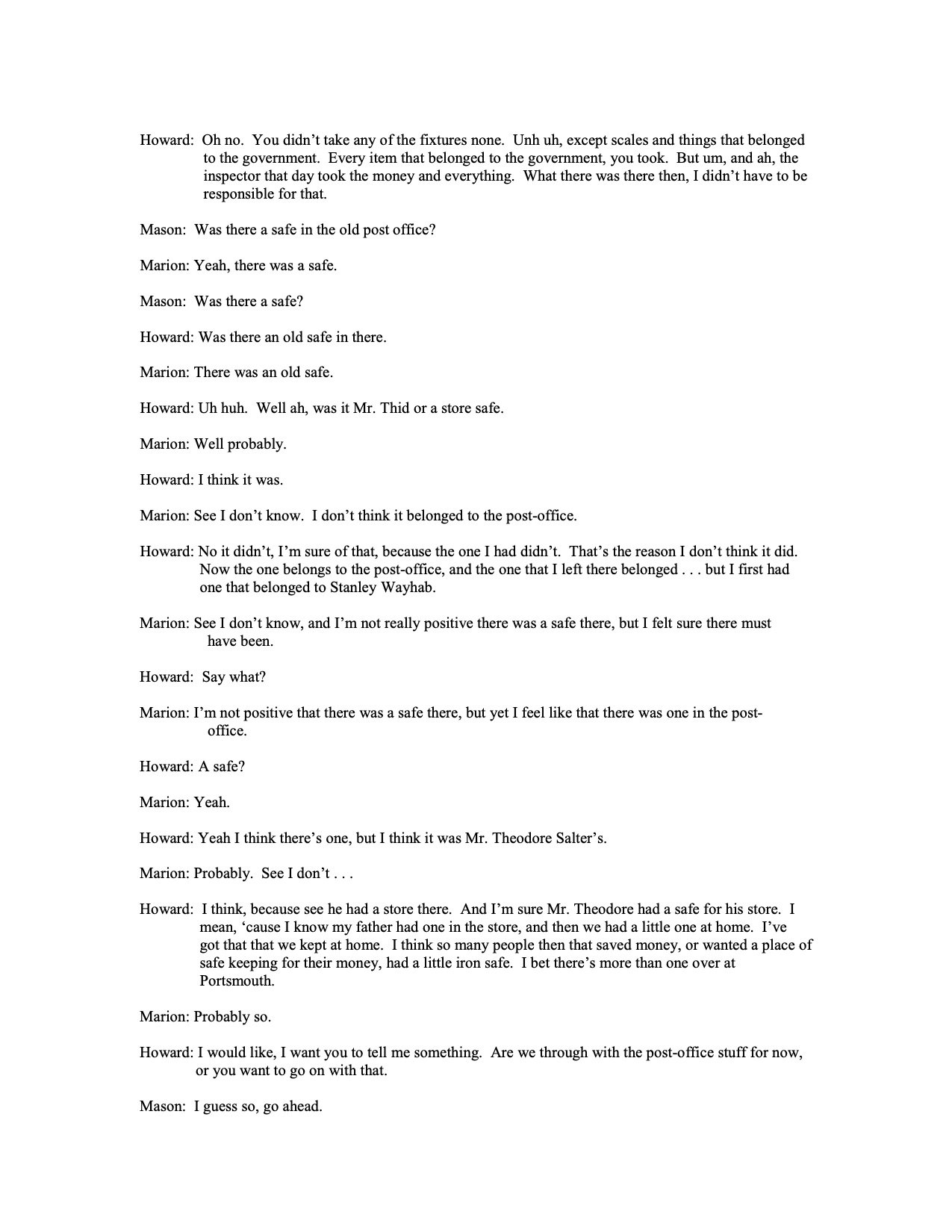
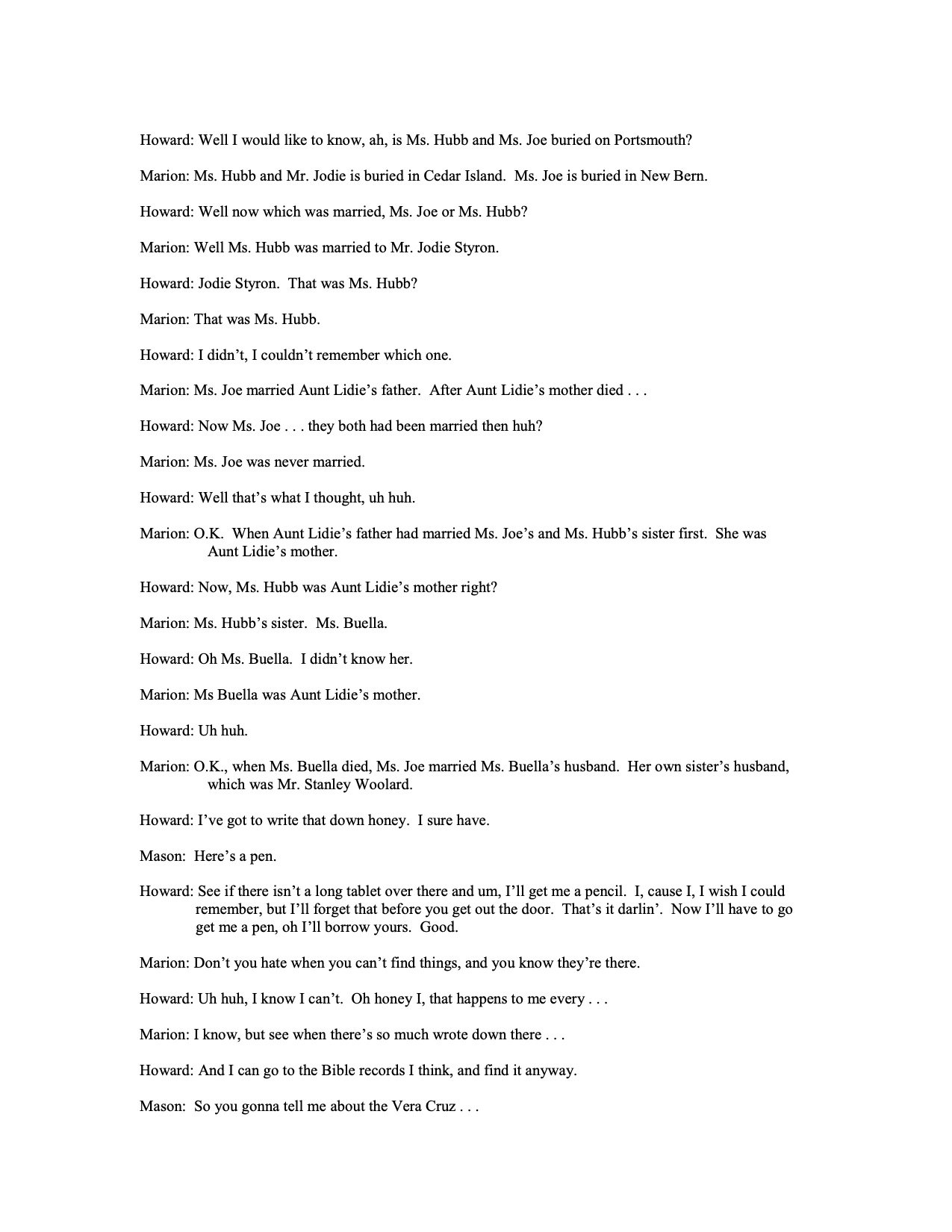
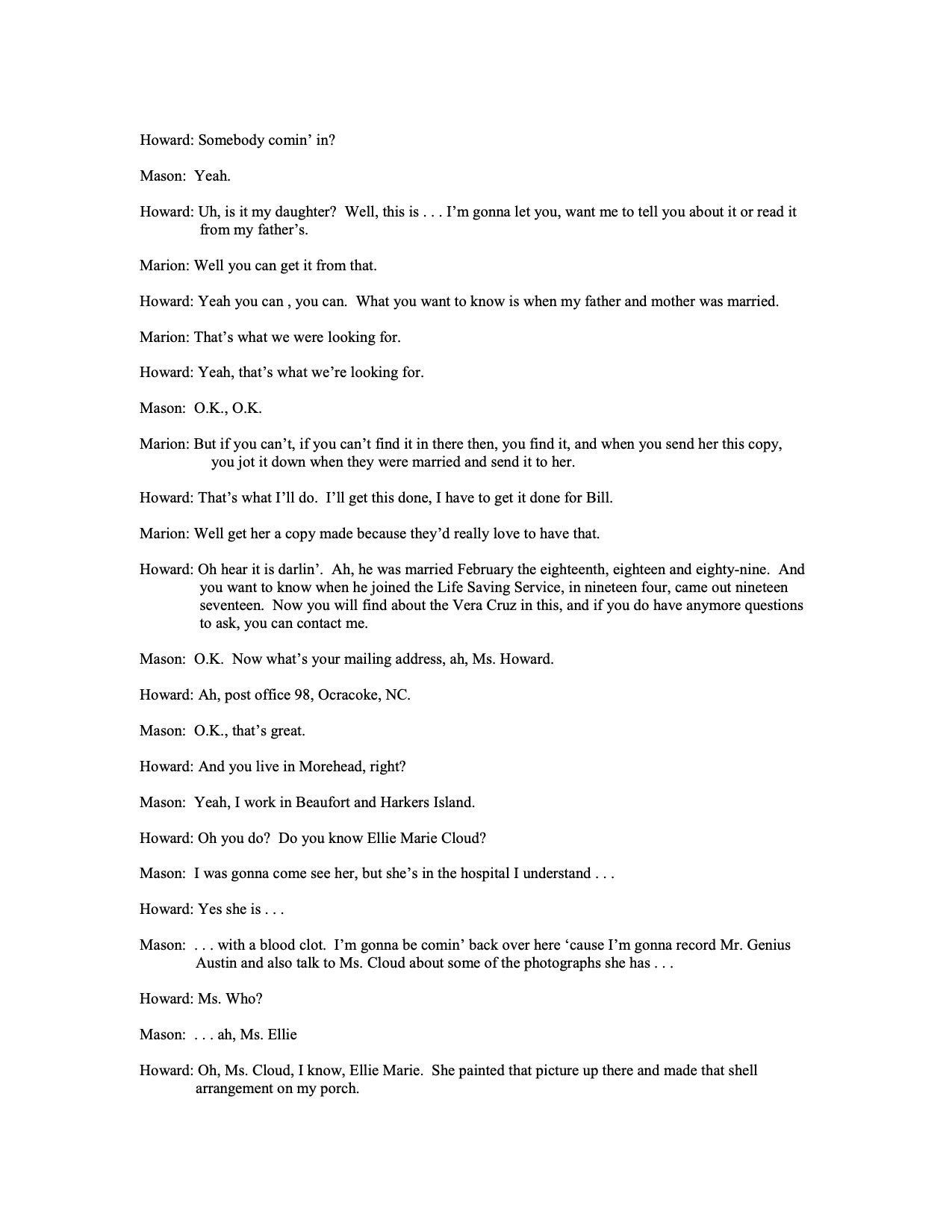

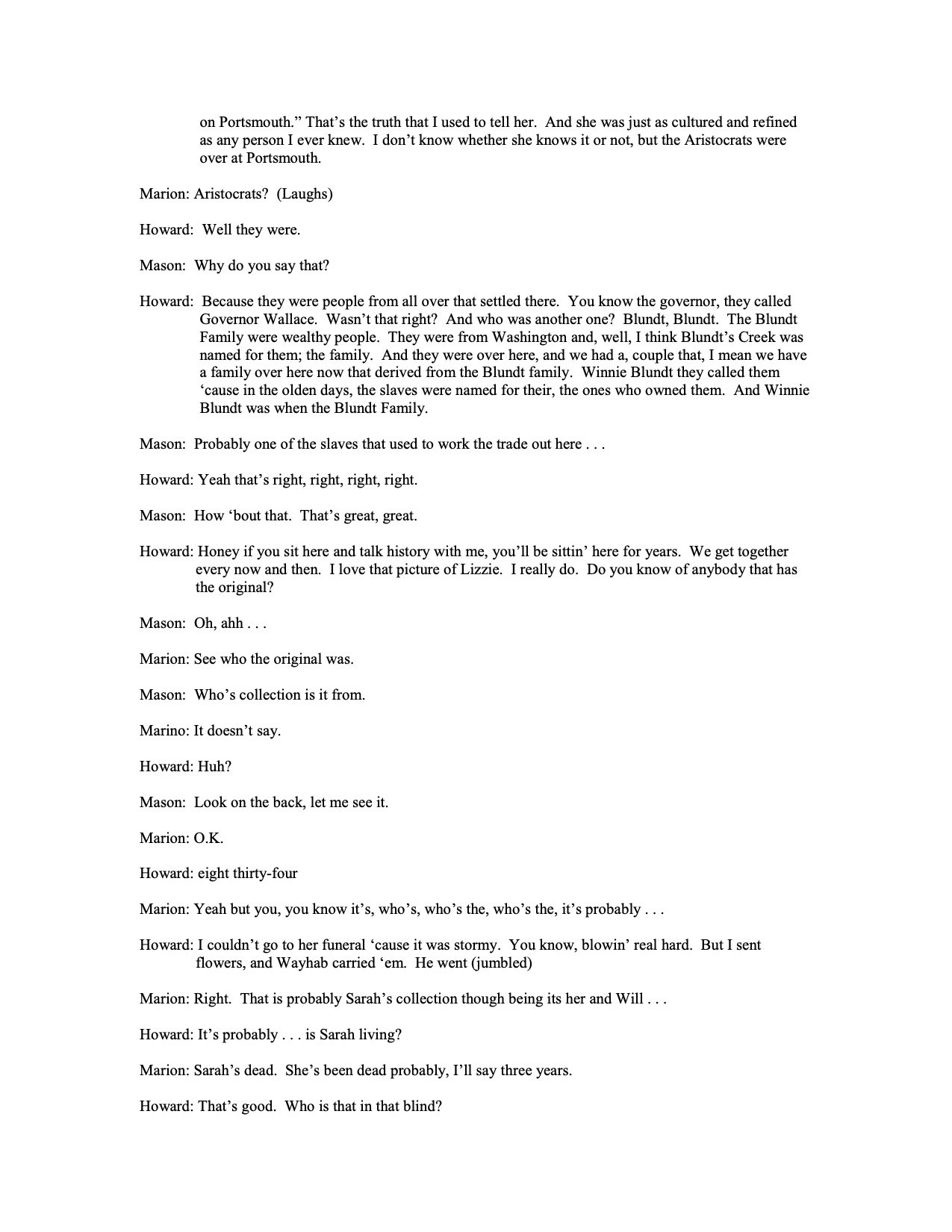
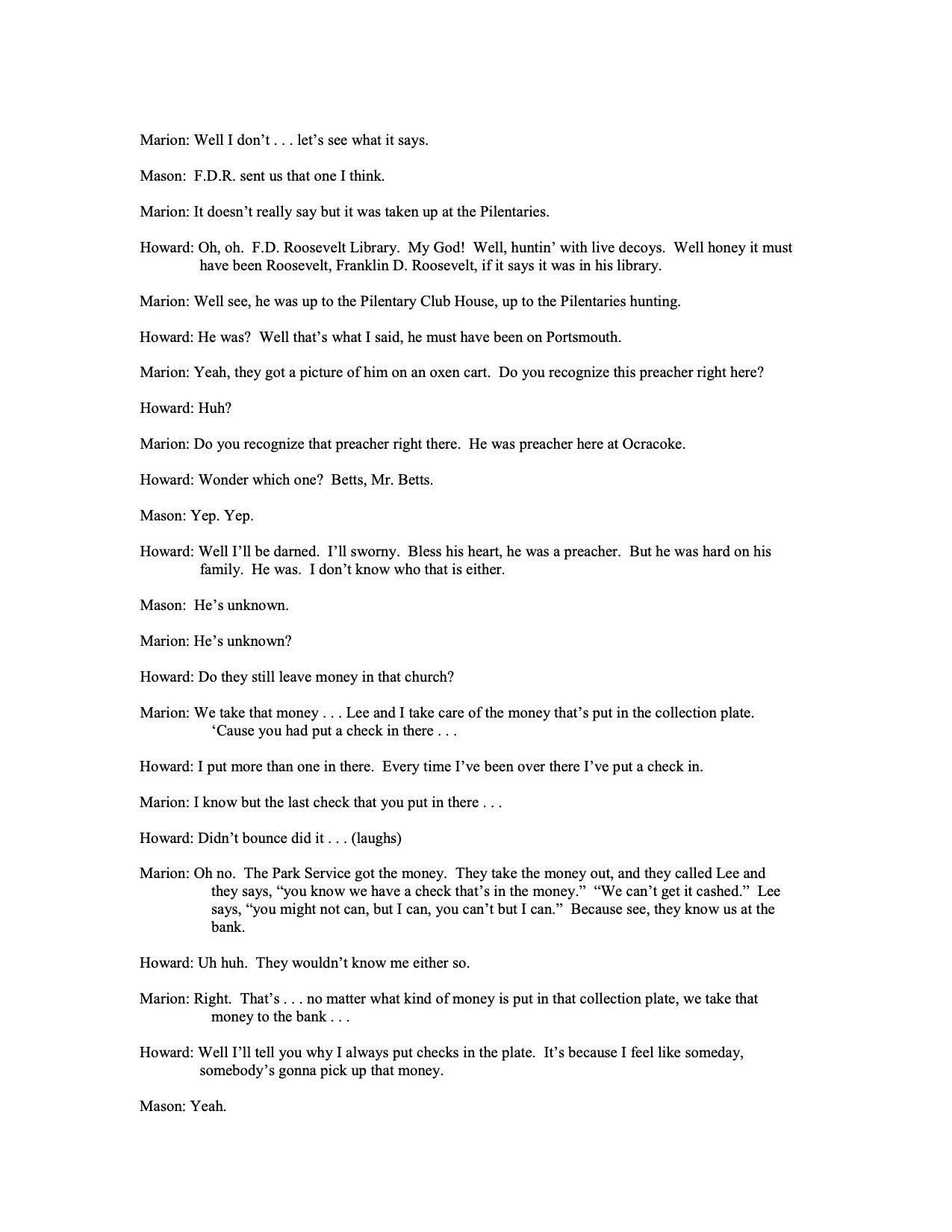
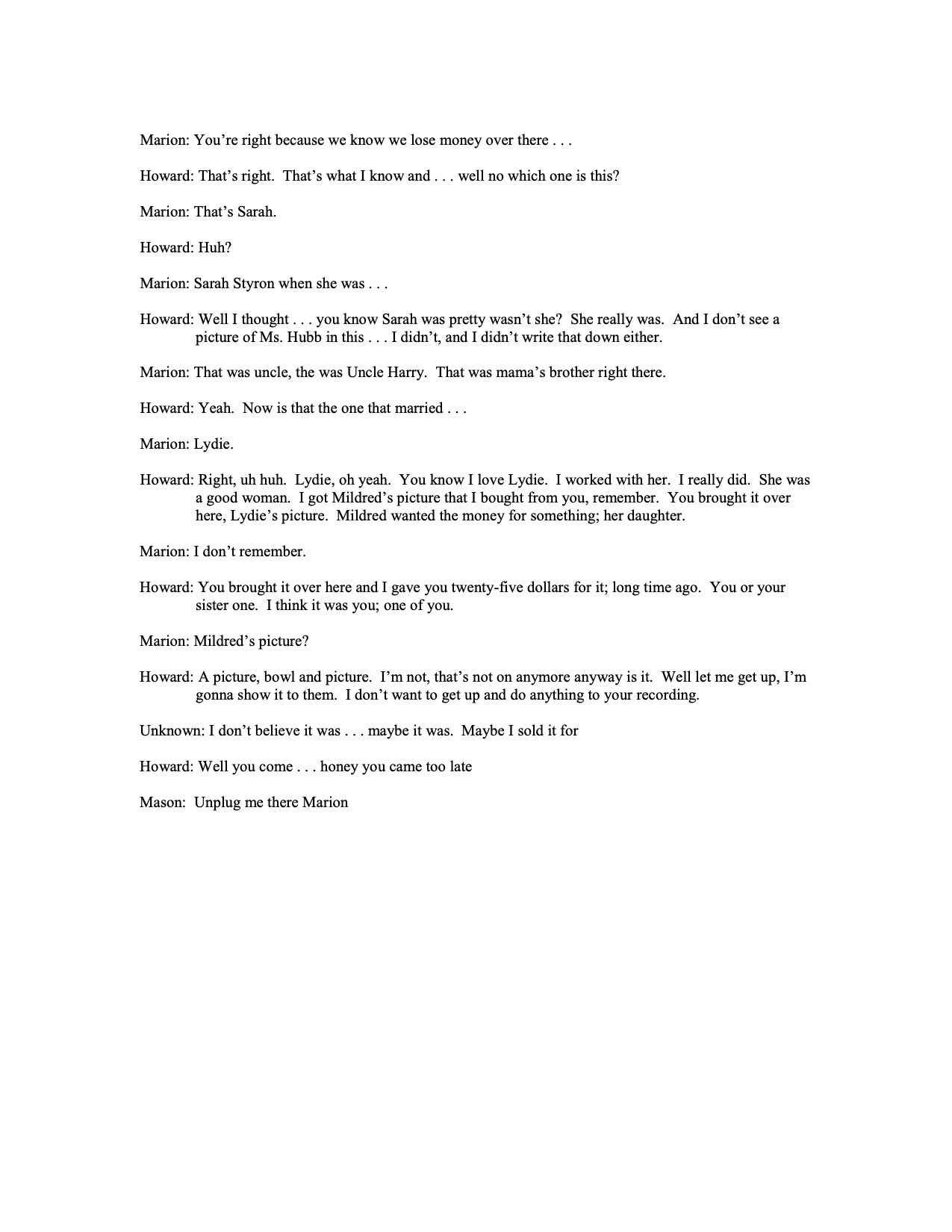
Henry Pigott
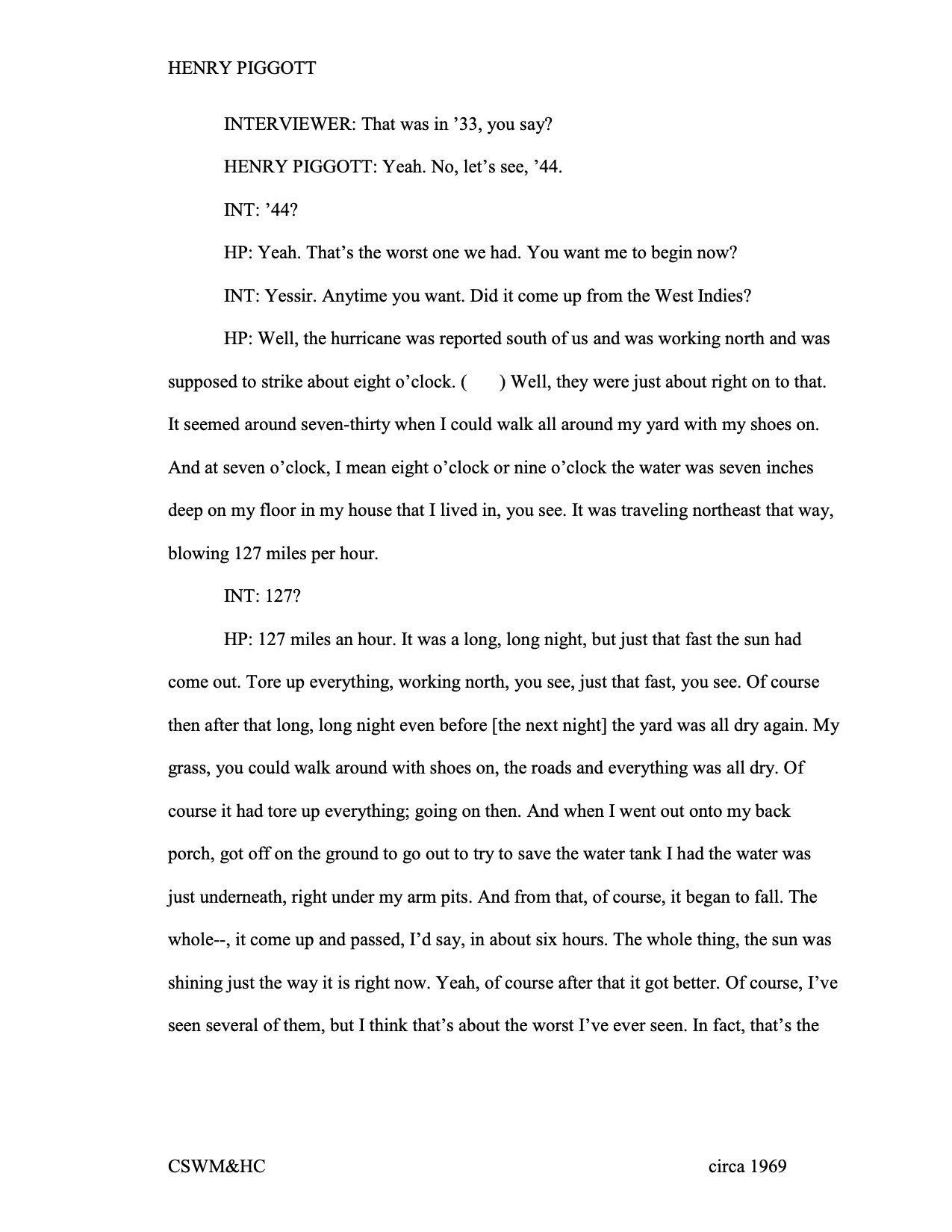
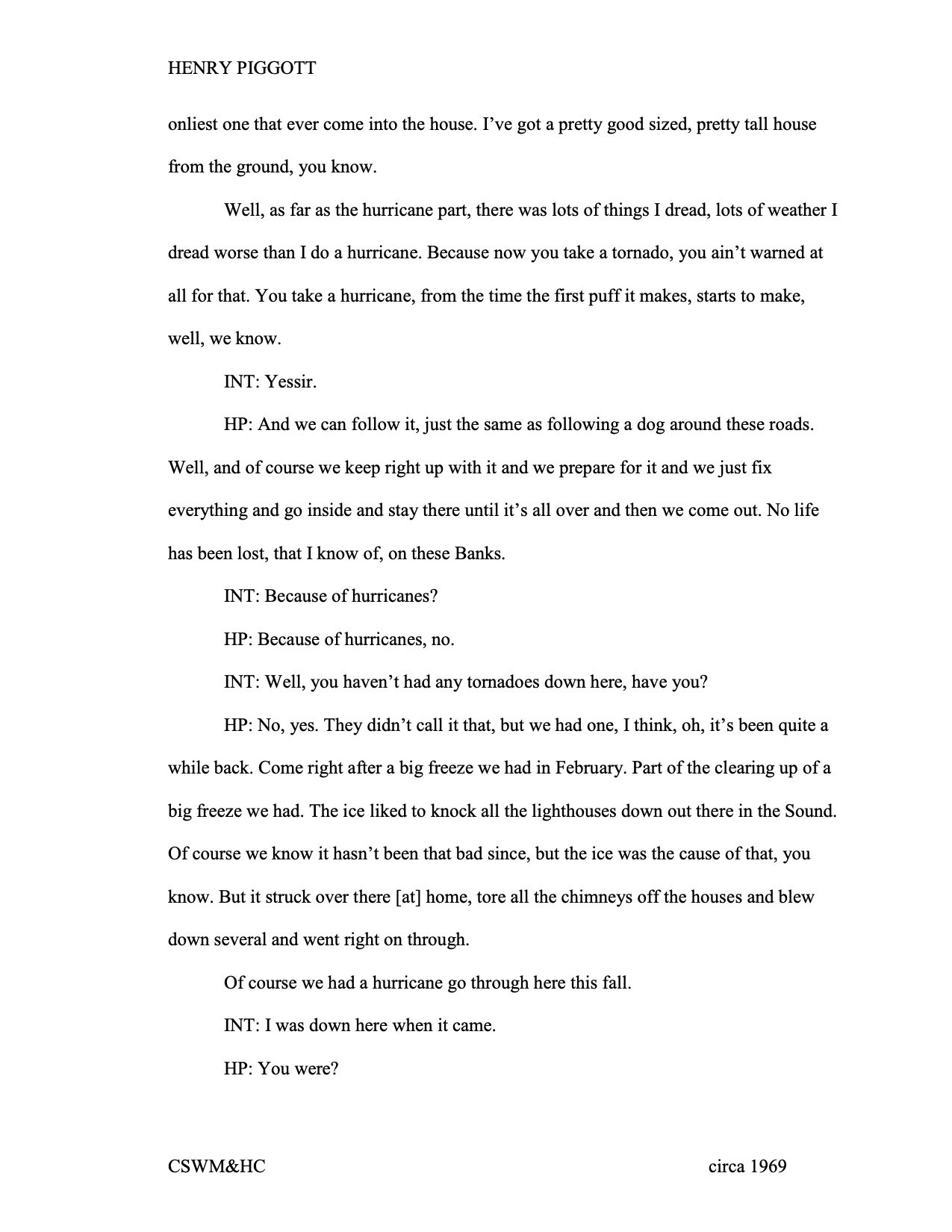
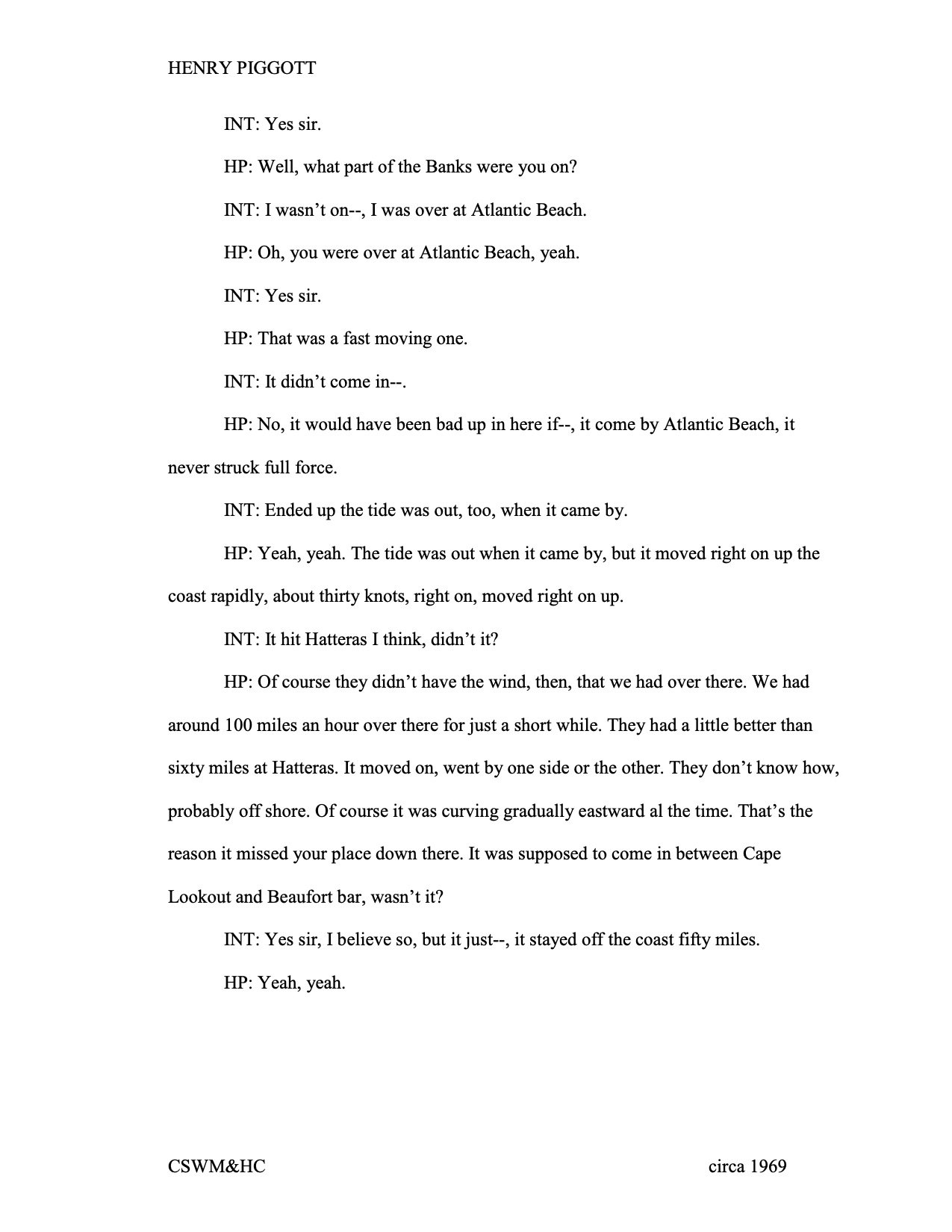

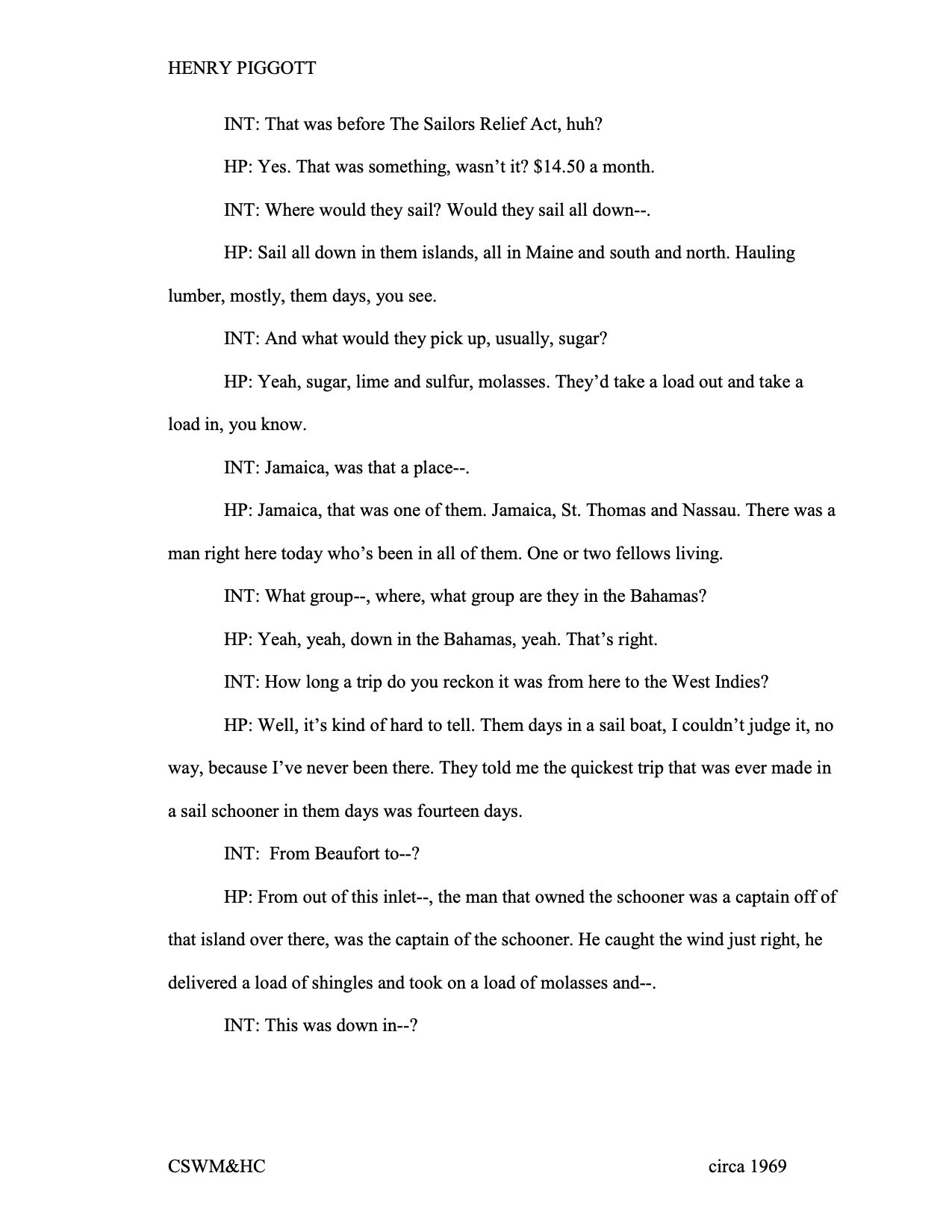

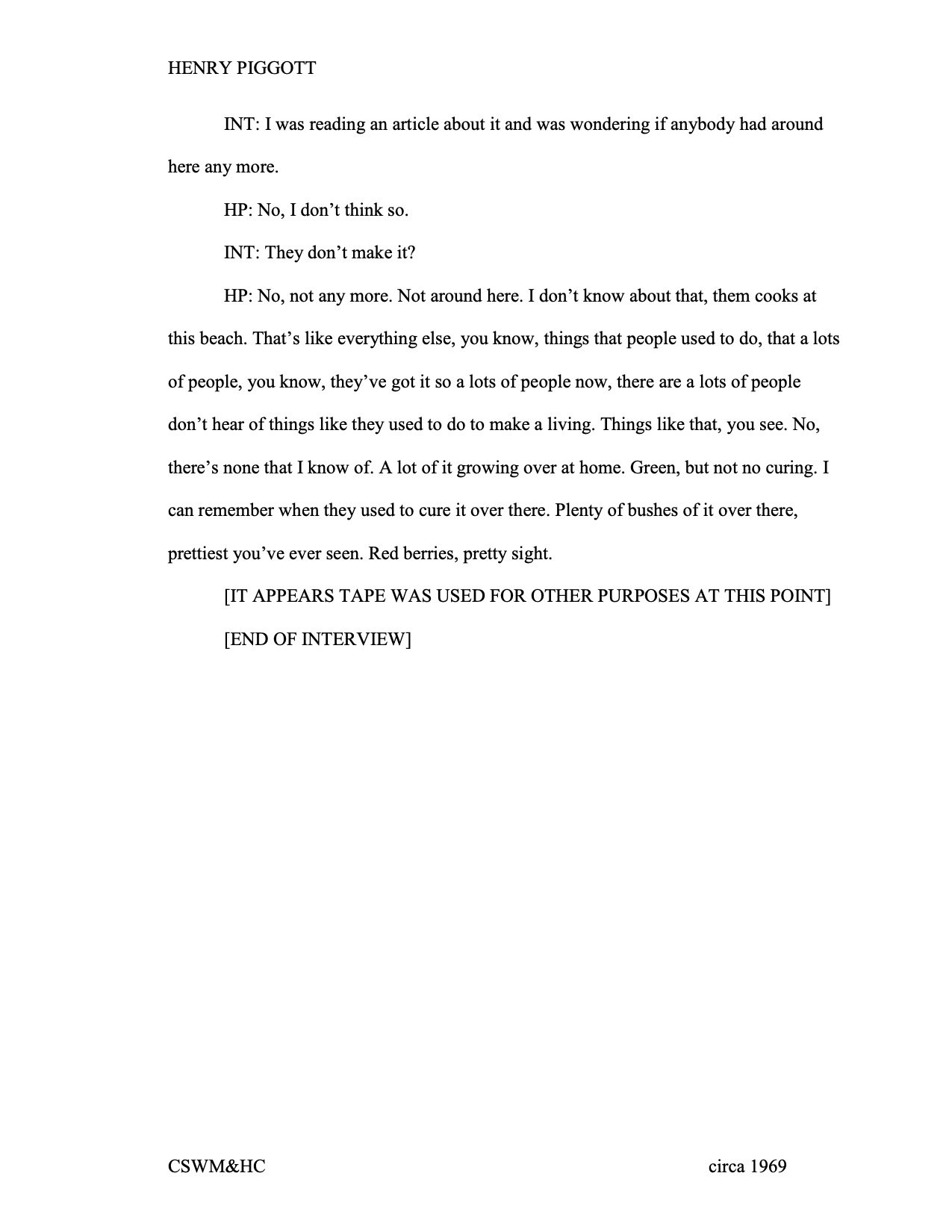
Jakie Robertson
